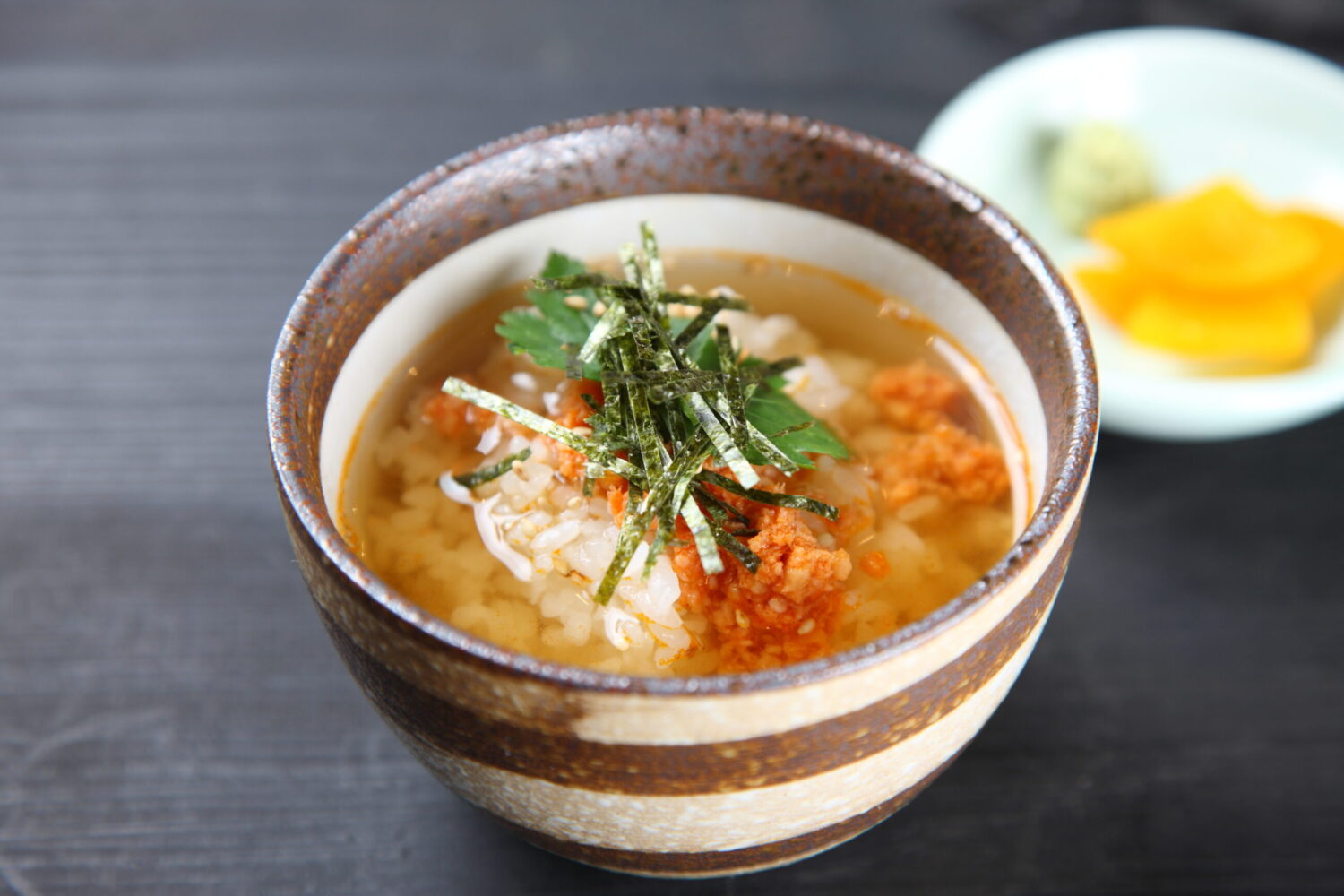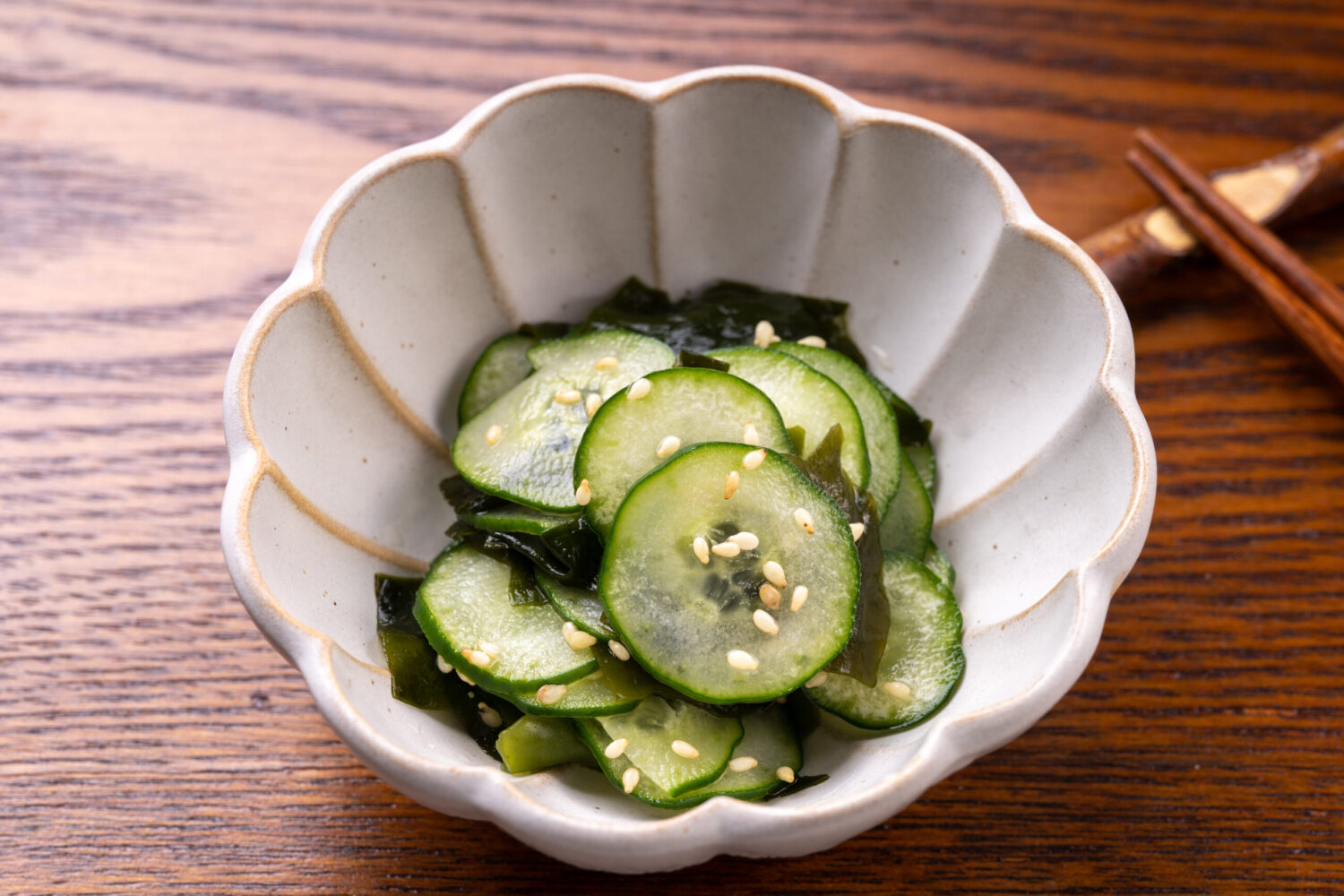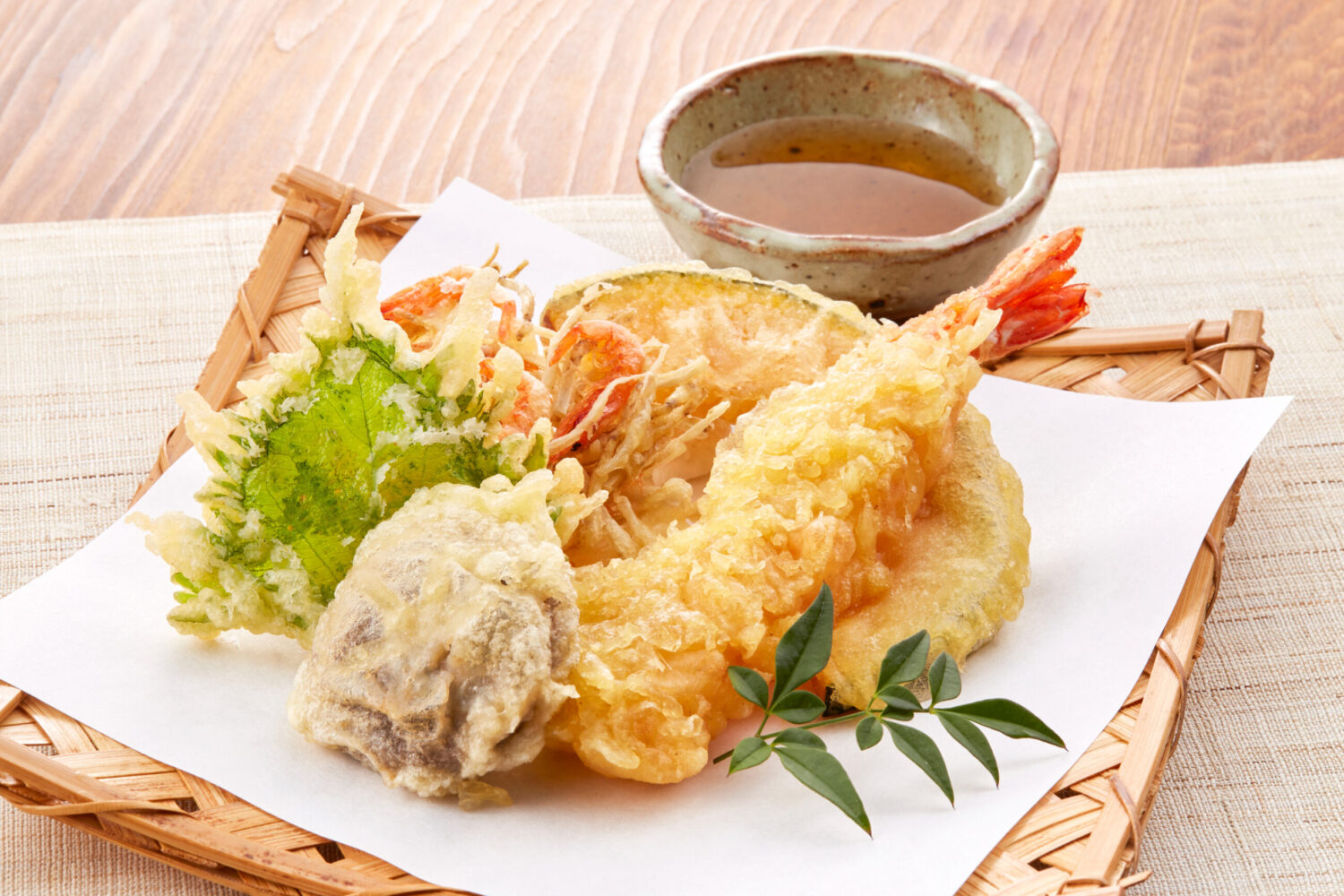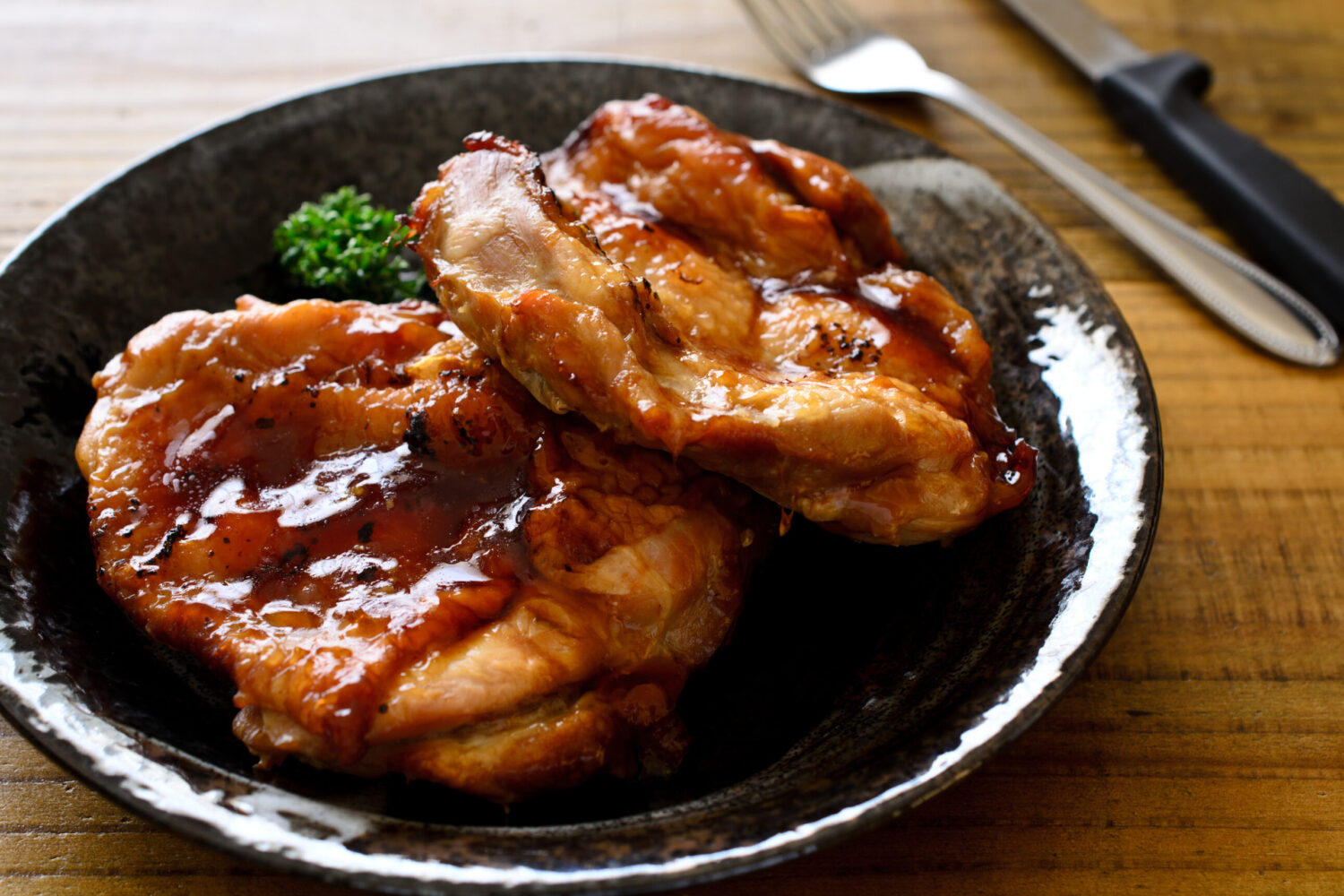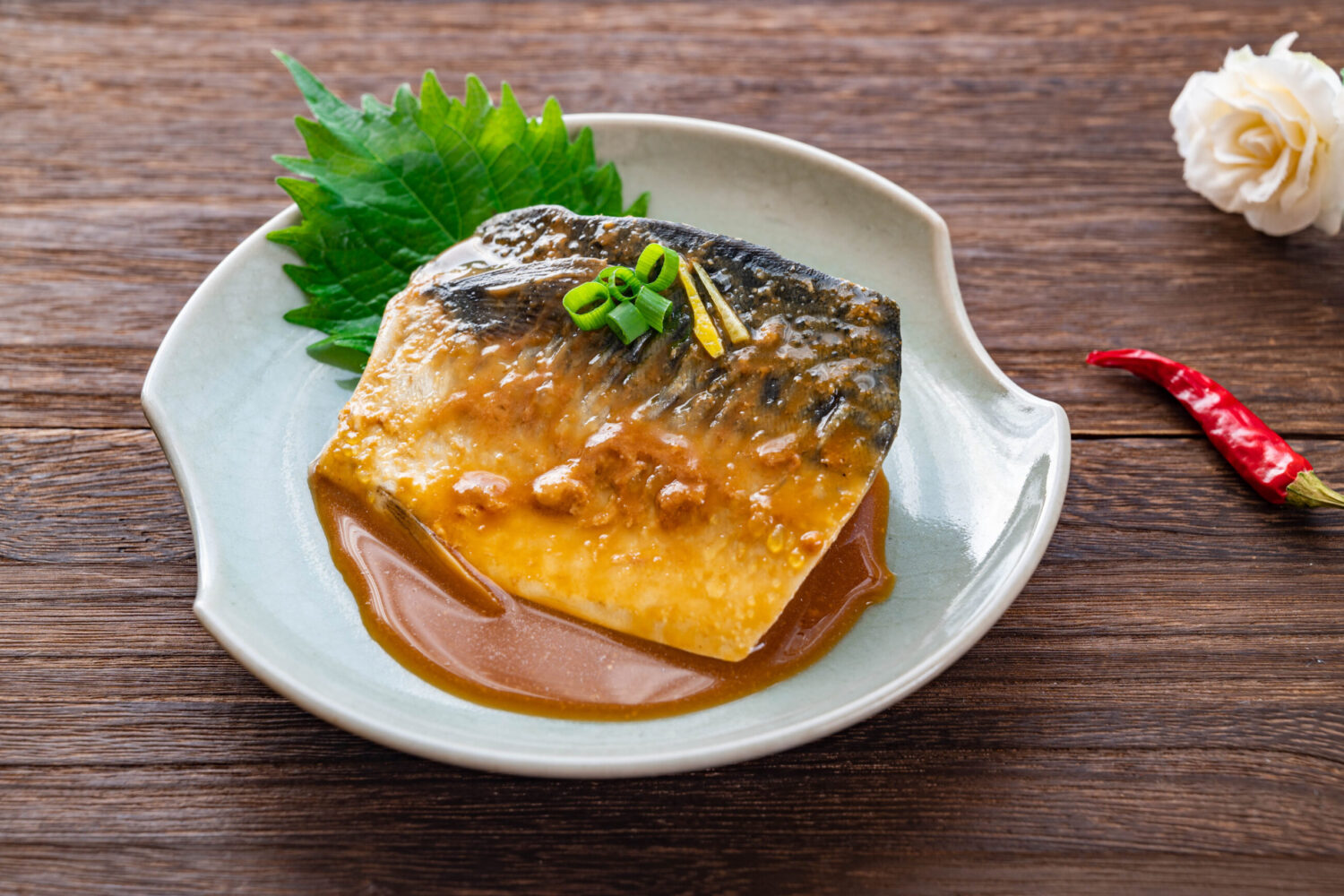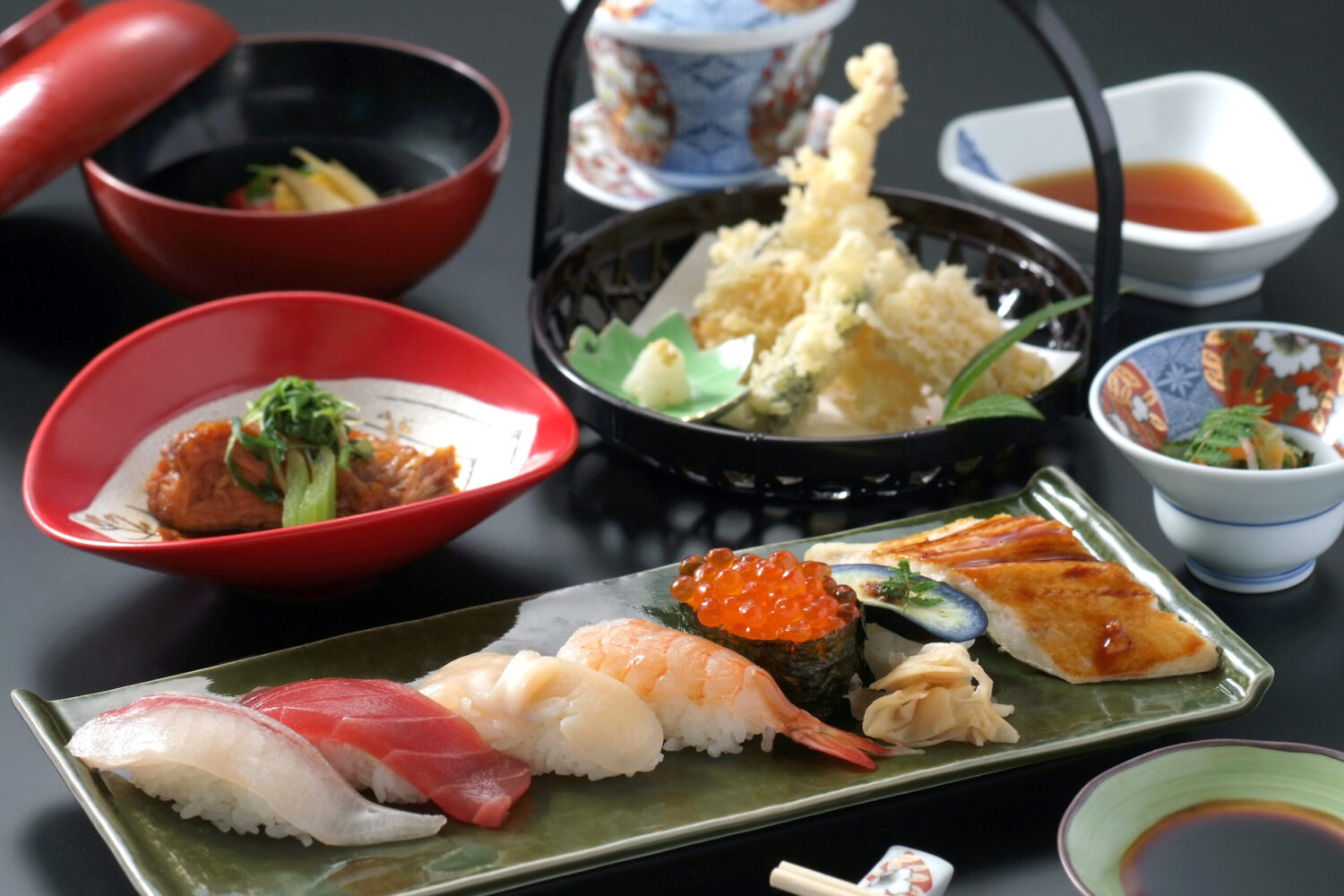
Welcome to a culinary journey through Japan! This article explores fifty delectable Japanese dishes, each offering a unique glimpse into the rich tapestry of flavors and traditions that define Japanese cuisine. From the world-renowned sushi and sashimi to comforting bowls of ramen and lesser-known regional specialties, prepare to discover the diverse and delicious dishes that make Japanese food a favorite among food enthusiasts around the globe. Whether you’re a seasoned foodie or new to Japanese flavors, there’s something here for everyone to enjoy.
Sushi
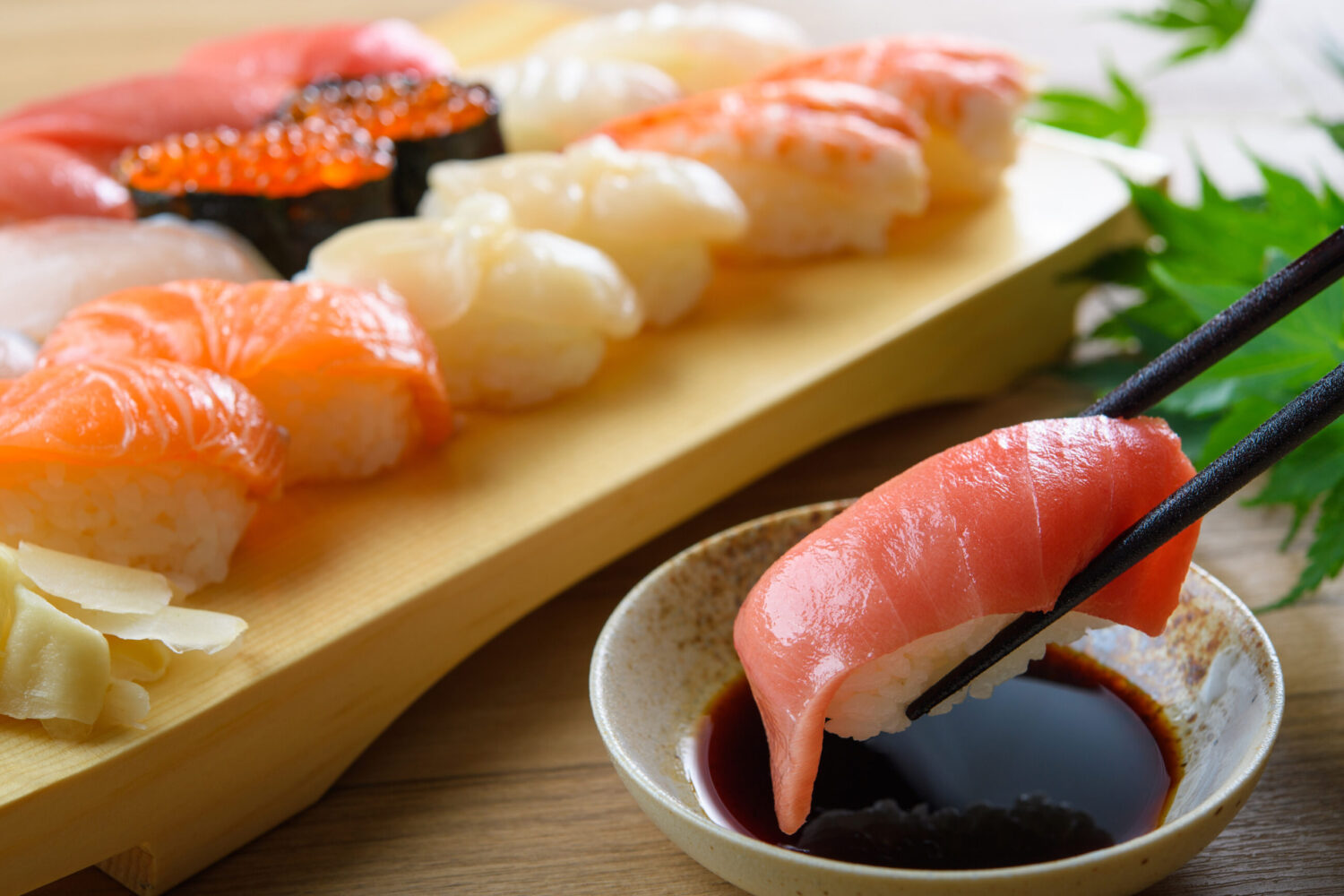
Discover the art of sushi, Japan’s iconic culinary treasure. Sushi combines vinegared rice with diverse toppings, such as fresh fish, seafood, and vegetables. This delicacy highlights minimalism and seasonality, offering a harmony of subtle flavors and textures that delight the palate. Perfect for both adventurous eaters and culinary purists, sushi is a must-try experience that embodies the essence of Japanese cuisine.
Sashimi
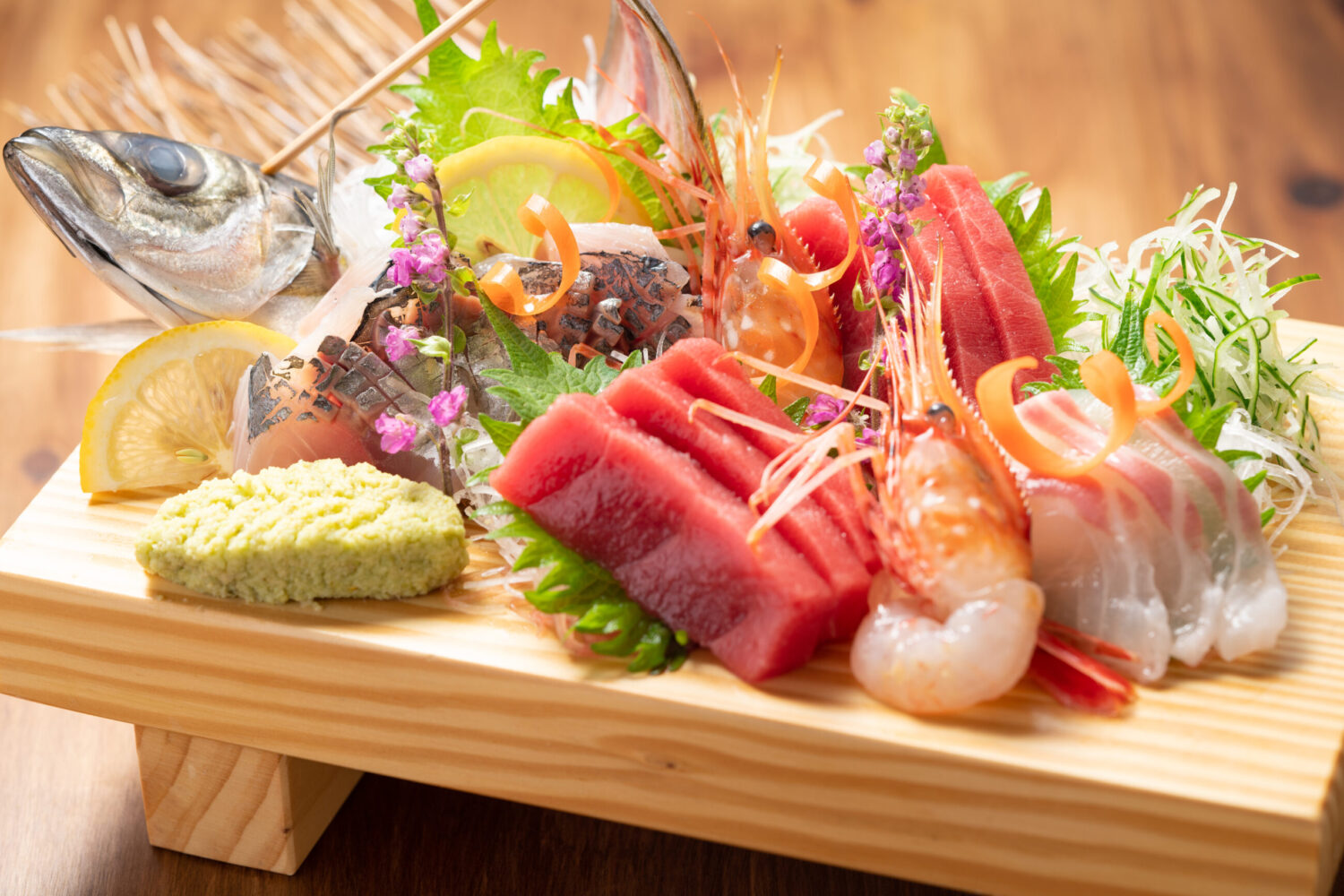
Explore the exquisite simplicity of sashimi, a revered Japanese delicacy. Sashimi consists of expertly sliced, fresh raw fish or seafood, served without rice. This dish emphasizes the natural flavors and textures of its ingredients, enhanced only by subtle dips like soy sauce and wasabi. Sashimi offers a pure, unadulterated taste experience, celebrating the freshness and quality of the seafood.
Tempura
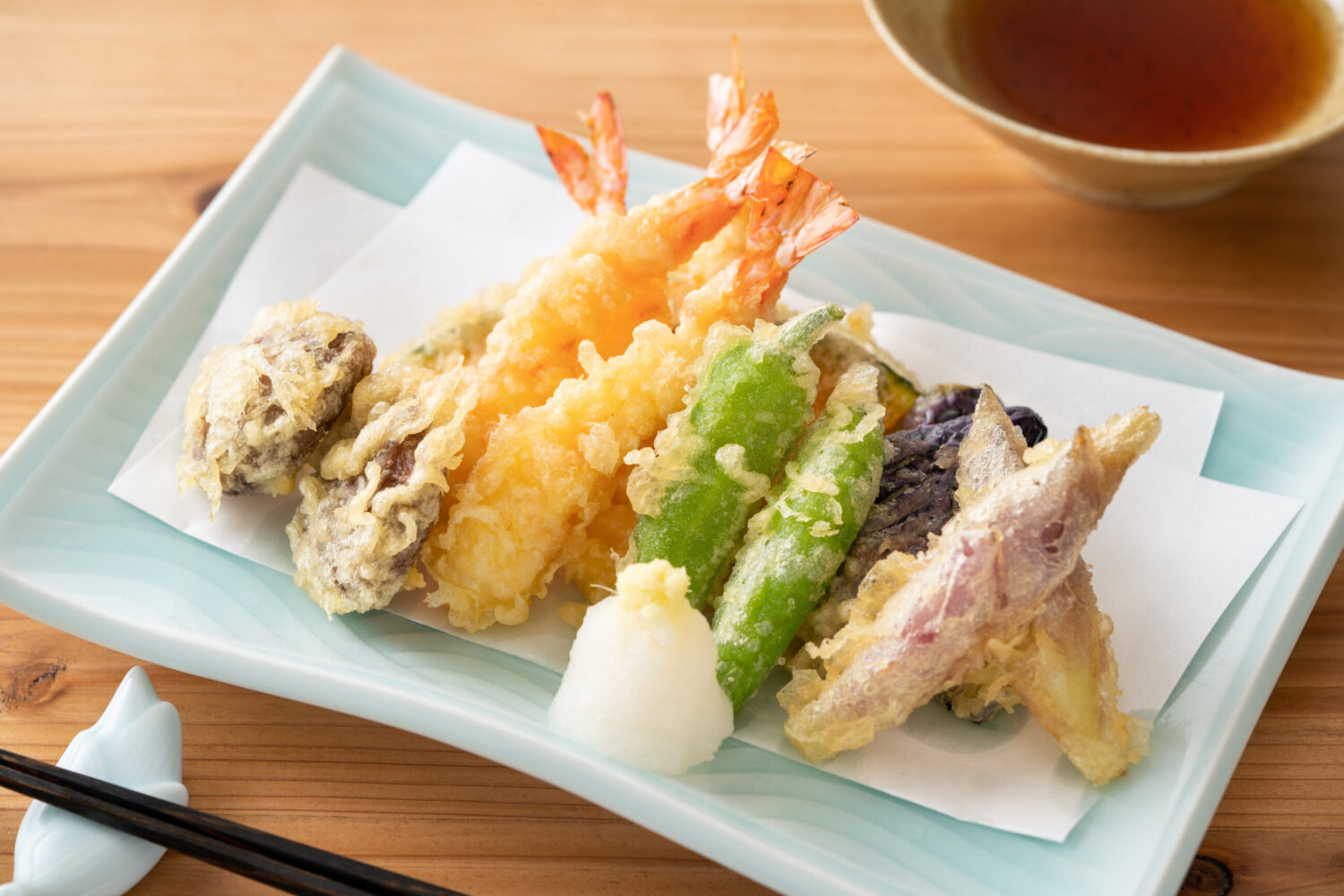
Delight in the crispy, light allure of Tempura, a beloved Japanese dish. This culinary favorite involves seafood and vegetables dipped in a cold, thin batter and fried to golden perfection. Tempura is renowned for its delicate, crunchy texture that beautifully complements the tender, flavorful interiors. Served with a dipping sauce or just a sprinkle of sea salt, tempura offers a unique, satisfying taste that makes it a must-try for any visitor to Japan.
Unadon – Eel bowl
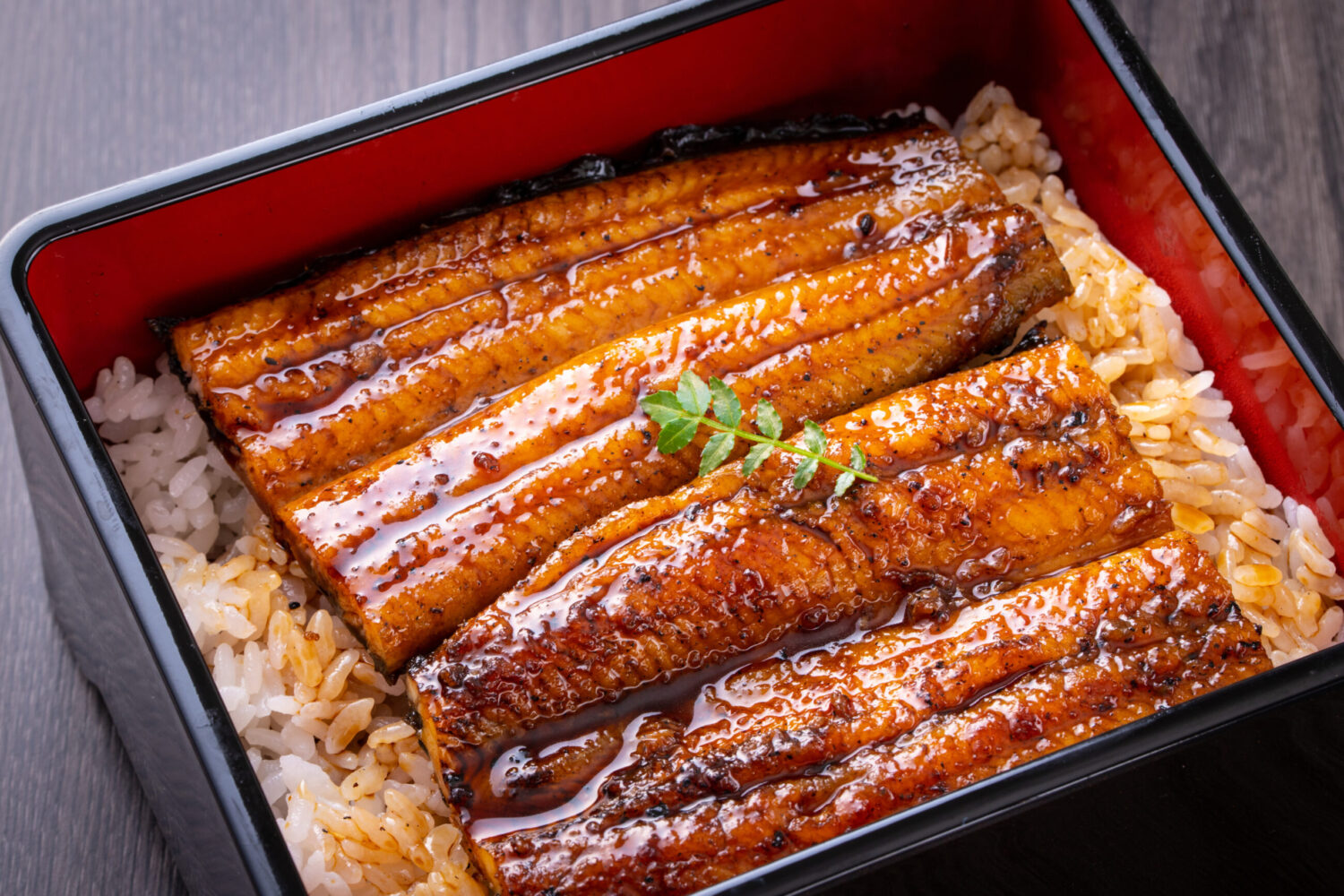
Savor the rich flavors of Unadon, a classic Japanese dish featuring grilled eel over a bed of steamed rice. Known for its luscious, sweet soy-based sauce, the eel is caramelized to perfection, creating a delightful contrast with the fluffy rice. Unadon is not only delicious but also deeply satisfying, offering a unique taste of Japan’s culinary tradition. It’s a must-try for anyone wanting to experience authentic Japanese comfort food at its finest.
Tonkatsu
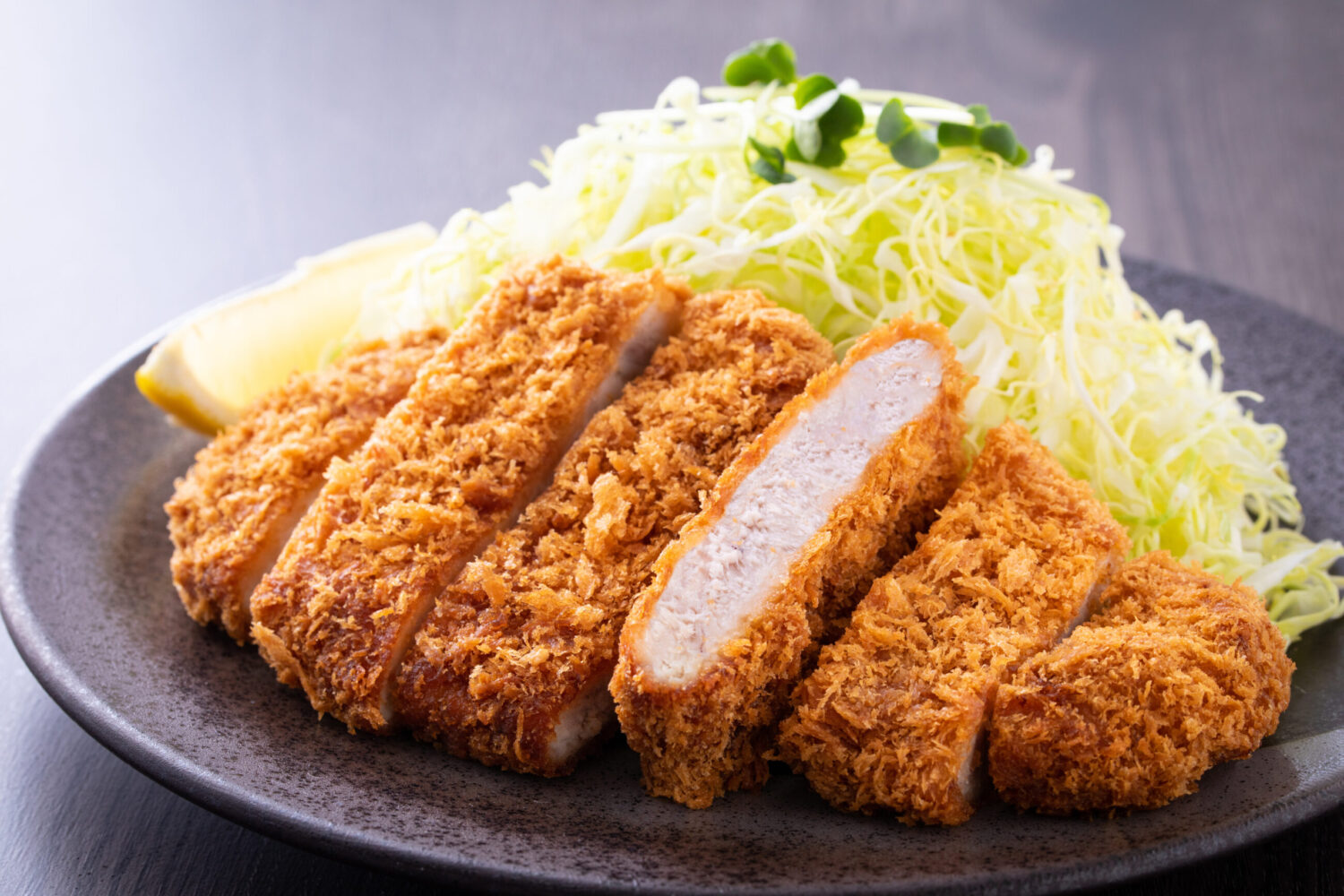
Indulge in Tonkatsu, a beloved Japanese dish where pork cutlet meets crispy perfection. Breaded with panko and deep-fried, Tonkatsu offers a satisfying crunch on the outside while remaining tender and juicy inside. Typically served with a tangy, savory tonkatsu sauce, a side of shredded cabbage, and rice, this dish is a hearty, comforting favorite that showcases the delightful simplicity of Japanese fried cuisine.
Okonomiyaki
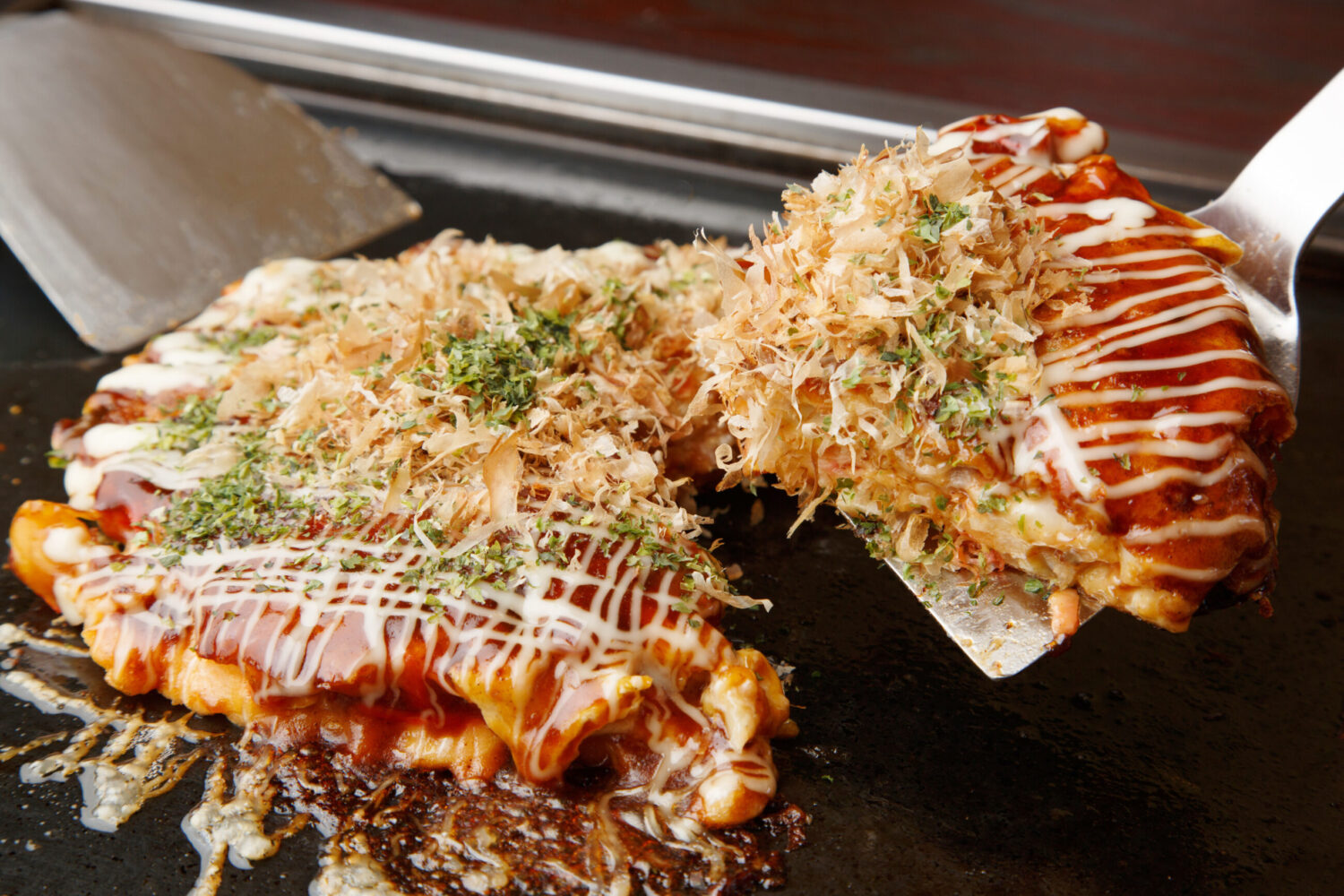
Experience the delight of Okonomiyaki, often described as Japan’s savory pancake. This versatile dish is made with a batter mixed with cabbage and a variety of other ingredients such as seafood, pork, or cheese. Cooked on a griddle and customized to taste, each Okonomiyaki is topped with rich sauces, mayonnaise, and bonito flakes. It’s a flavorful, interactive meal that invites you to explore the diverse tastes of Japanese street food.
Takoyaki
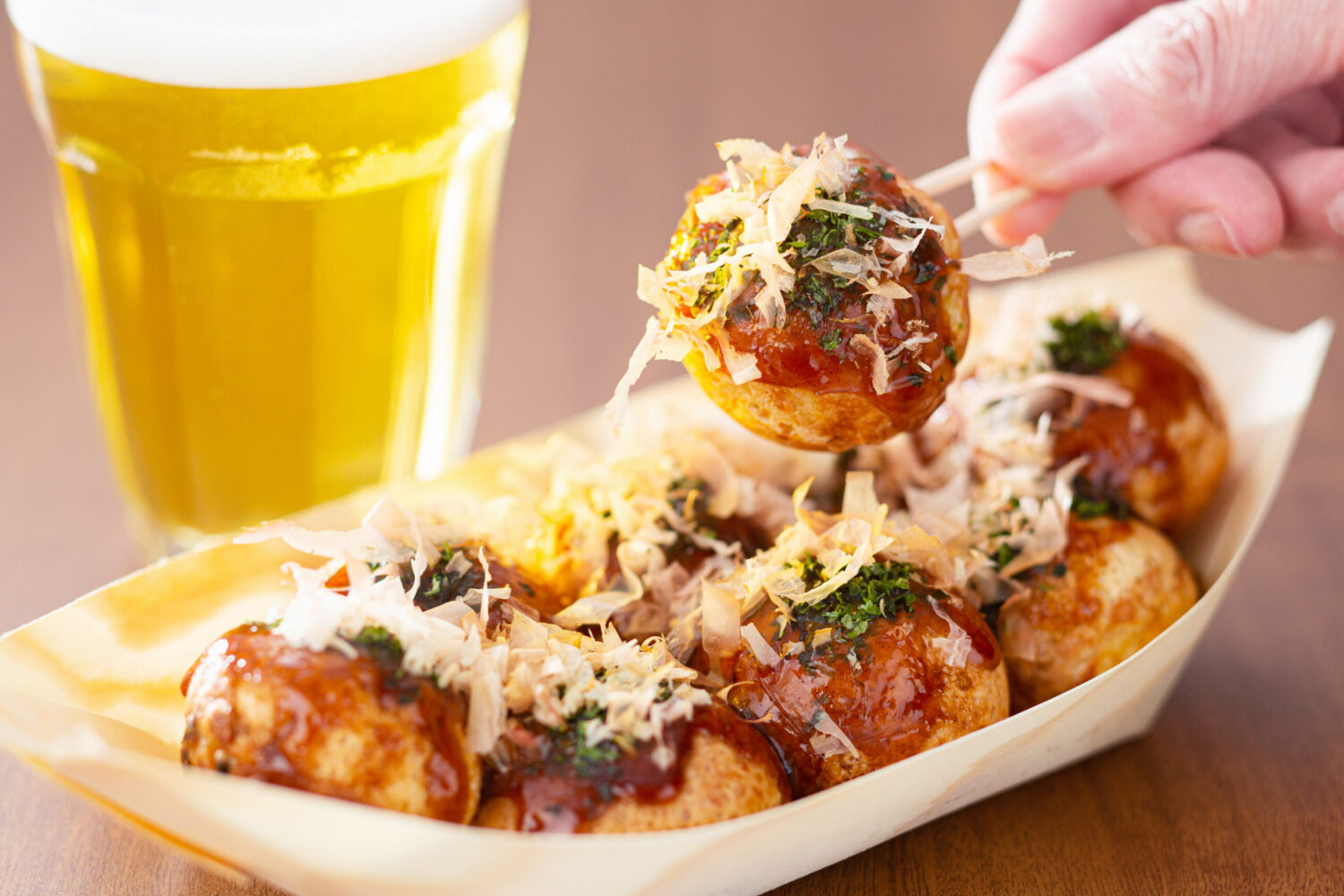
Dive into the world of Takoyaki, a quintessential Japanese street food. These delightful, ball-shaped snacks are made with a wheat flour batter and filled with minced octopus, pickled ginger, and green onions. Cooked in a special molded pan, Takoyaki are crispy on the outside and wonderfully gooey inside. Served hot and topped with takoyaki sauce, mayonnaise, and bonito flakes, they offer a burst of flavors that’s irresistibly addictive.
Miso Soup
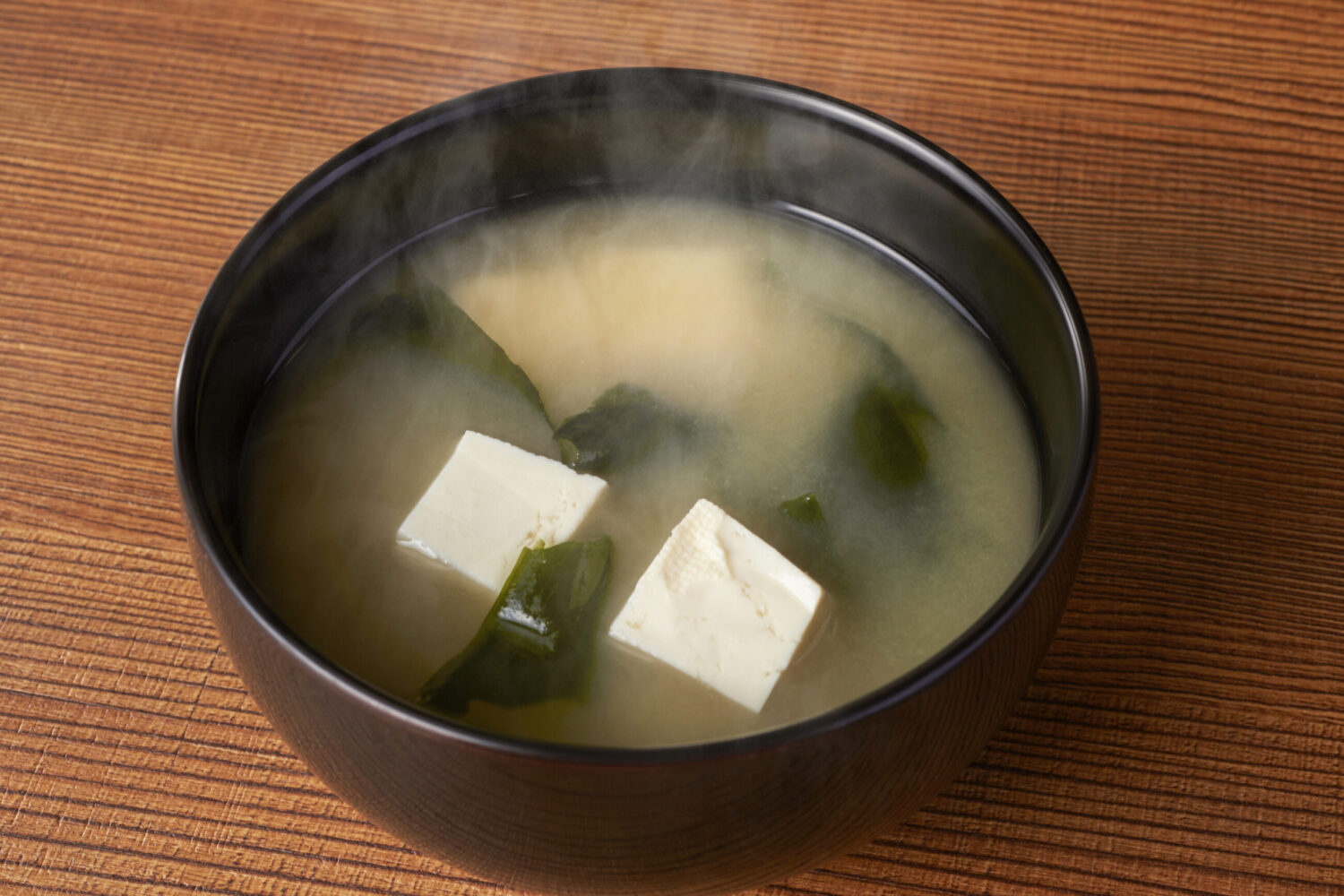
Miso Soup, a cornerstone of Japanese cuisine, is more than just a dish—it’s an integral part of the country’s culinary tradition. This comforting soup is typically made with miso paste, a fermented blend of soybeans, salt, and koji, which is then mixed into a rich dashi broth. Dashi, the backbone of many Japanese dishes, is a simple stock often made from kombu (dried kelp) and katsuobushi (dried bonito flakes), offering a deep umami flavor. Common additions to Miso Soup include tofu, scallions, and wakame seaweed, each adding texture and flavor that enhance the soup’s complexity. Beyond its delicious taste, Miso Soup is valued for its health benefits, including aiding digestion and providing essential nutrients. Served alongside meals or as a warm start to the day, it embodies the essence of Japanese nourishment and hospitality.
Ramen
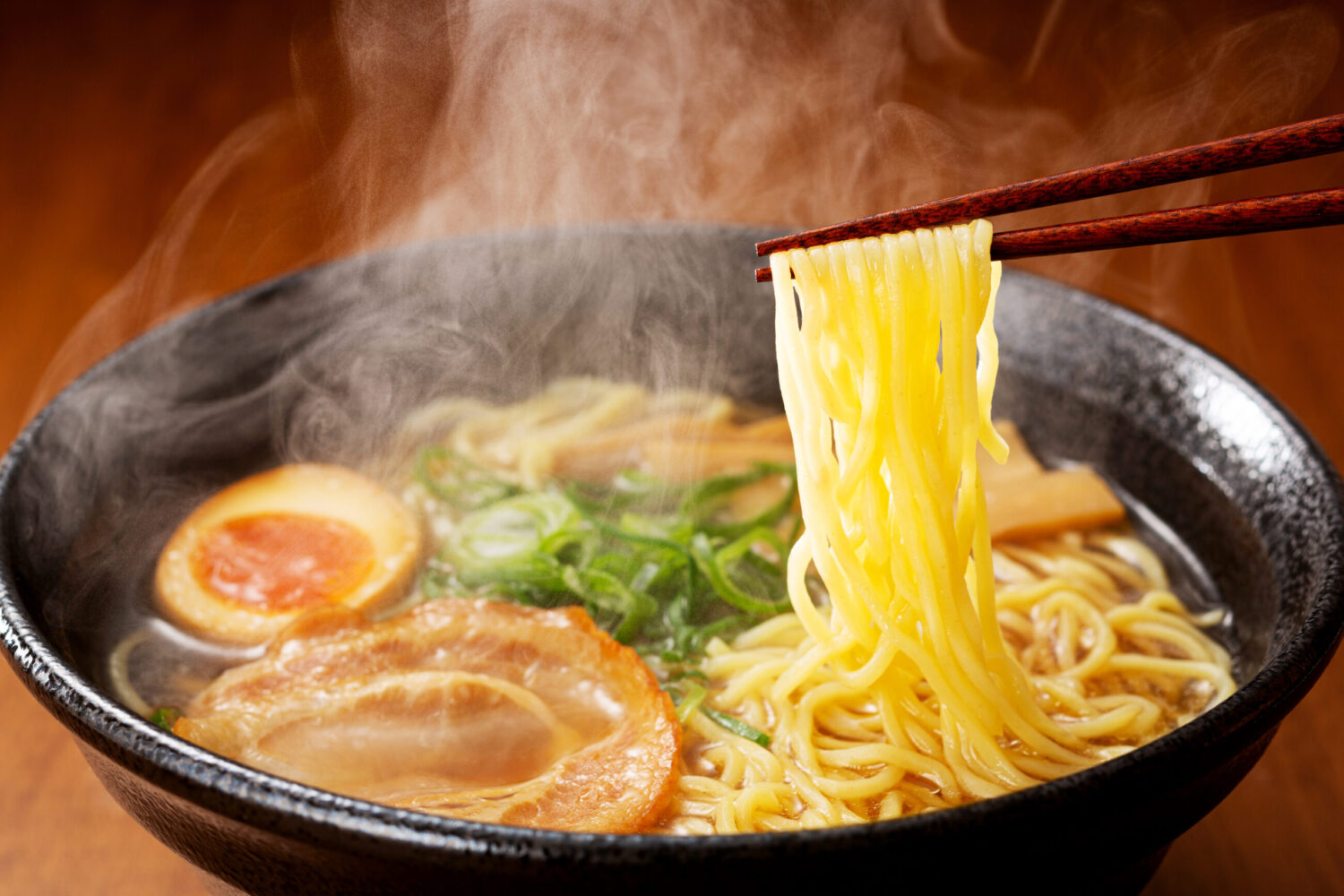
Ramen, a staple of Japanese cuisine, is a delectable noodle soup that has gained international fame for its rich, savory flavors. This comfort food features springy noodles served in a deeply flavorful broth, which can be based on miso, soy, or pork. Each bowl is artfully topped with succulent slices of pork, a soft-boiled egg, green onions, and often bamboo shoots or seaweed. With each region of Japan offering its own unique twist on this beloved dish, ramen provides a delicious way to explore the diverse culinary landscape of the country. It’s a must-try for anyone wanting to experience authentic Japanese dining.
Udon
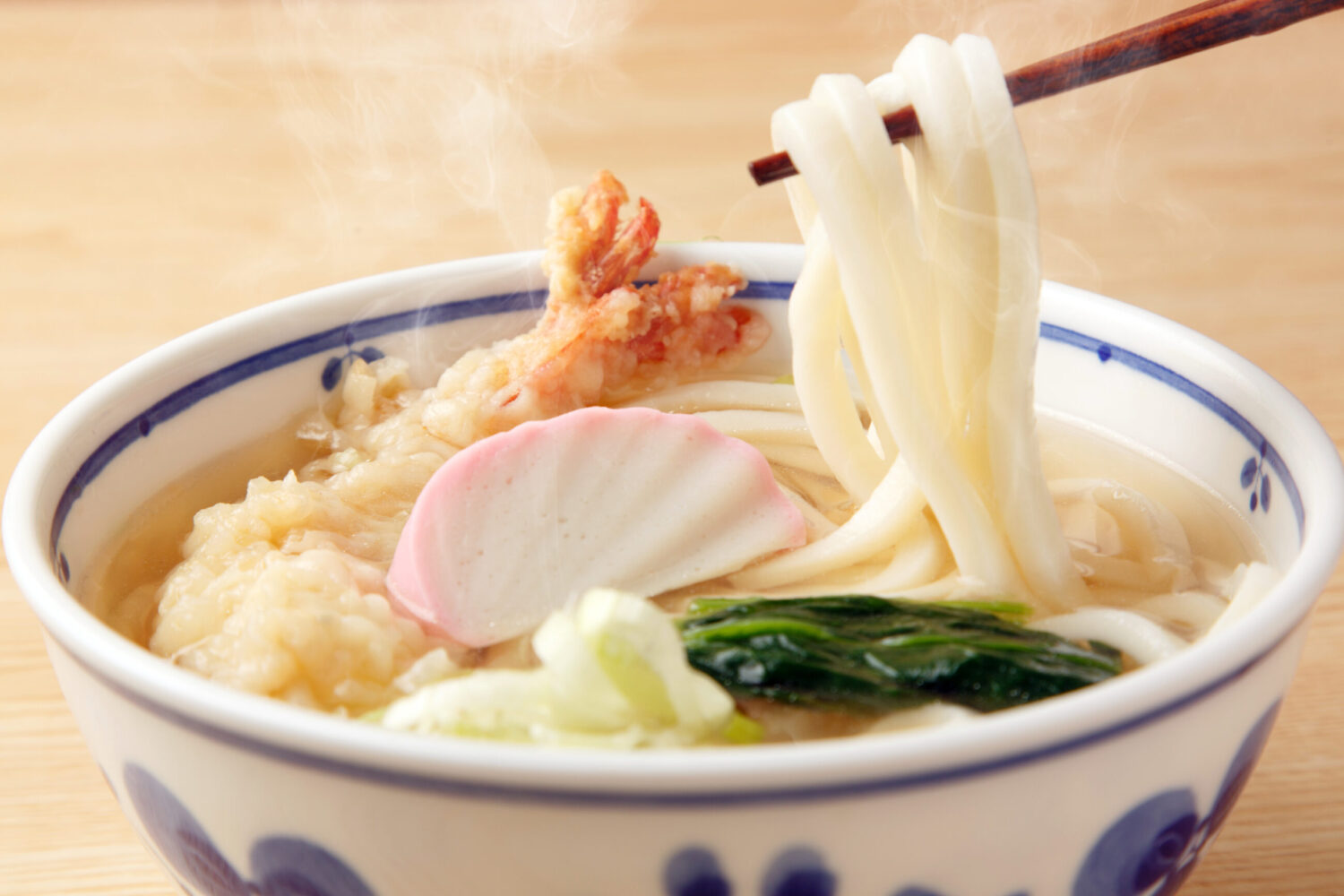
Experience the comfort of Udon, a beloved Japanese noodle dish featuring thick, chewy wheat noodles. Udon can be enjoyed in a variety of ways: served hot in a rich, savory broth, or cold with a refreshing dipping sauce. Popular toppings include tempura, scallions, and kamaboko fish cake, enhancing the dish’s flavor and texture. Udon’s versatility and satisfying mouthfeel make it a favorite among both locals and visitors. Whether in a quick street-side eatery or a traditional noodle house, Udon offers a deliciously authentic taste of Japanese comfort food.
Soba
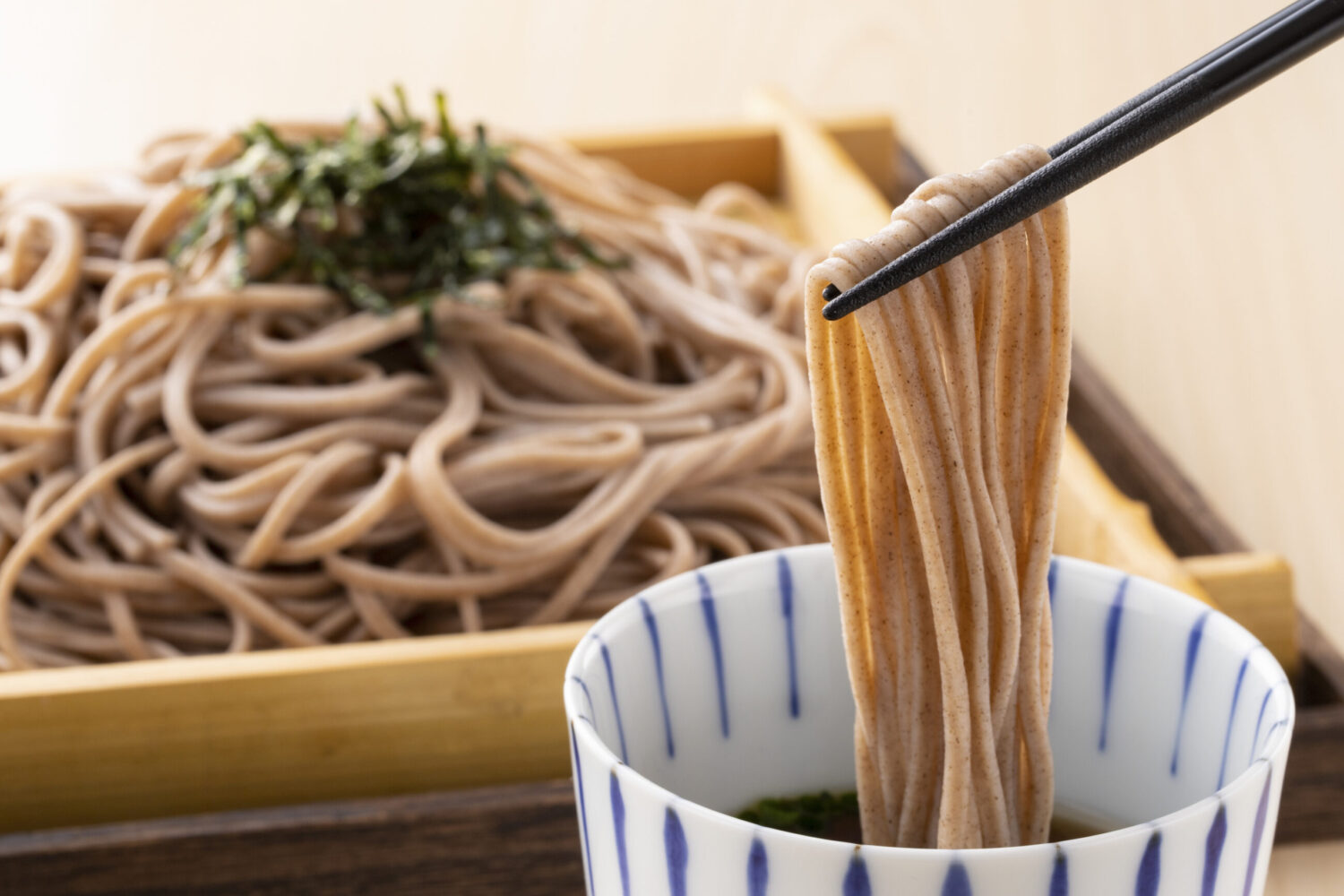
Delve into the world of Soba, traditional Japanese buckwheat noodles known for their distinctive nutty flavor. Served either chilled with a dipping sauce or in a hot, savory broth, Soba offers a versatile dining experience. This dish is not only delicious but also celebrated for its health benefits, including being a good source of protein and fiber. Soba is particularly popular during New Year celebrations and in summer, providing a refreshing meal option. Whether you’re enjoying it at a bustling street market or a quiet noodle house, Soba represents a beloved aspect of Japanese culinary culture.
Yakitori
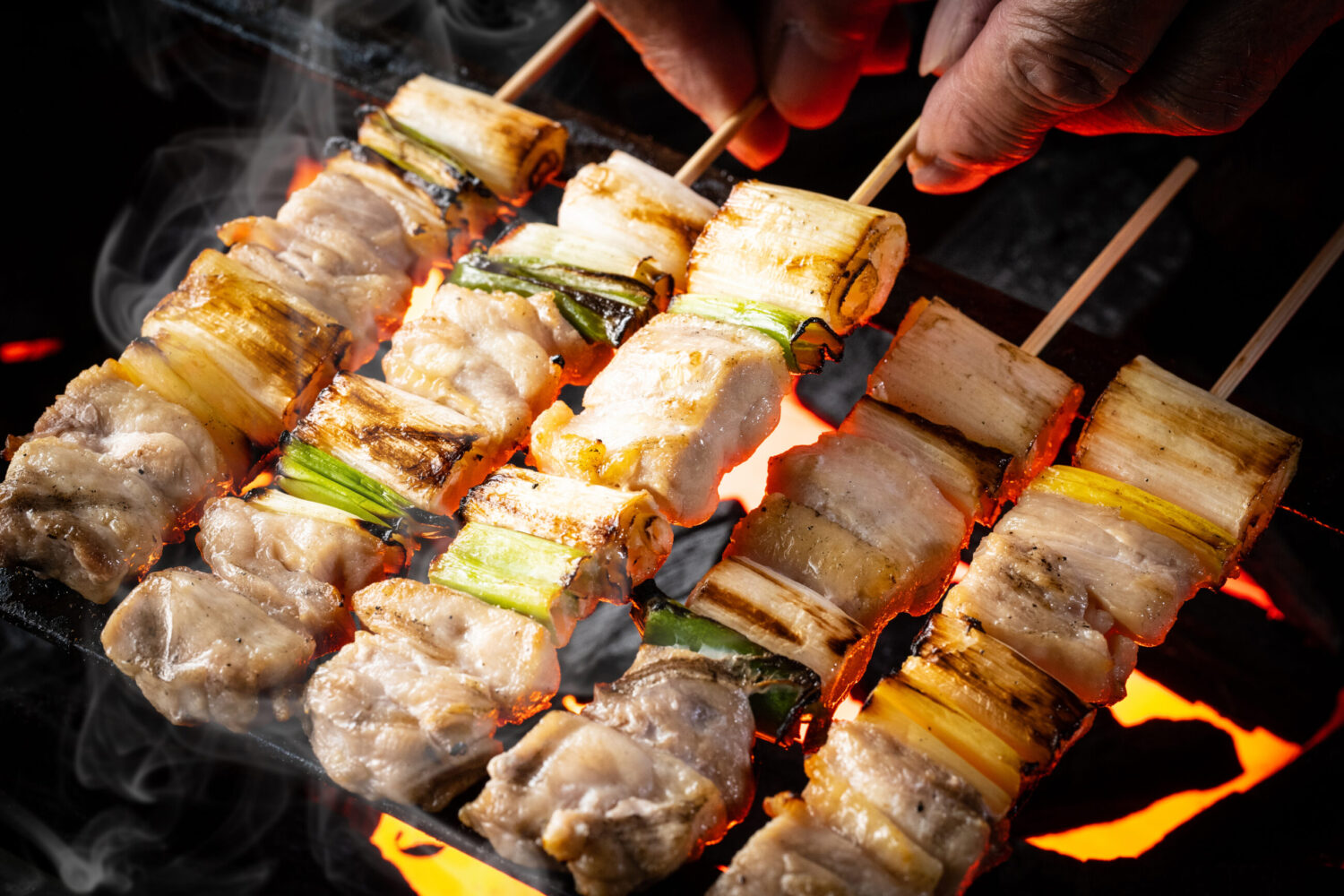
Discover Yakitori, a classic Japanese street food that offers a delightful taste of simplicity and tradition. Yakitori consists of skewered and grilled chicken, cooked over charcoal to achieve a perfect smoky flavor. This popular dish is seasoned with salt or brushed with a savory-sweet tare sauce, made from soy sauce, sake, sugar, and mirin. Yakitori stalls and restaurants create a lively atmosphere where diners can enjoy these delicious skewers along with a cold beer. This communal and casual dining experience is a must-try, embodying the essence of Japanese culinary culture.
Curry Rice
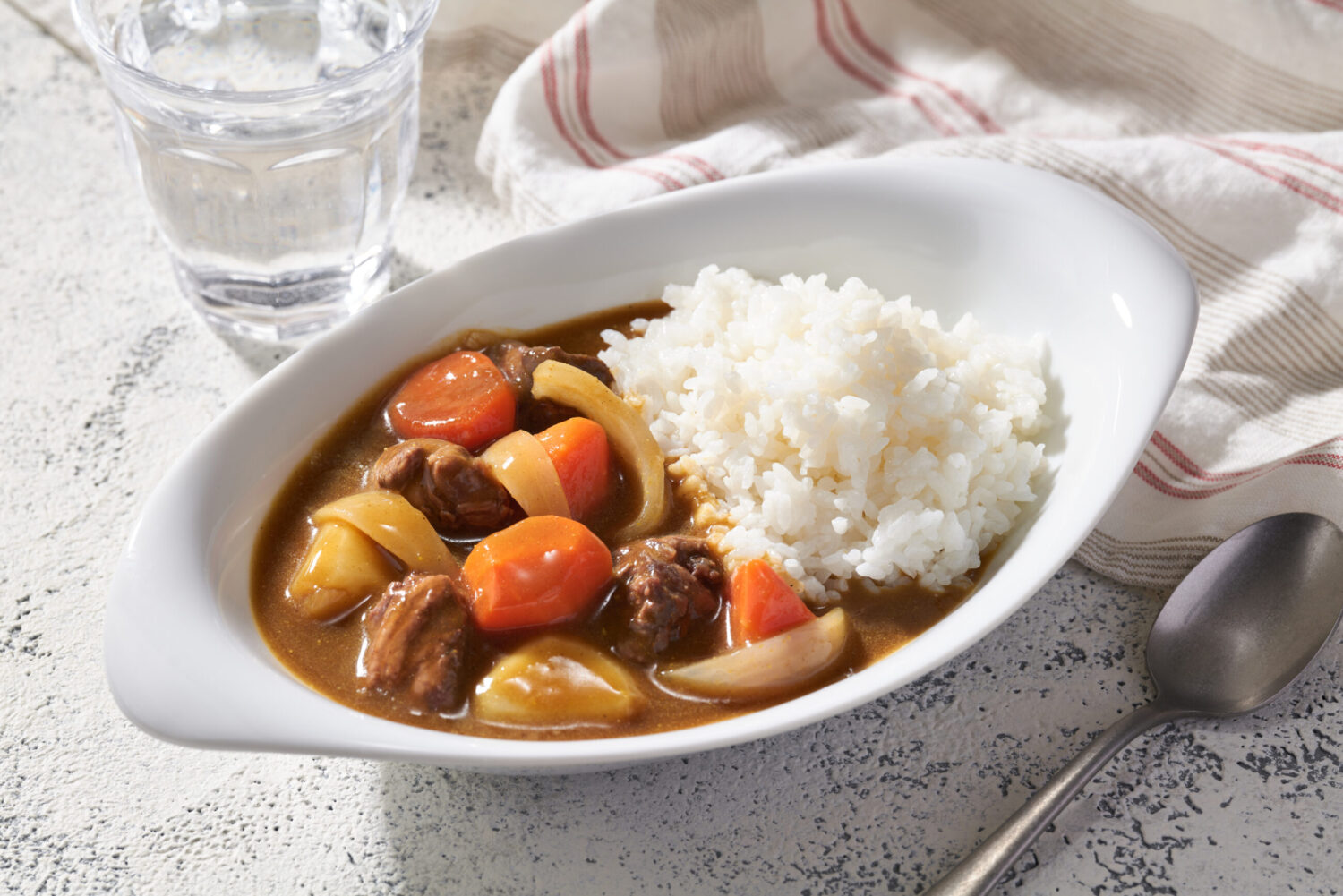
Indulge in Curry Rice, a beloved dish in Japan that merges the rich flavors of Indian spices with the simplicity of Japanese cooking. This hearty meal consists of a thick, savory curry sauce, loaded with tender meat and vegetables, poured over a bed of steaming rice. Japanese curry is milder and sweeter than its Indian counterpart, making it a comforting favorite for both children and adults. Often accompanied by pickled vegetables or a breaded pork cutlet, Curry Rice is a satisfying, flavorful experience that showcases Japan’s unique take on international cuisine.
Shabu-shabu
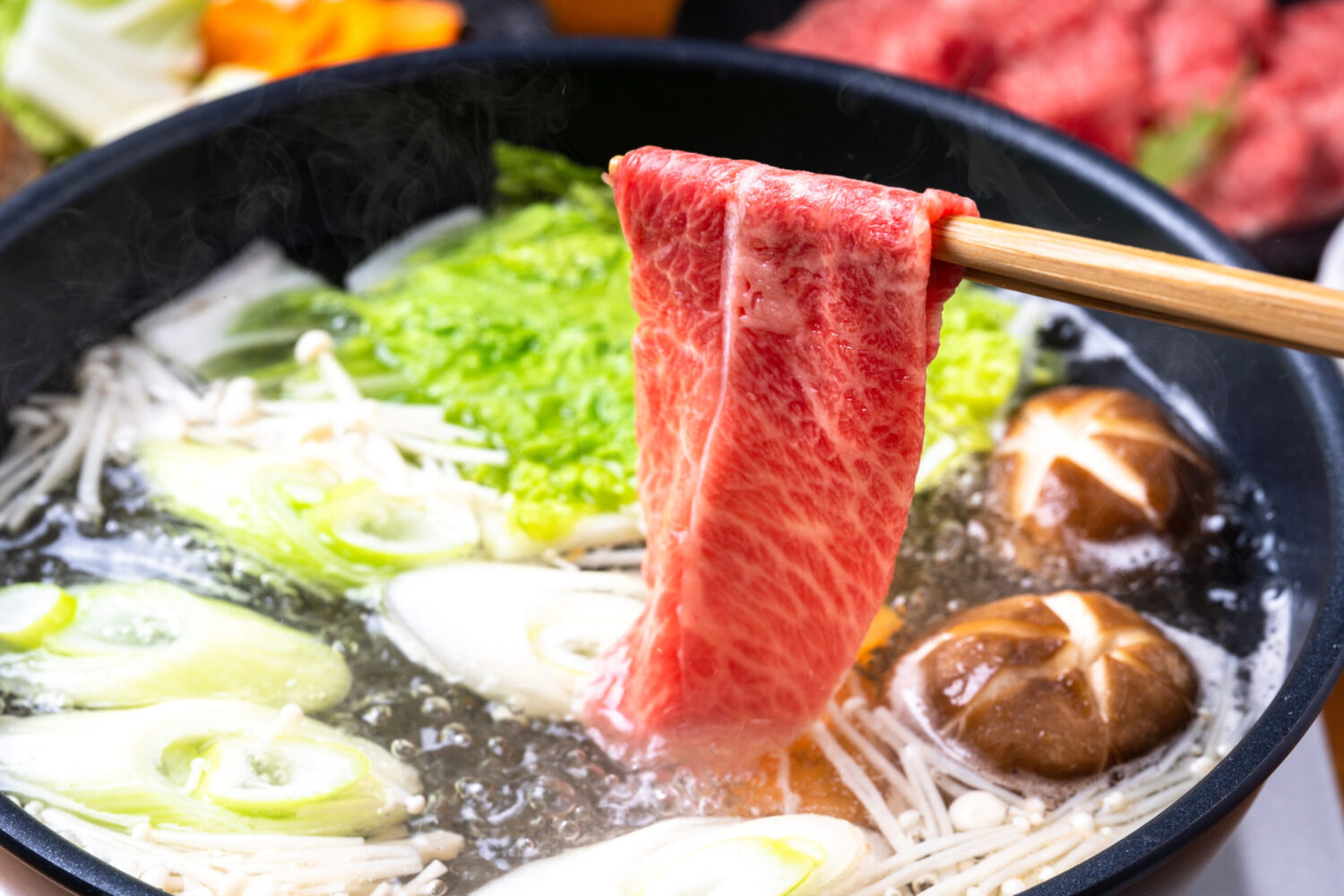
Immerse yourself in the interactive delight of Shabu-shabu, a popular Japanese hot pot dish. Thinly sliced meat, usually beef or pork, is swirled in a pot of boiling water or broth and cooked briefly. The name “shabu-shabu” mimics the sound of the meat being swished. Vegetables, tofu, and noodles are also added, making it a hearty meal. Dipped in sauces like sesame or ponzu, Shabu-shabu is not only delicious but also a fun and social dining experience, perfect for enjoying fresh, simple flavors in a communal setting.
Natto
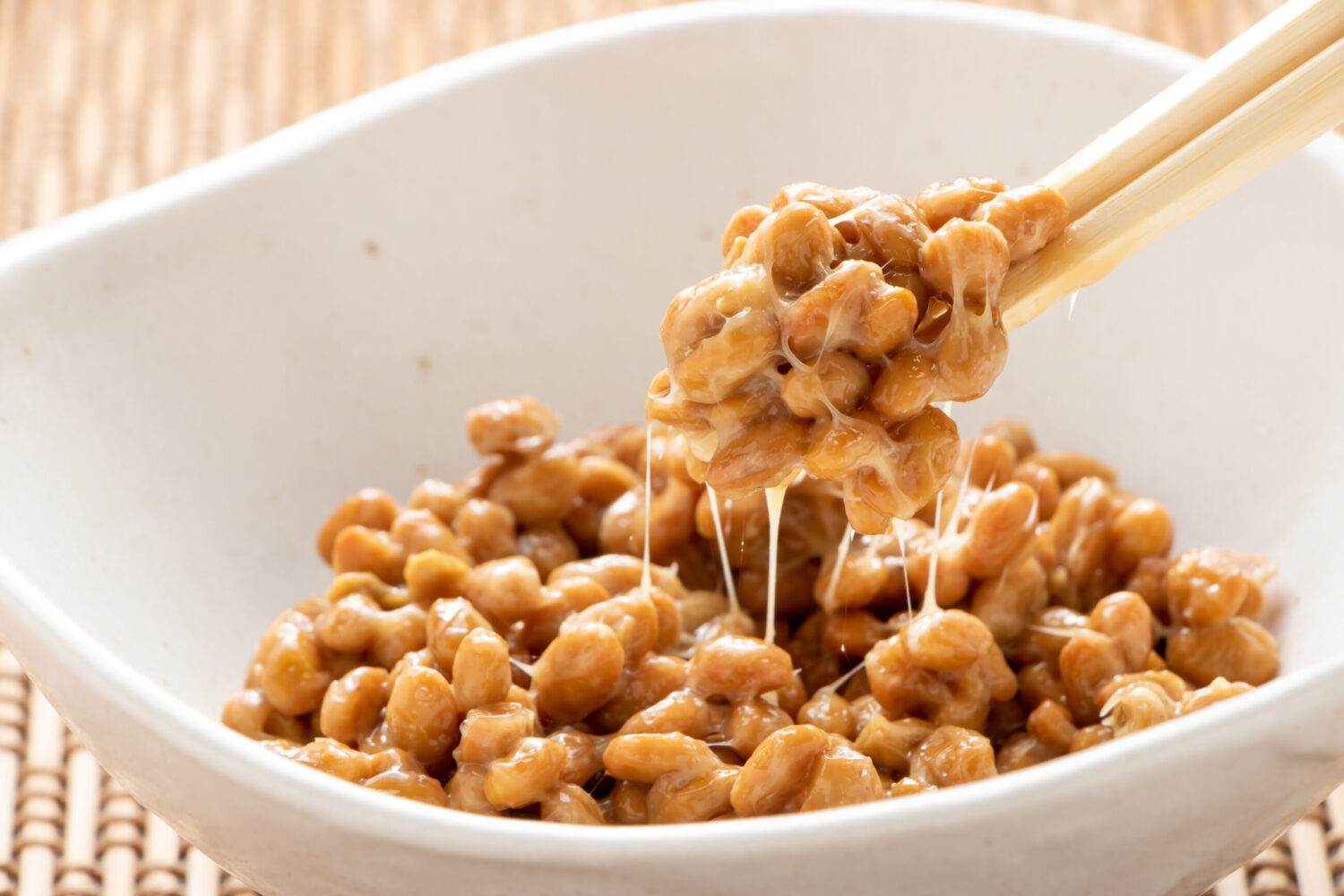
Experience Natto, a distinctive Japanese delicacy made from fermented soybeans. Renowned for its strong aroma, sticky texture, and stringy appearance, Natto is a staple in Japanese cuisine known for its exceptional health benefits. Rich in protein and probiotics, it supports digestive health and boosts the immune system. Traditionally served over steaming rice with condiments like mustard and soy sauce, Natto offers a unique flavor profile that is both earthy and pungent. While it may be an acquired taste, its nutritional virtues make it a must-try for those seeking to immerse themselves in authentic Japanese dietary traditions.
Chawanmushi
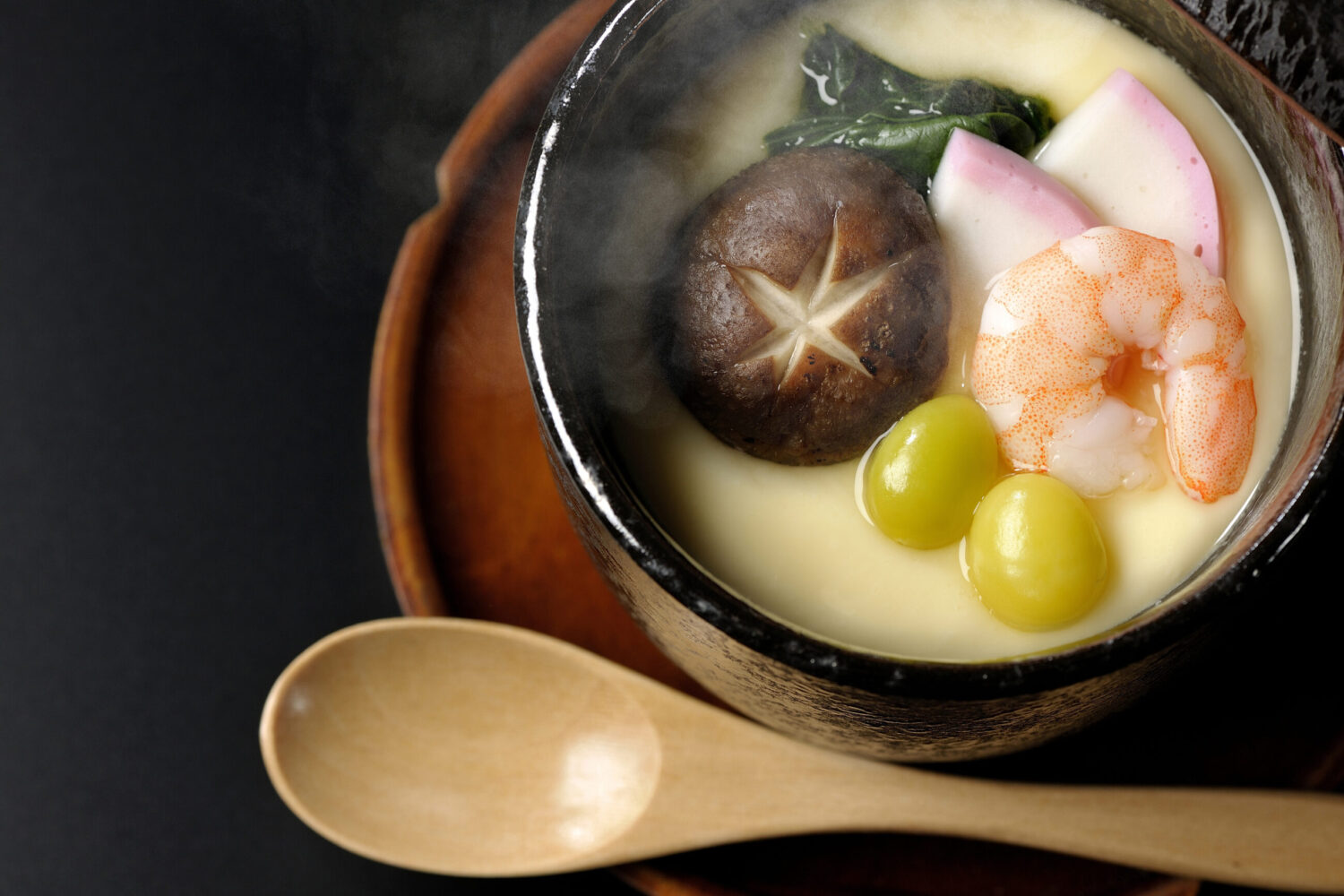
Discover Chawanmushi, a traditional Japanese steamed egg dish that exemplifies the elegance of Japanese cuisine. Unlike sweet desserts, Chawanmushi is savory, made from a delicate blend of eggs and dashi broth, resulting in a silky, smooth texture. It is typically enriched with ingredients such as shrimp, chicken, and shiitake mushrooms, providing gentle flavors and a subtle variety of textures. Served in a small cup, this dish is often enjoyed as an appetizer or a side, offering a refined taste that soothes the palate with every spoonful. Chawanmushi is a testament to the sophisticated simplicity of Japanese culinary arts.
Gyoza
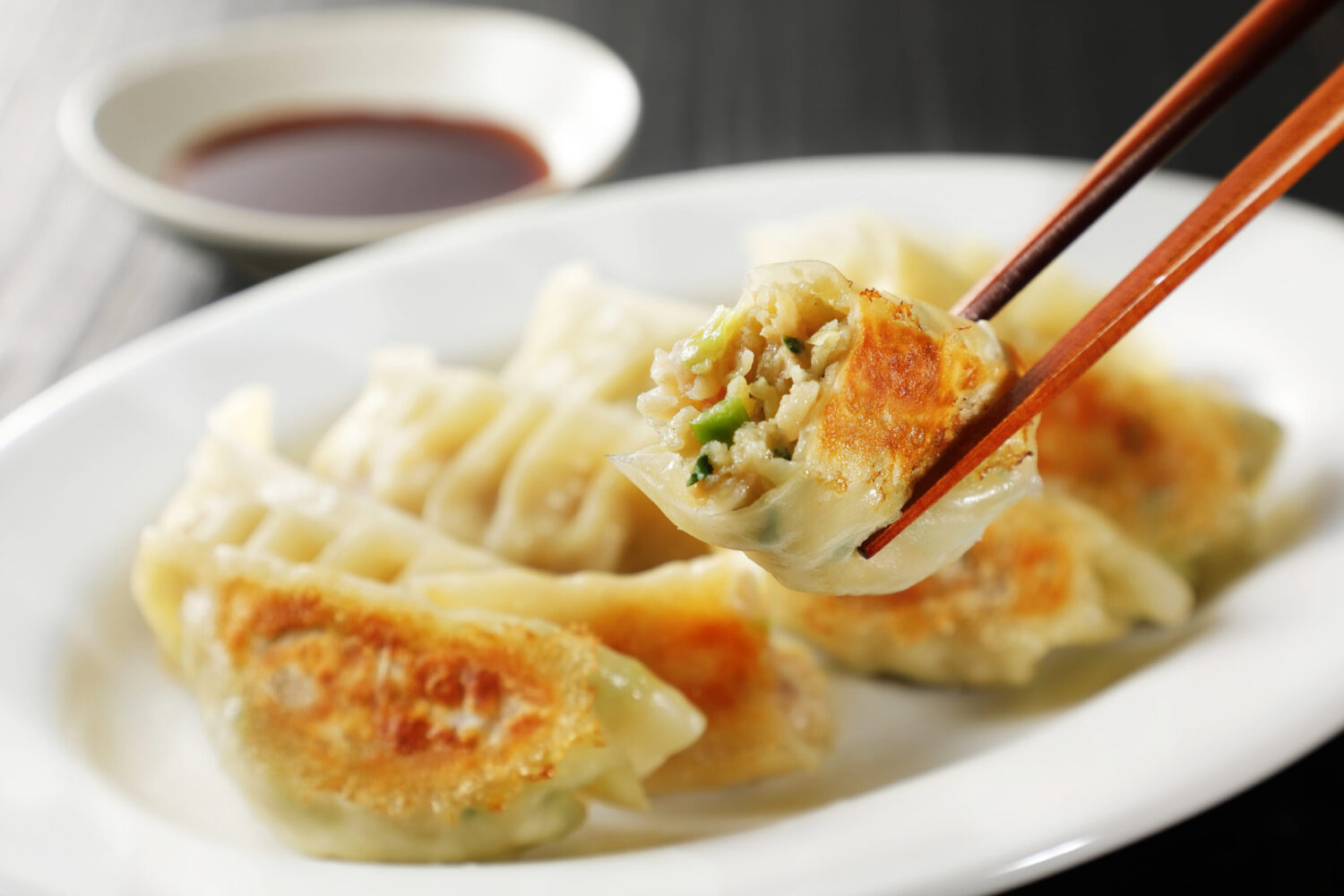
Indulge in Gyoza, the Japanese version of dumplings that have become a favorite across the globe. These delectable crescent-shaped morsels are filled with a mixture of minced meat, usually pork, and finely chopped vegetables, such as cabbage and green onions. Pan-fried to achieve a crispy bottom while maintaining a tender, steamed top, Gyoza are served with a dipping sauce that blends soy sauce, vinegar, and chili oil, enhancing their savory flavors. Perfect as an appetizer or a snack, Gyoza offer a delightful taste experience with each bite.
Onigiri
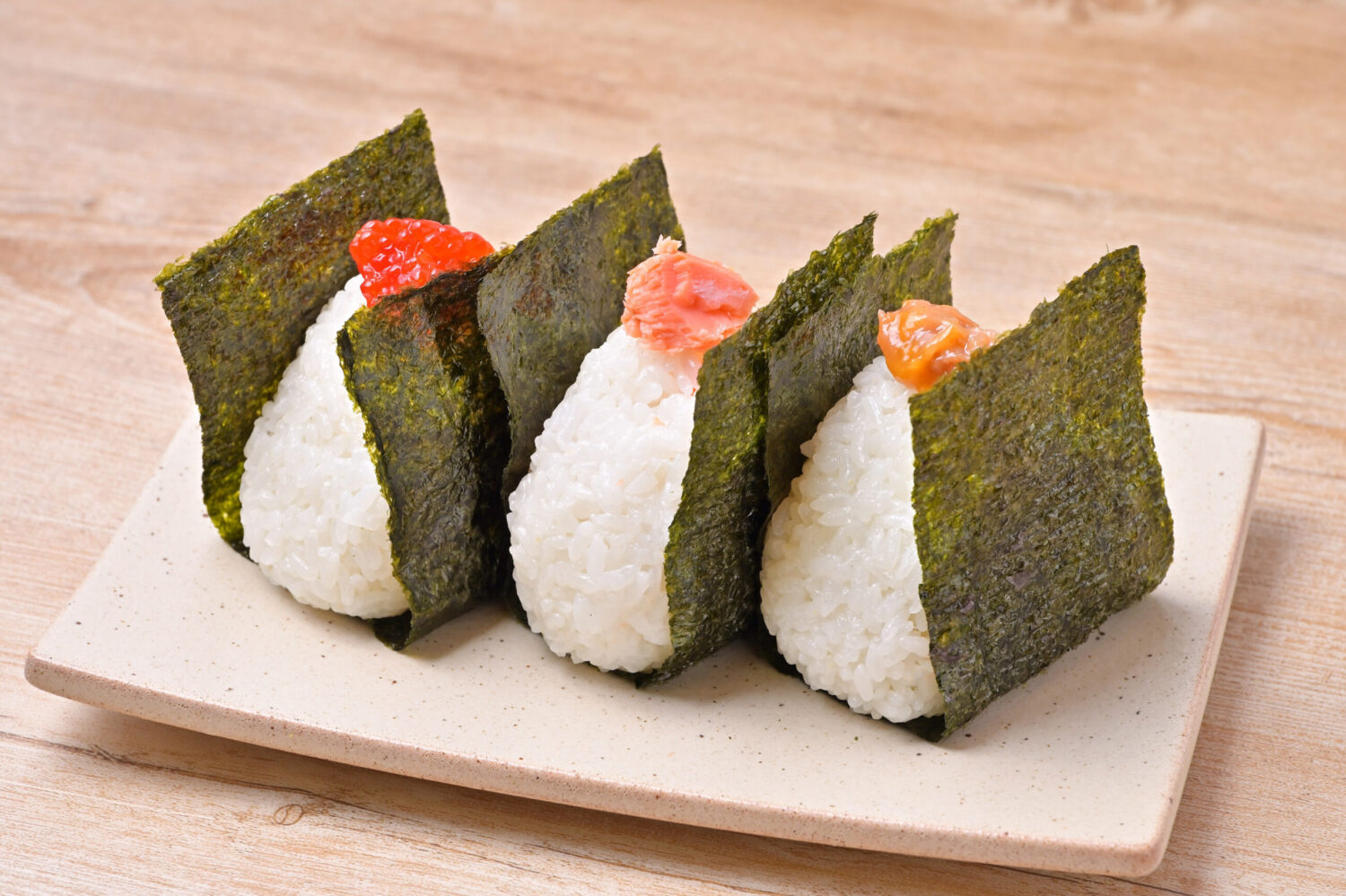
Discover Onigiri, Japan’s beloved rice ball snack that’s perfect for on-the-go eating. These hand-formed triangles or spheres of rice are often wrapped in nori (seaweed) and filled with a variety of flavorful ingredients such as salted salmon, pickled plum, or tuna mayonnaise. Onigiri showcases the simplicity and elegance of Japanese cuisine, combining subtle flavors with satisfying textures. Available at convenience stores and bento shops throughout Japan, onigiri are a staple snack or meal component, offering a delicious and practical taste of Japanese food culture.
Oden
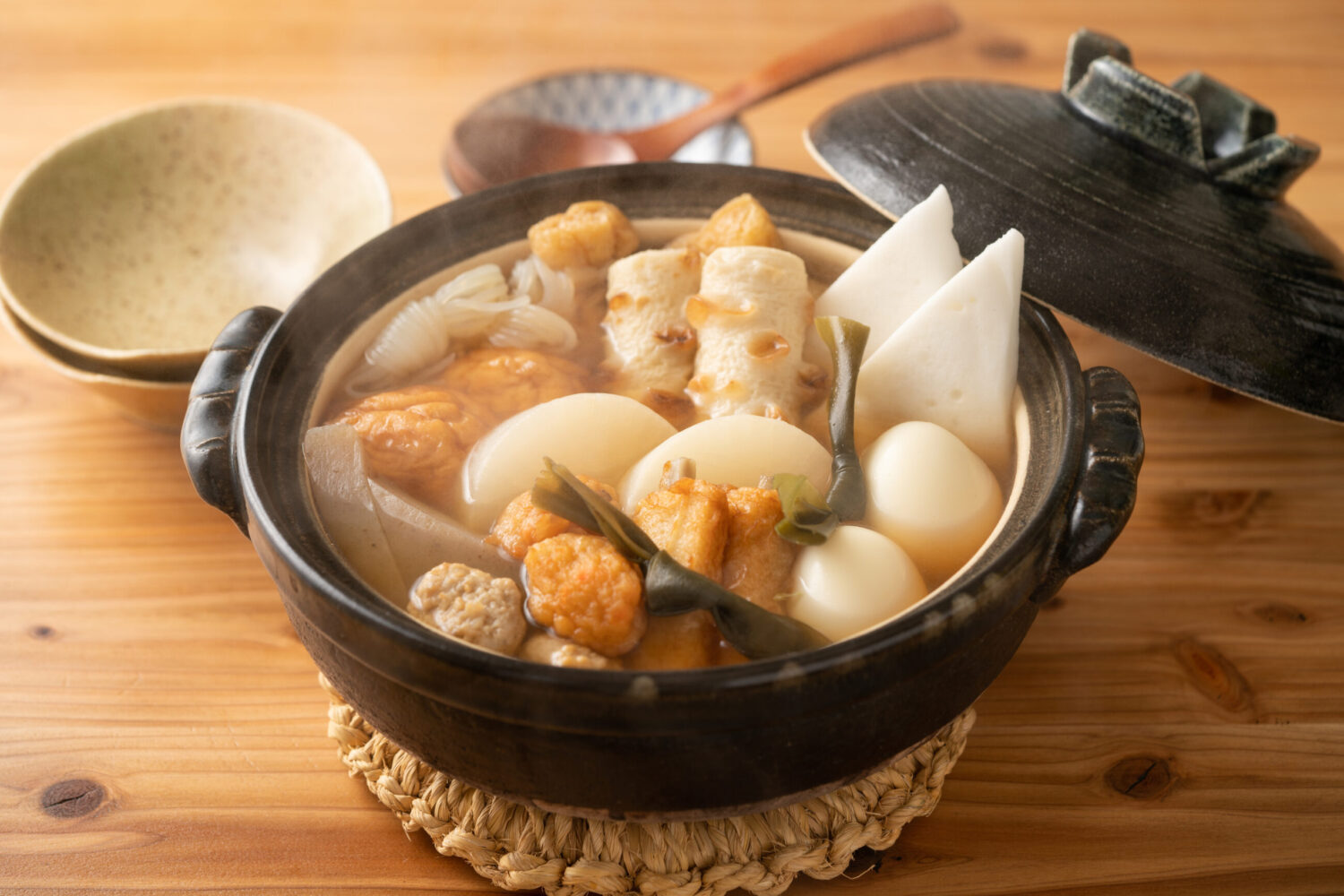
Experience the warmth of Oden, a quintessential Japanese winter dish. This comforting hot pot is a medley of ingredients simmered in a light, savory broth typically flavored with soy sauce and dashi. Oden includes a variety of items such as boiled eggs, daikon radish, konnyaku, and different types of processed fish cakes. Each component soaks up the flavorful broth, offering a soft, satisfying texture. Oden is commonly found at convenience stores, specialty shops, and izakayas, making it a popular choice for a warm, nourishing meal during the colder months.
Sukiyaki
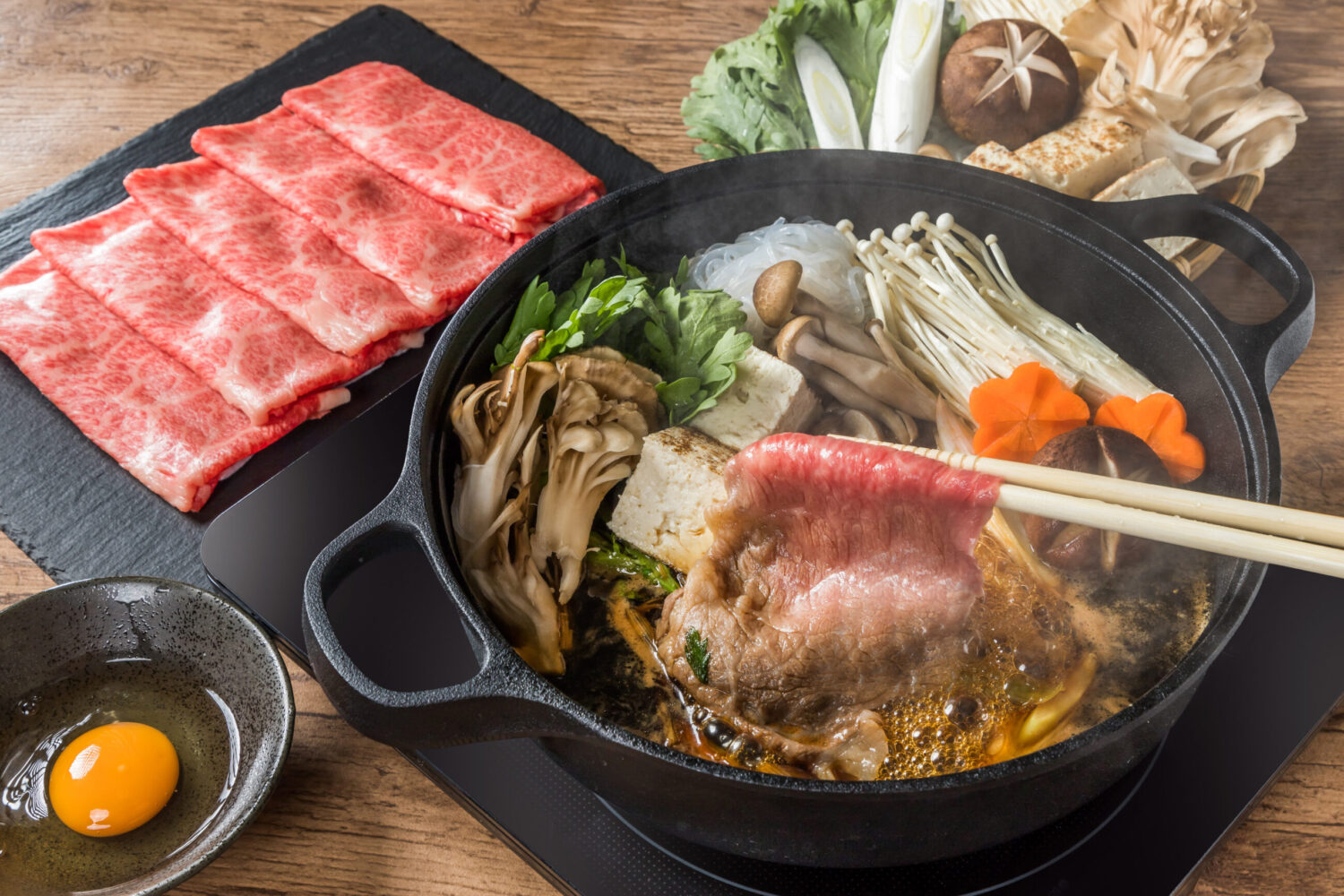
Savor Sukiyaki, a popular Japanese hot pot that epitomizes communal dining. This dish features thinly sliced beef, which is slowly cooked at the table alongside vegetables, tofu, and noodles in a sweet and savory sauce made from soy sauce, sugar, and mirin. Guests typically dip the cooked ingredients into a bowl of raw, beaten eggs, which adds a rich, creamy texture to the flavorful broth. Sukiyaki is not only a feast for the palate but also an engaging culinary experience, perfect for enjoying with friends and family while exploring the depth of Japanese cuisine.
Nabe – Hot pot
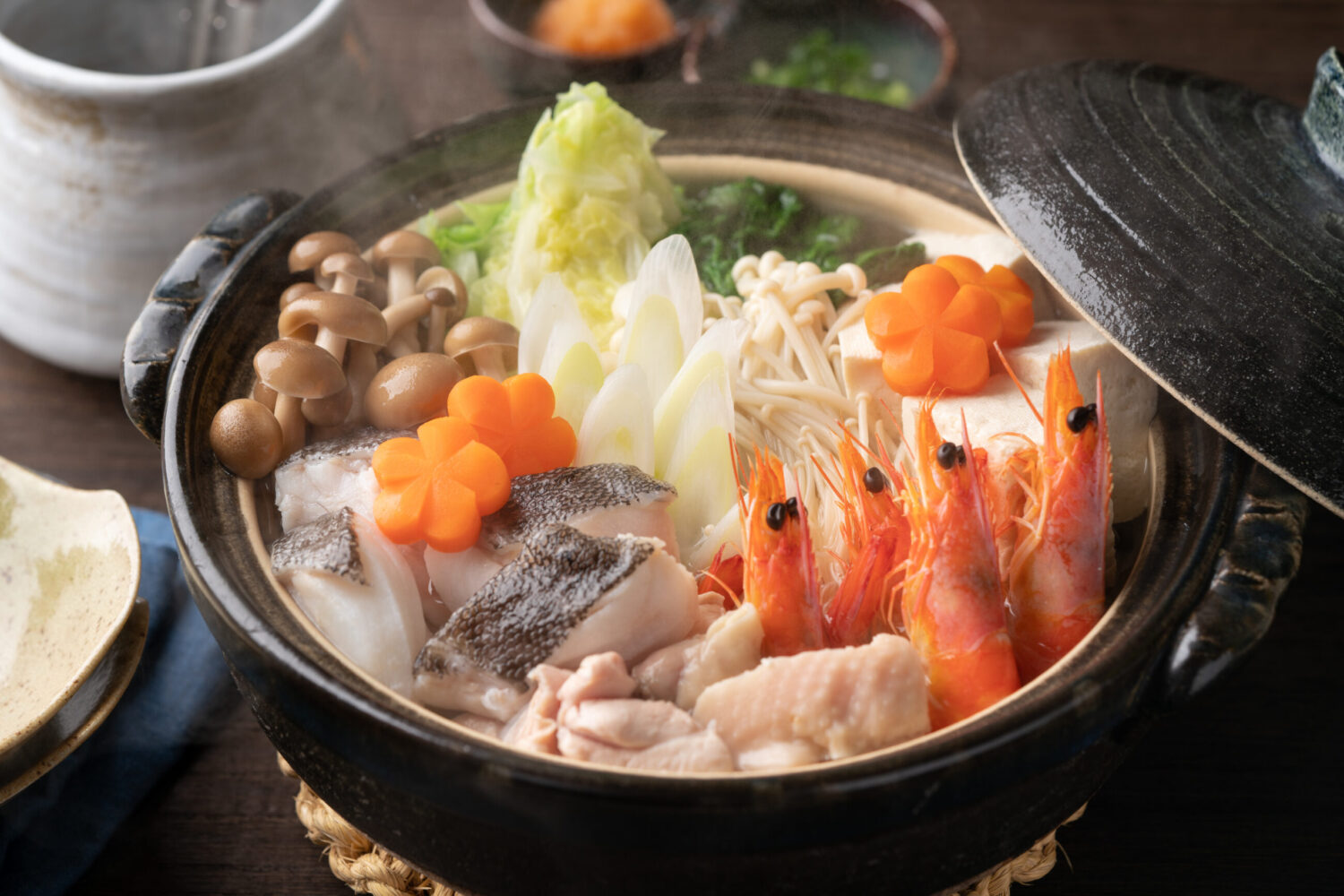
Delve into the cozy world of Nabe, a traditional Japanese hot pot that is perfect for social gatherings. This communal dish involves simmering a mix of fresh ingredients like seafood, meat, tofu, and vegetables in a flavorful broth right at the dining table. Participants can choose their favorite items, cook them in the shared pot, and enjoy them with various dipping sauces. Nabe is not just a meal; it’s a warm, sociable experience that brings people together, making it a delightful way to enjoy Japan’s rich culinary traditions during the chilly winter months.
Wagashi – Traditional Japanese sweets
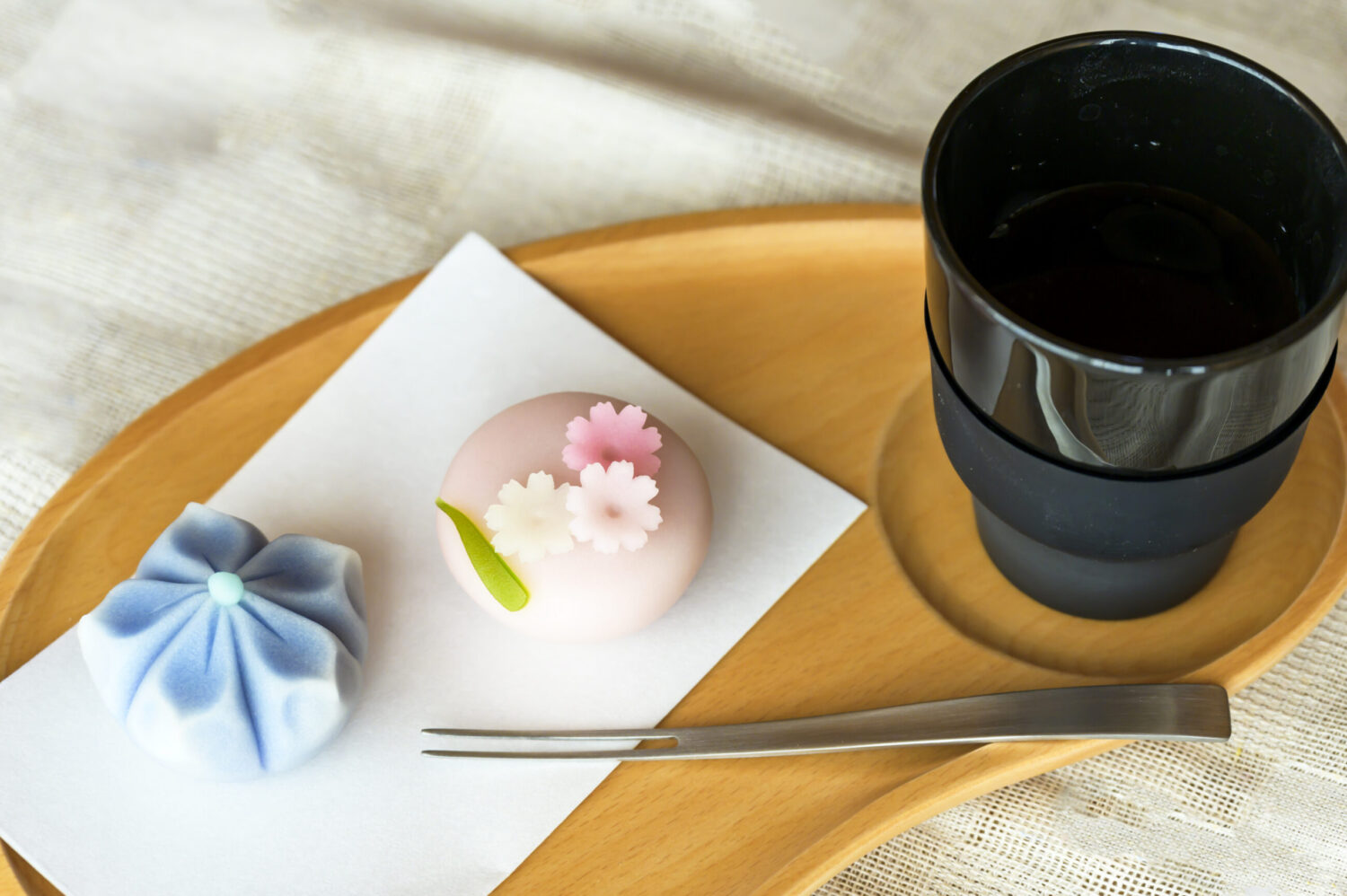
Discover Wagashi, traditional Japanese sweets that are as aesthetically pleasing as they are delicious. Crafted from natural ingredients like mochi, anko (sweet red bean paste), and fruit, Wagashi are often served during tea ceremonies, embodying the art of Japanese hospitality. These confections come in various shapes and sizes, inspired by the seasons and designed to complement the subtle flavors of Japanese green tea. Whether it’s the delicate Sakura mochi in spring or the hearty Kuri manju in autumn, Wagashi offers a delightful taste of Japan’s rich cultural and culinary heritage.
Somen
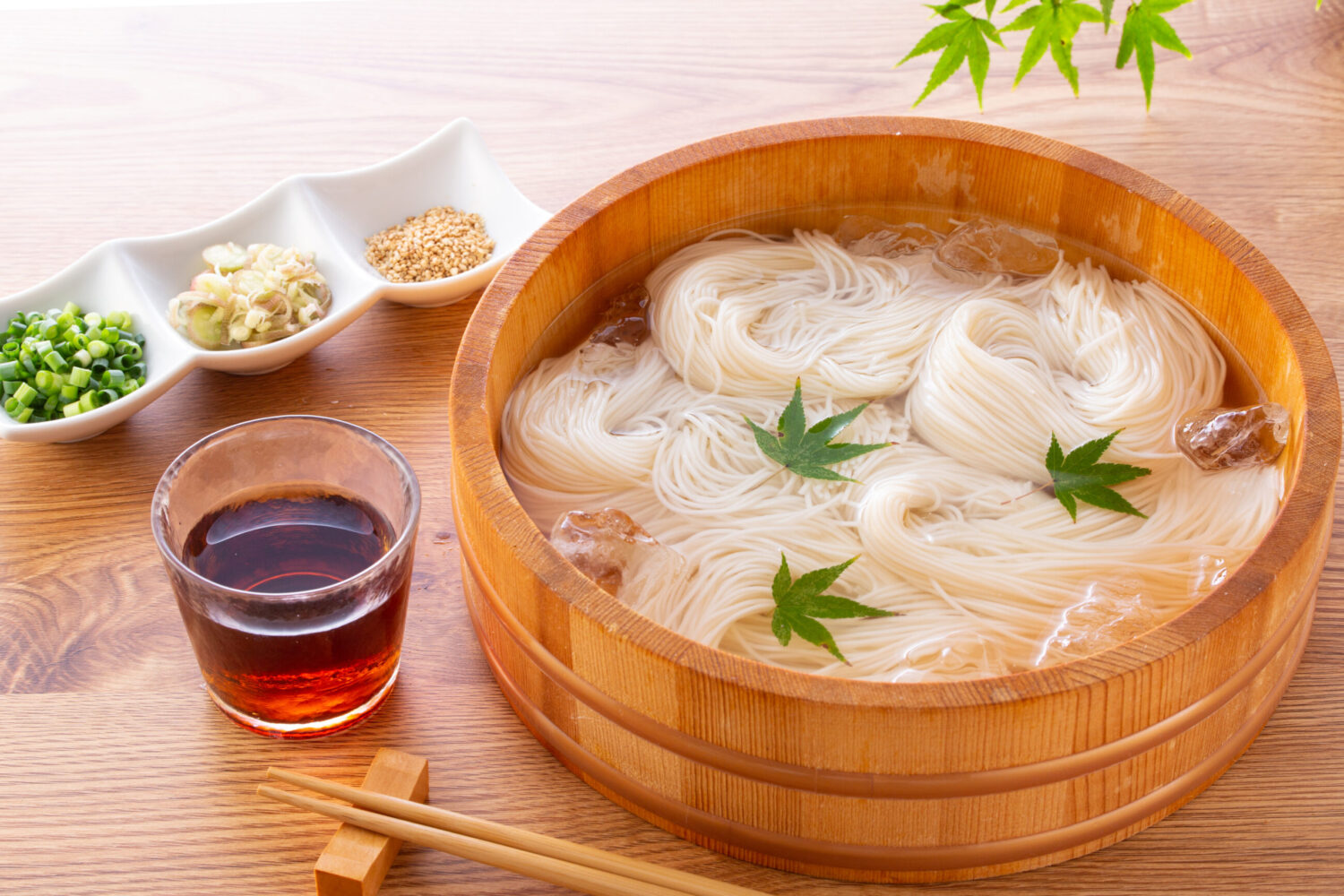
Experience Somen, a delightful Japanese noodle dish cherished for its light and refreshing qualities, especially popular during the sweltering summer months. These thin, delicate wheat noodles are served chilled, providing a cooling escape from the heat. Accompanied by a flavorful dipping sauce called tsuyu, made from soy sauce, mirin, and dashi, somen offers a subtle yet enriching taste. Traditionally, diners enjoy somen by dipping the noodles into the sauce, enhancing their mild flavor. This simple yet elegant dish is a staple of Japanese cuisine, embodying the culinary tradition’s emphasis on seasonality and refined tastes.
Tofu
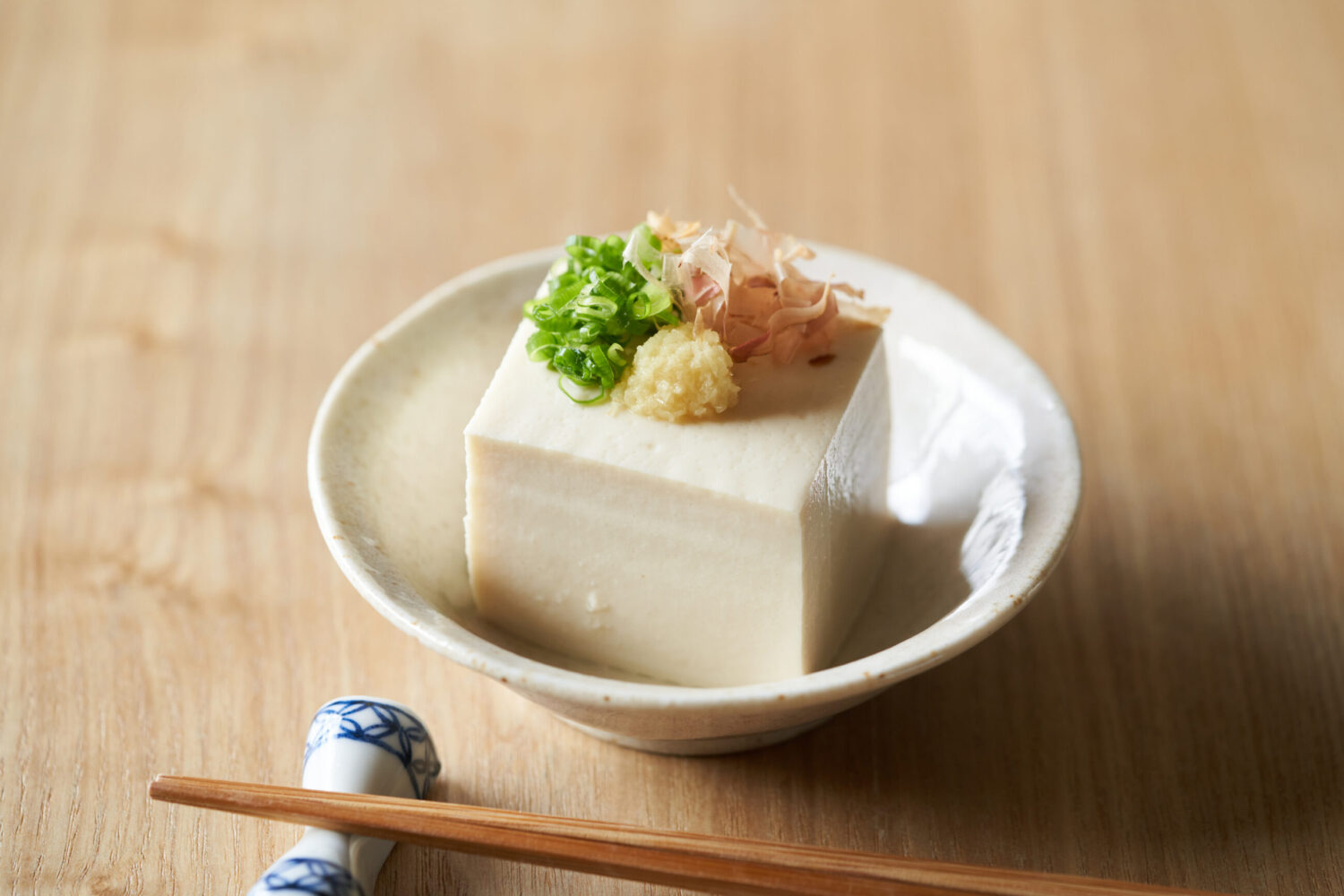
Discover the versatility of Tofu, a staple in Japanese cuisine known for its subtle flavor and impressive adaptability. Made from soybeans, tofu is a nutritious protein source that can be enjoyed in many forms—silken, firm, or fried. It absorbs flavors beautifully, making it perfect for dishes ranging from savory hot pots and stir-fries to sweet desserts. Tofu is often featured in traditional dishes like Miso Soup and can be eaten cold, dressed with soy sauce and garnishes, or used as a meat substitute in vegetarian meals. Its health benefits and culinary flexibility make tofu a must-try for any food lover.
Rice
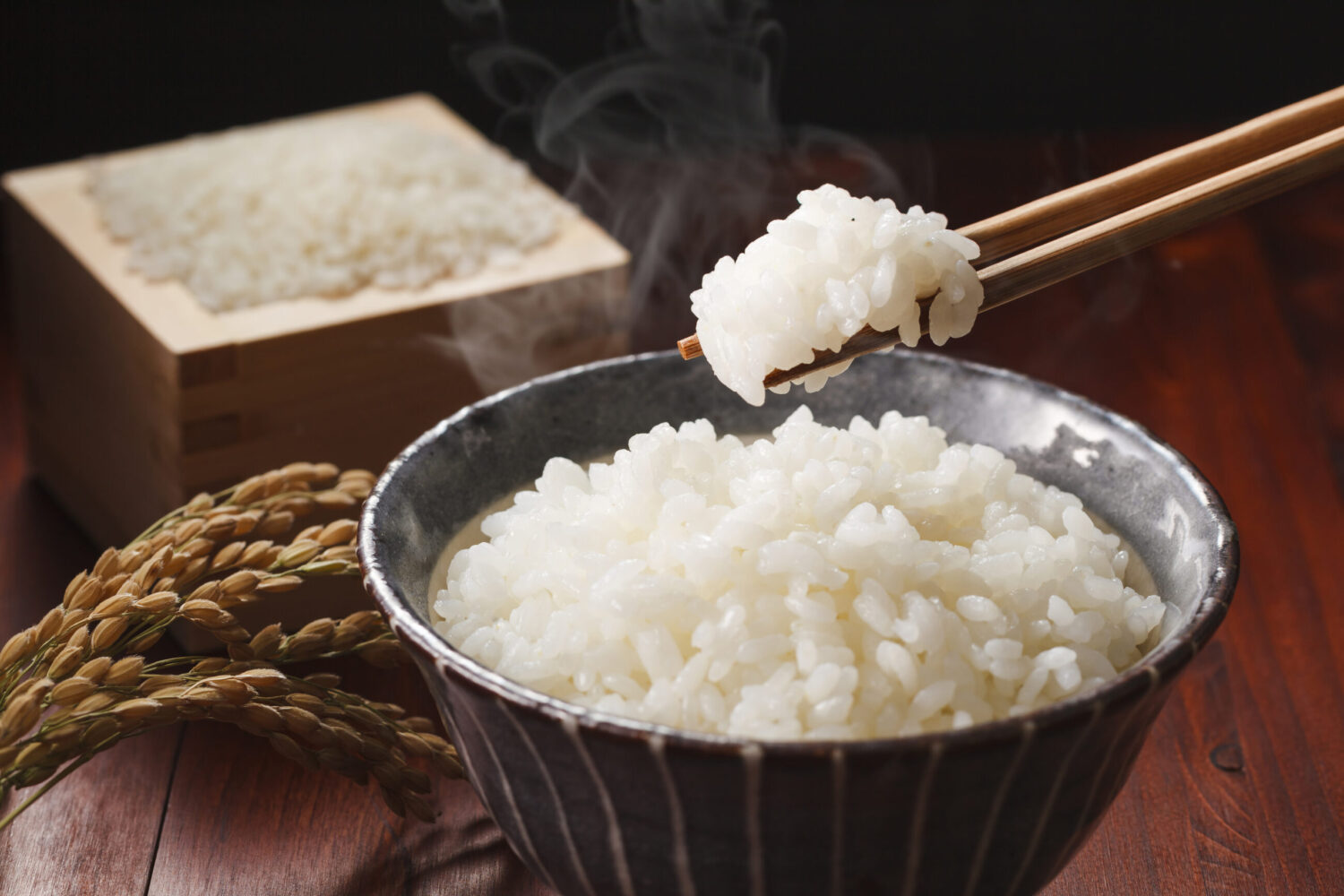
Explore the foundational element of Japanese cuisine: Rice. This staple food is revered for its ability to complement every dish it accompanies. Japanese rice is distinctively sticky and sweet, making it ideal for molding into shapes like sushi and onigiri, or simply serving alongside dishes to soak up delicious sauces. In Japan, rice isn’t just food; it’s a part of the culture, often enjoyed in its pure form to appreciate its subtle, natural flavor. Whether it’s part of a lavish meal or a humble bowl for breakfast, rice is essential to Japanese culinary traditions.
Katsudon
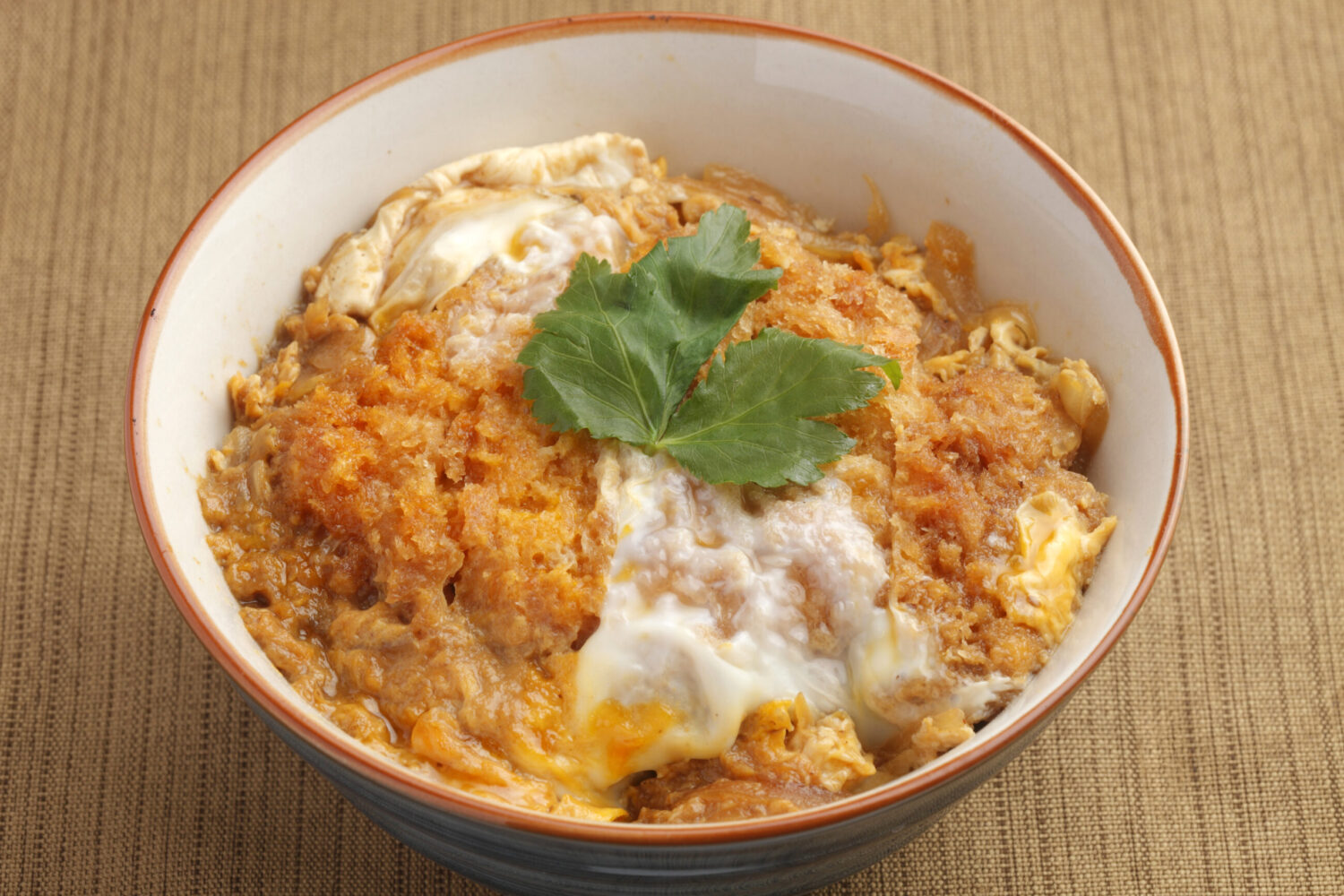
Indulge in Katsudon, a beloved Japanese comfort dish that combines crispy, breaded pork cutlet (tonkatsu) with eggs and onions simmered in a sweet and savory dashi-based sauce. This hearty mixture is then served over a bowl of steaming rice, making it a satisfying meal that’s both flavorful and filling. Katsudon is often enjoyed as a lunch or dinner and is popular among students for its reputed ability to bring luck in exams. The dish perfectly encapsulates the comforting essence of Japanese home cooking and is a must-try for those seeking to explore the heartier side of Japanese cuisine.
Gyudon
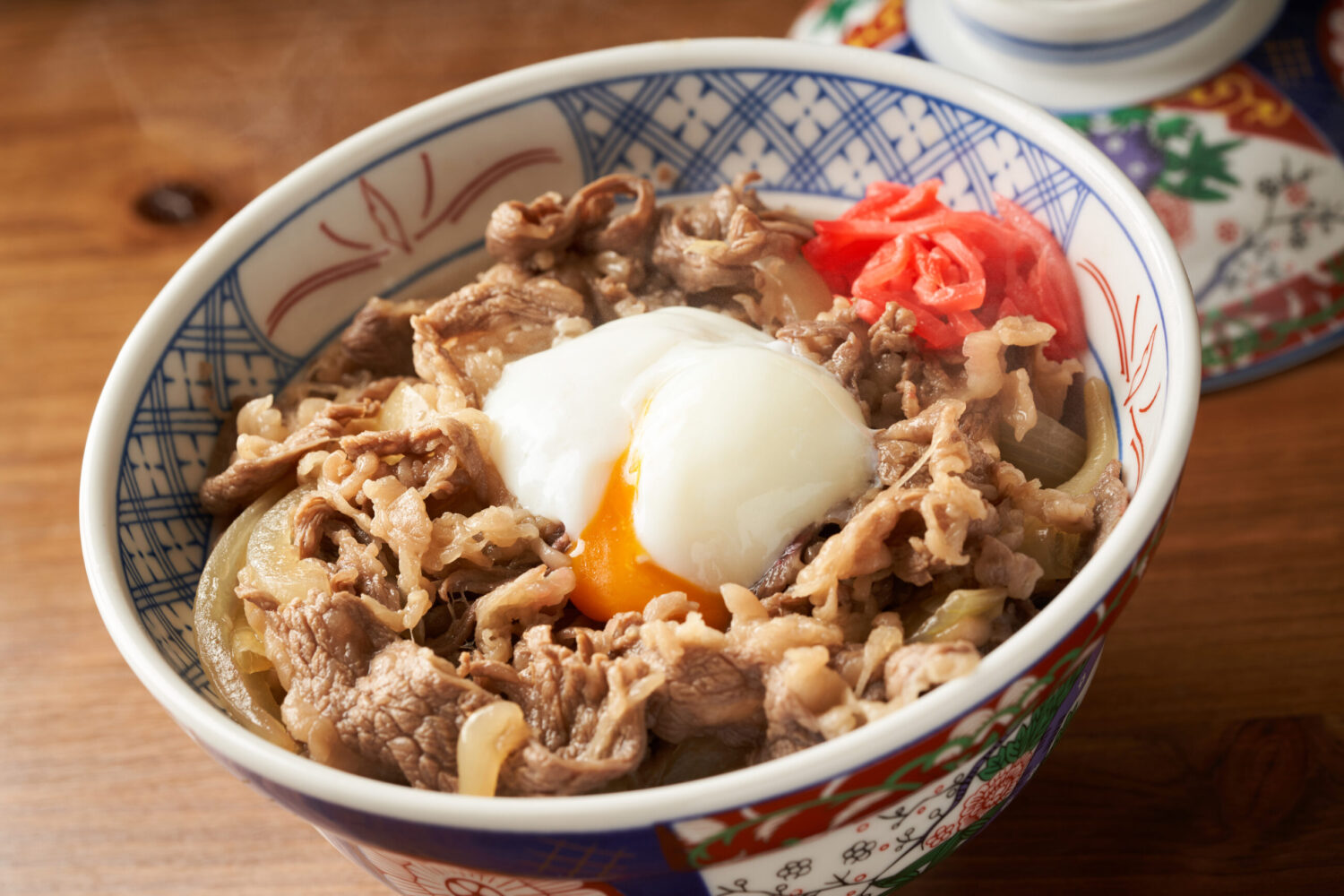
Dive into the comforting flavors of Gyudon, a popular Japanese bowl dish. This quick and satisfying meal consists of thinly sliced beef simmered in a mildly sweet and savory sauce made from soy sauce, sake, mirin, and sugar, then served over steaming white rice. Often topped with onions and sometimes garnished with pickled ginger or a raw egg, Gyudon offers a harmonious blend of flavors and textures. It’s a staple in Japanese fast food and is beloved for its convenience, affordability, and delicious taste, making it an ideal choice for a hearty meal on the go.
Bento
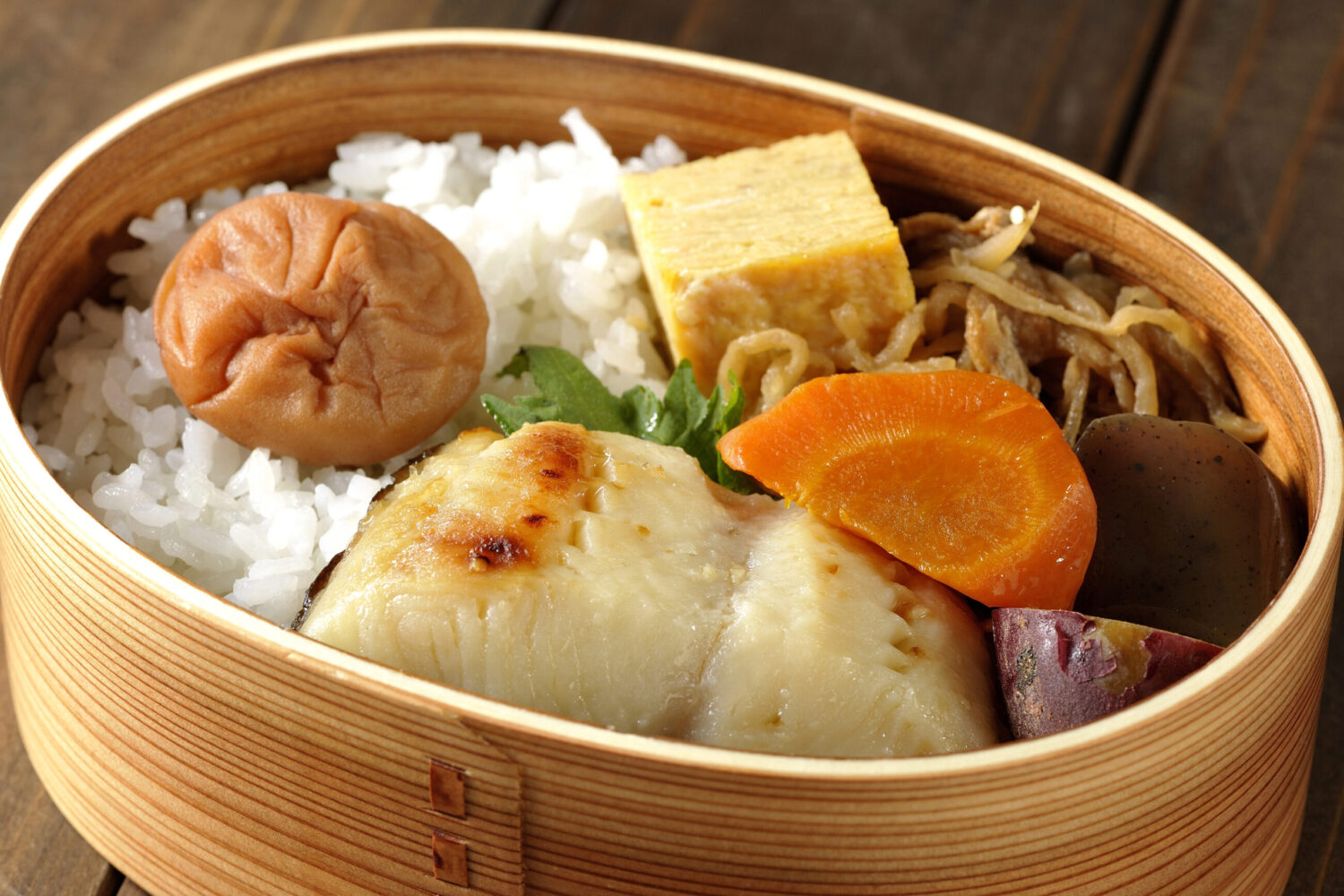
Explore the delightful world of Bento, a traditional Japanese packed meal that offers a balanced, visually appealing array of flavors. These portable lunch boxes typically include a variety of components such as rice, fish or meat, and an assortment of pickled or cooked vegetables. Crafted with care, Bentos are designed to be both nutritious and satisfying, making them perfect for meals on the go. They are a staple of Japanese culture, enjoyed by students, office workers, and travelers alike, providing a taste of home in a convenient, single-serving package. Each Bento is a mini feast that reflects the Japanese art of meal preparation and presentation.
Omelette rice

Discover Omelette Rice, or “Omurice,” a beloved Western-inspired Japanese dish that combines the comforting flavors of home cooking. This delightful meal features fried rice, often mixed with chicken, vegetables, and ketchup, all wrapped in a soft, fluffy omelette. The dish is typically drizzled with more ketchup or a rich demi-glace sauce for extra flavor. Omurice is a favorite among both children and adults for its savory, satisfying taste and playful presentation. It’s a perfect example of yōshoku (Western-influenced Japanese cuisine) and offers a unique fusion that appeals to a wide range of palates.
Nikujaga
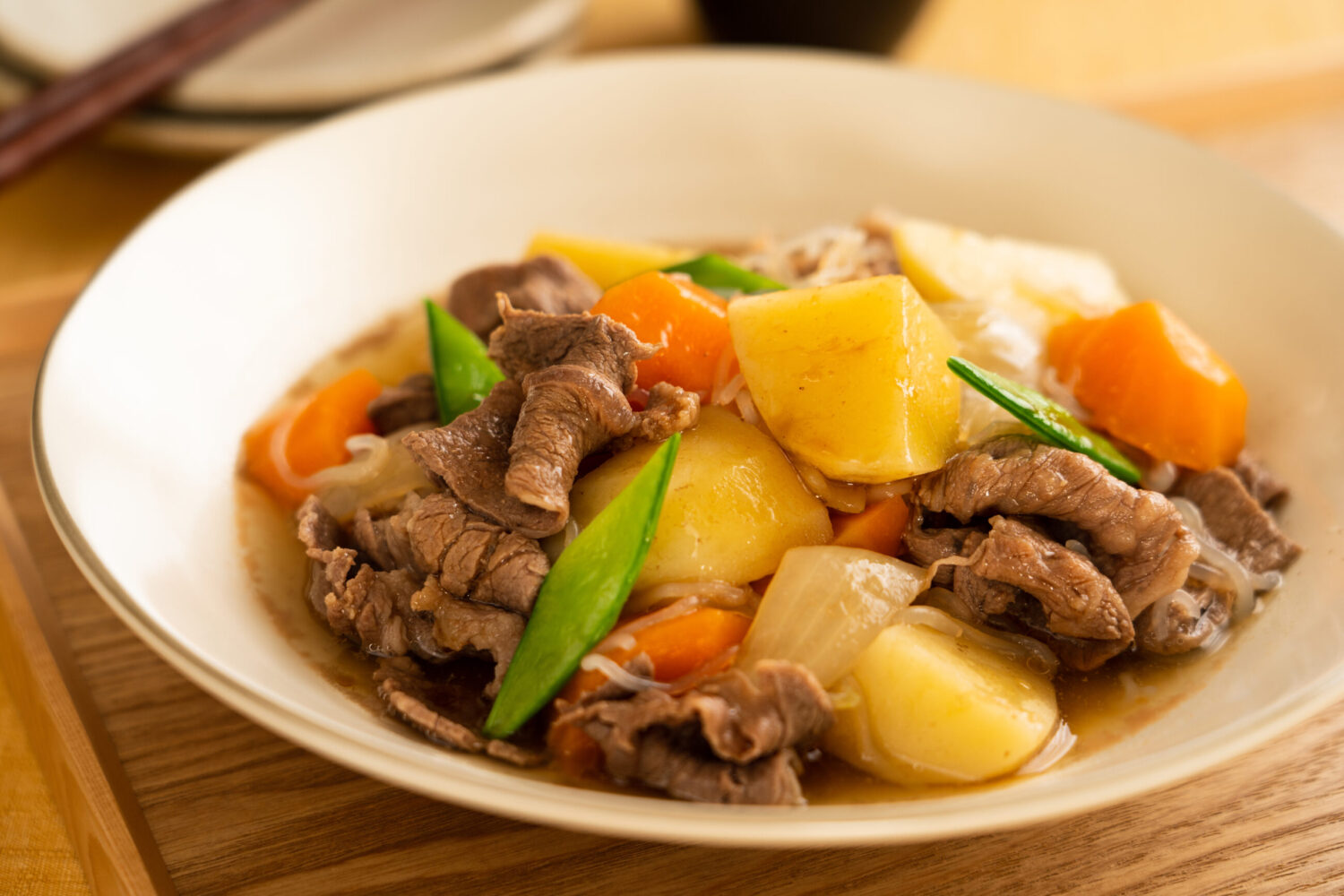
Taste the comfort of Nikujaga, a homey Japanese dish that warms the soul. This stew-like meal consists of tender slices of beef simmered with potatoes and onions in a sweet-savory sauce made from soy sauce, sugar, and mirin. Often considered a mother’s taste, Nikujaga is a staple in Japanese households, symbolizing warmth and family comfort. The dish is typically served with rice and provides a nourishing, satisfying experience. Perfect for those chilly evenings, Nikujaga not only fills the stomach but also offers a glimpse into the everyday culinary traditions of Japan.
Yakisoba
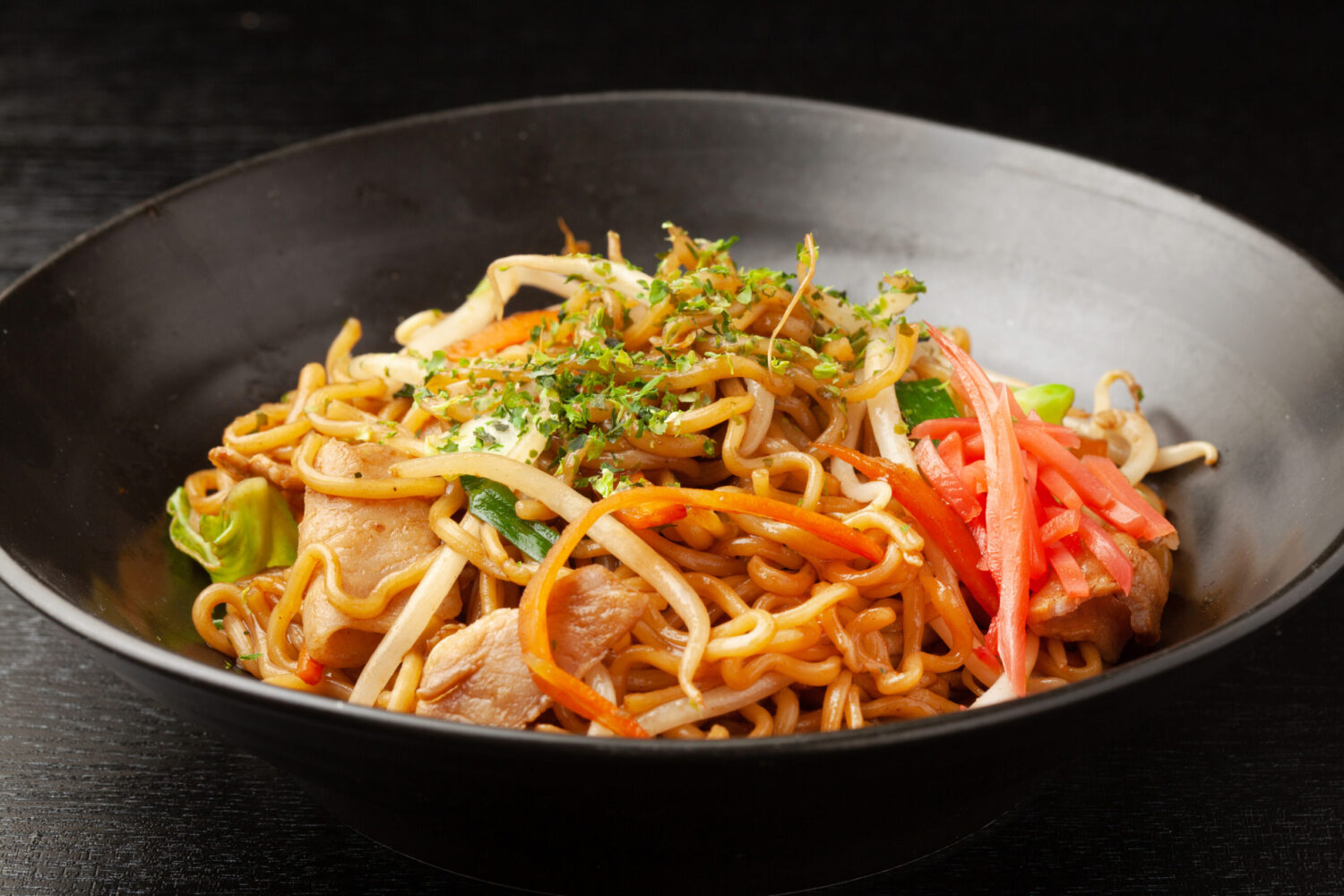
Experience Yakisoba, a popular Japanese street food that is both delicious and easy to find at festivals and food stalls. This stir-fried noodle dish features thin, wheat-based noodles tossed with bite-sized pork, cabbage, carrots, and onions, all seasoned with a tangy, slightly sweet sauce. Often garnished with pickled ginger, seaweed flakes, and mayonnaise, Yakisoba offers a delightful mix of flavors and textures. It’s served hot and fast, making it a perfect quick meal or snack while exploring. Yakisoba’s irresistible combination of savory ingredients and convenient preparation makes it a must-try for any visitor to Japan.
Kaiseki – Traditional Japanese course meal
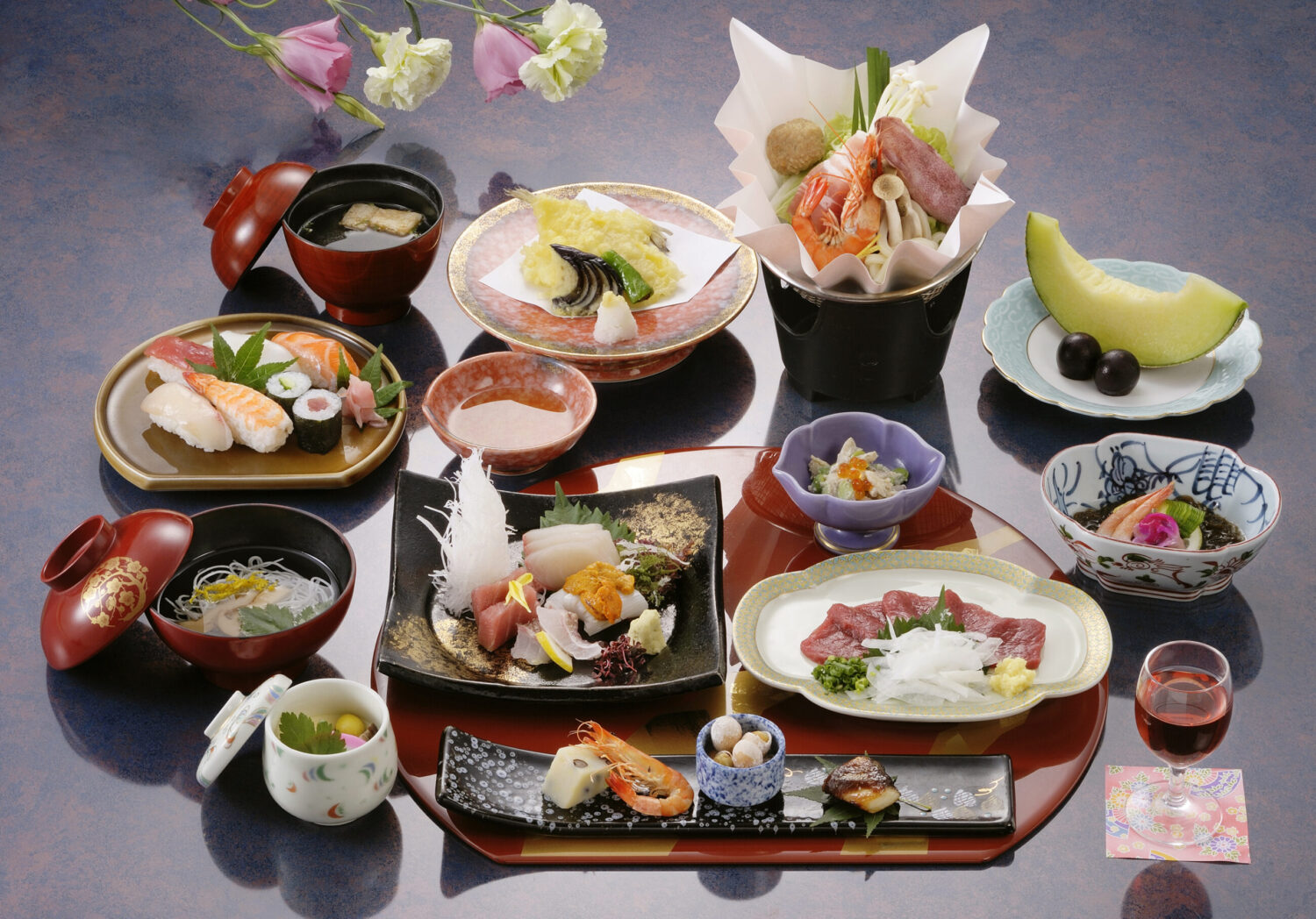
Indulge in Kaiseki, the epitome of Japanese culinary artistry. This traditional multi-course meal is a celebration of seasonal ingredients, meticulous preparation, and exquisite presentation. Each dish in a Kaiseki menu is carefully crafted to reflect the local flavors and aesthetic beauty of Japan’s culinary traditions. From delicate appetizers to refined sashimi, grilled items, and a harmonious ending with a seasonal dessert, Kaiseki offers a profound gastronomic experience. This dining style not only satisfies the palate but also enchants the senses, making it an unforgettable part of Japanese culture and hospitality.
Pickles
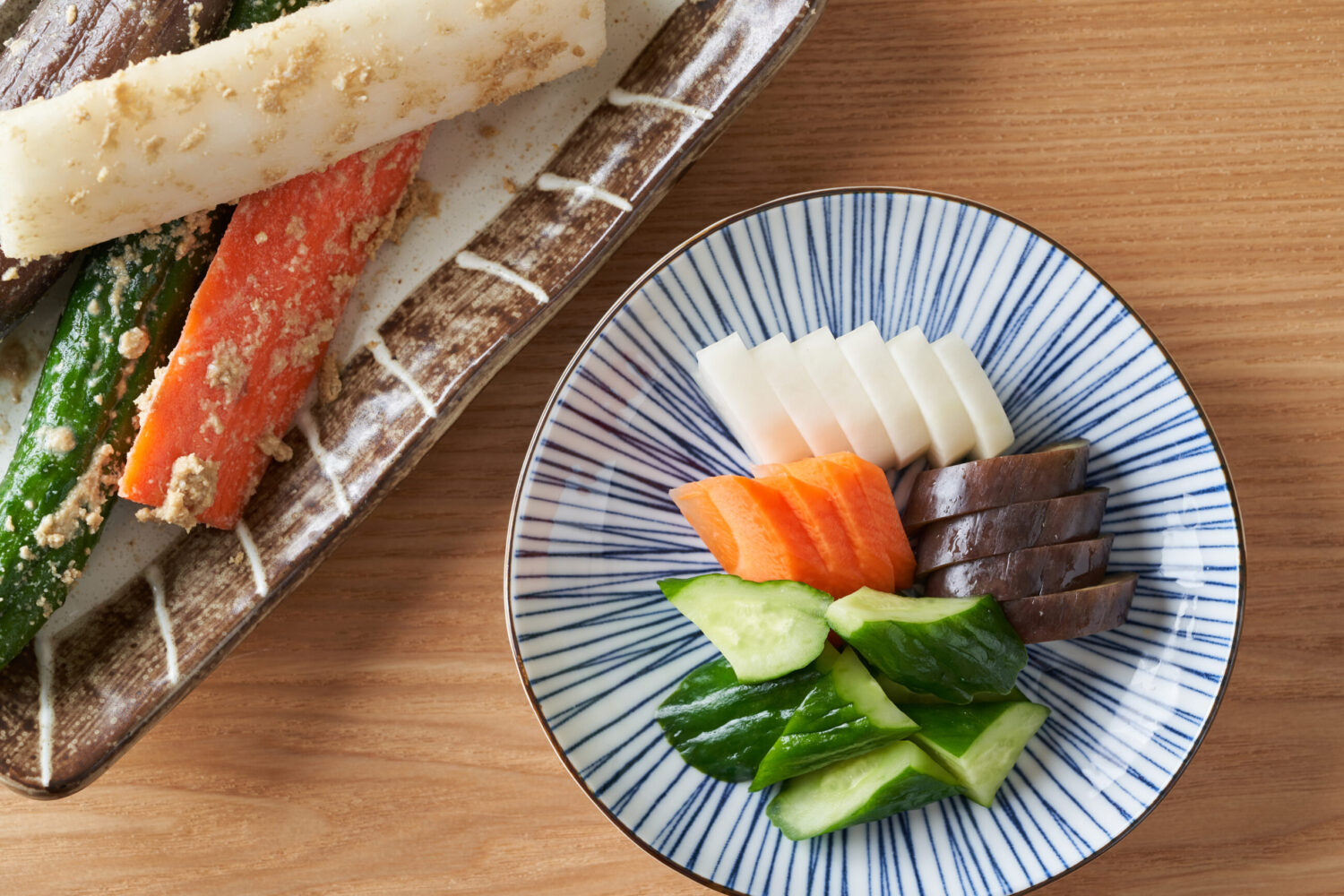
Explore the tangy and refreshing world of Japanese Pickles, known as “Tsukemono.” These traditional side dishes are made from a variety of vegetables, including radishes, cucumbers, and eggplants, preserved through methods like salting, pickling in rice bran, or fermenting in sake lees. Tsukemono are cherished for their ability to cleanse the palate and enhance the flavors of main dishes. Each type offers unique tastes, from subtly sweet to intensely sour, providing a delightful contrast to richer, savory meals. These pickles are not just a condiment but an integral part of Japanese cuisine, showcasing an age-old art of preservation.
Mochi
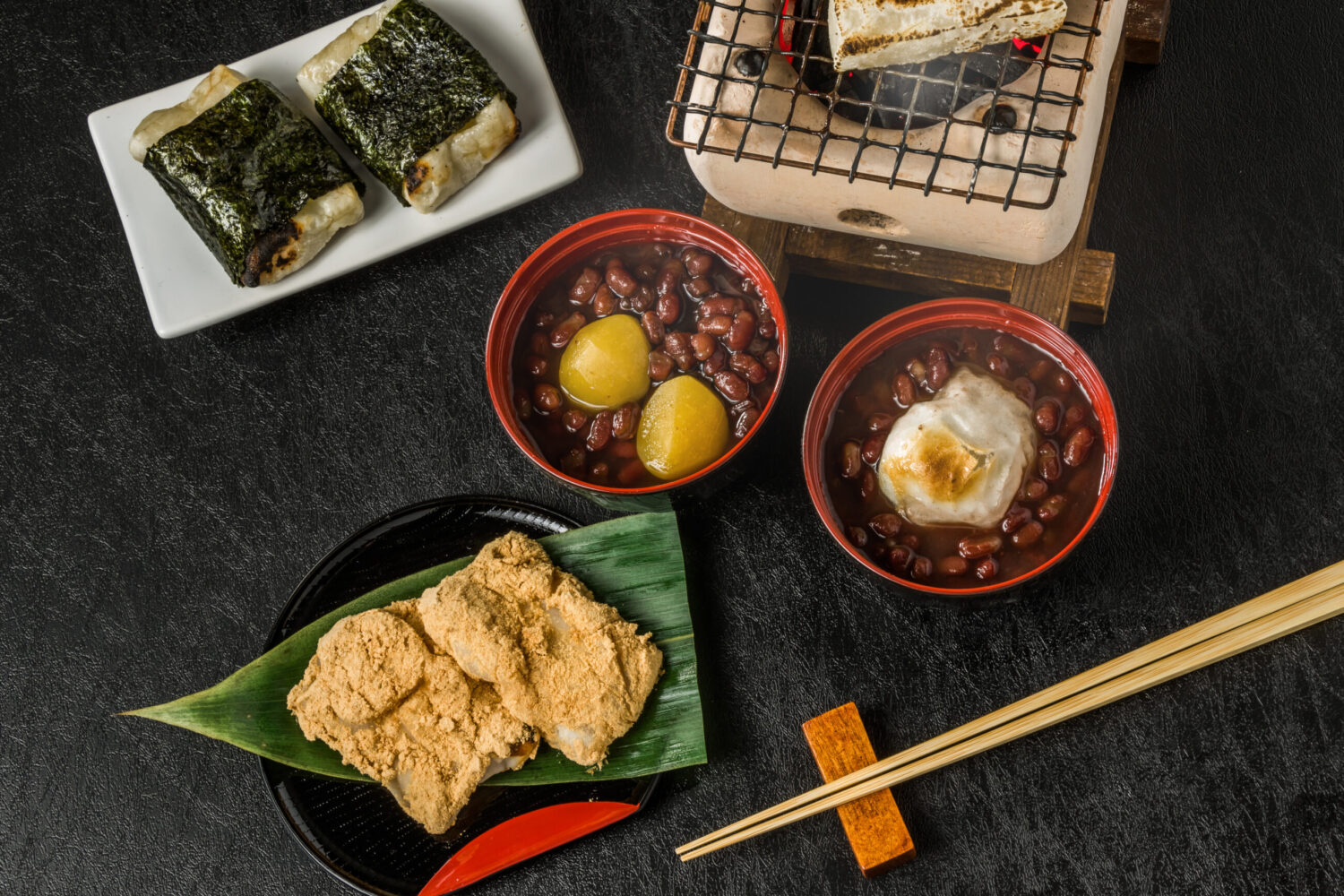
Delight in Mochi, a traditional Japanese treat made from glutinous rice pounded into a smooth, sticky paste and then molded into various shapes. This chewy delicacy can be enjoyed in many forms: sweet, filled with red bean paste; savory, wrapped in seaweed; or even grilled, which gives it a crispy outer layer with a gooey interior. Mochi is a staple during Japanese New Year celebrations and other festivals, symbolizing good fortune and longevity. Its unique texture and versatility make it a fascinating culinary experience for those exploring the rich tapestry of Japanese cuisine.
Teppanyaki
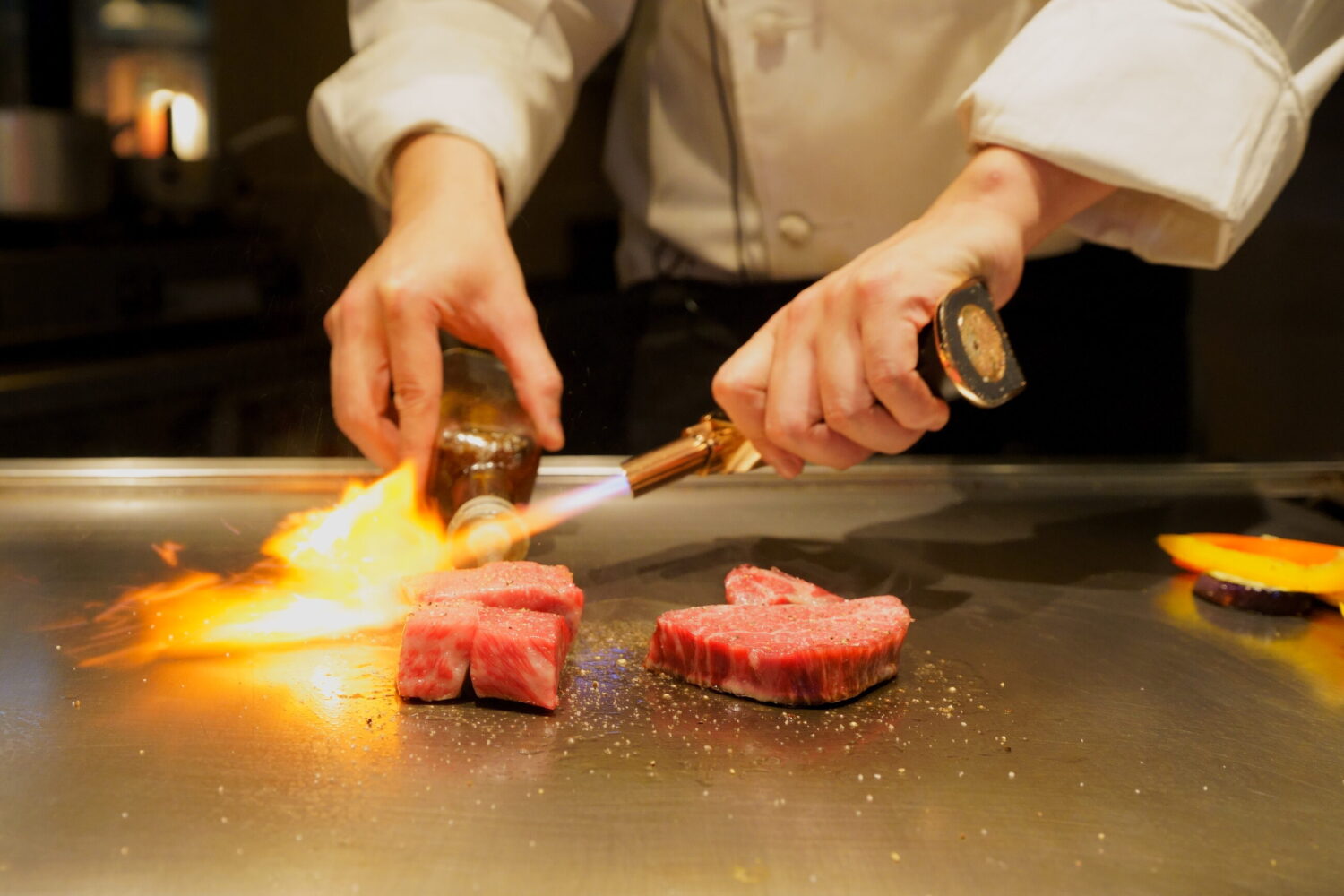
Experience Teppanyaki, an exciting and interactive style of Japanese cuisine where food is grilled on an iron griddle right before your eyes. This method highlights the freshness and quality of ingredients, ranging from steak and seafood to vegetables, all cooked to perfection with minimal seasoning. Teppanyaki chefs often perform impressive cooking techniques, making the dining experience both a visual and gastronomic delight. Typically served with rice and dipping sauces, Teppanyaki provides a unique, personalized meal that celebrates the natural flavors of its components, offering diners a memorable taste of Japanese culinary art.
Ginger pork
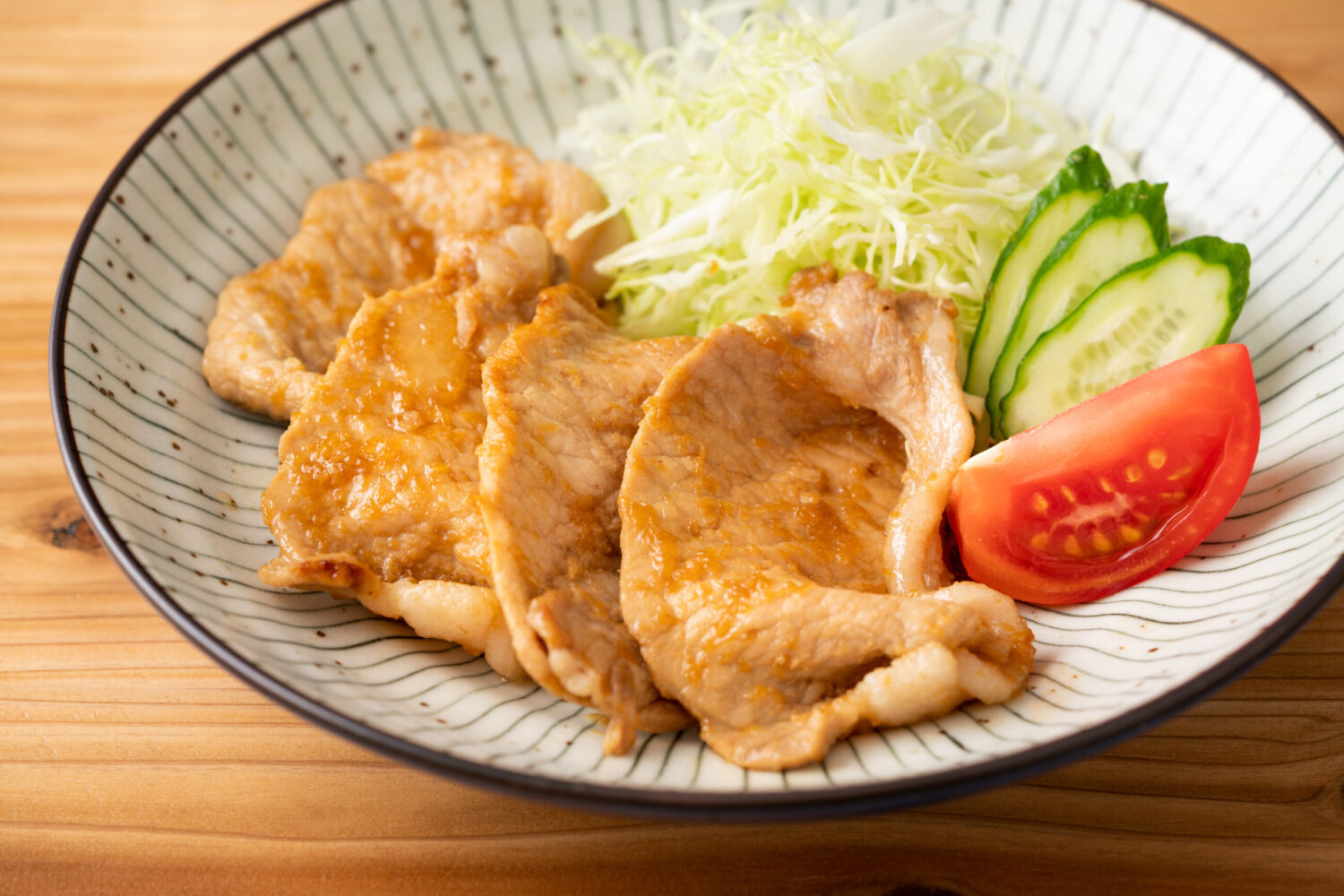
Savor the flavors of Ginger Pork, a popular Japanese dish known as “Shogayaki.” This delightful meal features thinly sliced pork marinated and sautéed with ginger, soy sauce, and mirin, creating a perfect blend of sweet and savory with a hint of spice from the ginger. Ginger Pork is typically served with a heap of shredded cabbage and steamed rice, making it a balanced, comforting meal. It’s a favorite in Japanese households for its quick preparation and delicious taste, providing a satisfying experience for anyone looking to enjoy a classic, flavorful Japanese dish.
Karaage
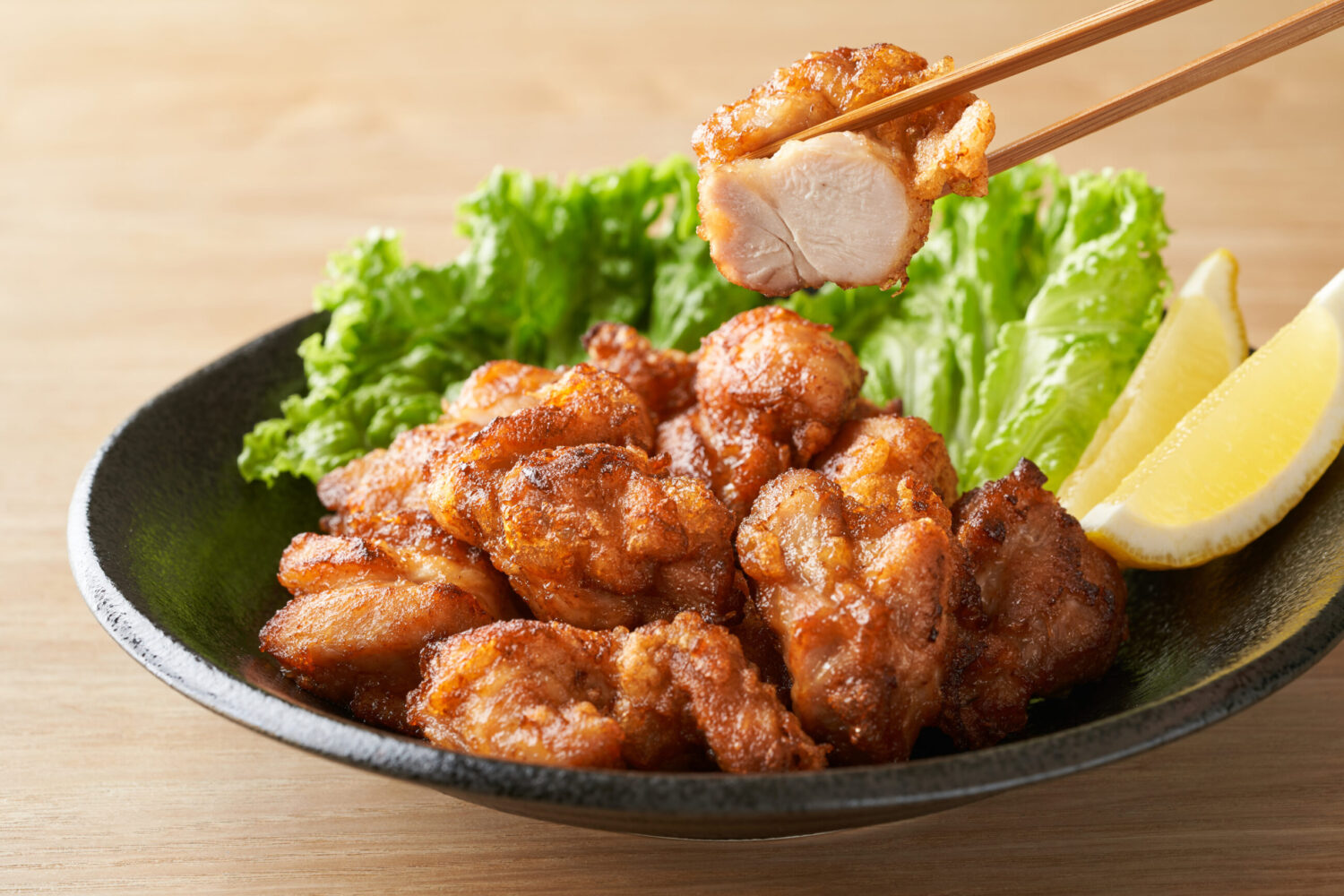
Indulge in Karaage, Japan’s beloved version of fried chicken. This mouthwatering dish features bite-sized pieces of chicken, marinated in soy sauce, ginger, and garlic, then lightly coated in flour or potato starch and deep-fried to achieve a crispy, golden exterior with a juicy, tender interior. Karaage is often served with a squeeze of fresh lemon to enhance its flavors and a side of mayonnaise for dipping. It’s a popular choice at izakayas (Japanese pubs) and as a street food, perfect for snacking or as part of a larger meal. Karaage’s addictive crunch and flavorful marinade make it a must-try Japanese culinary delight.
Grilled fish
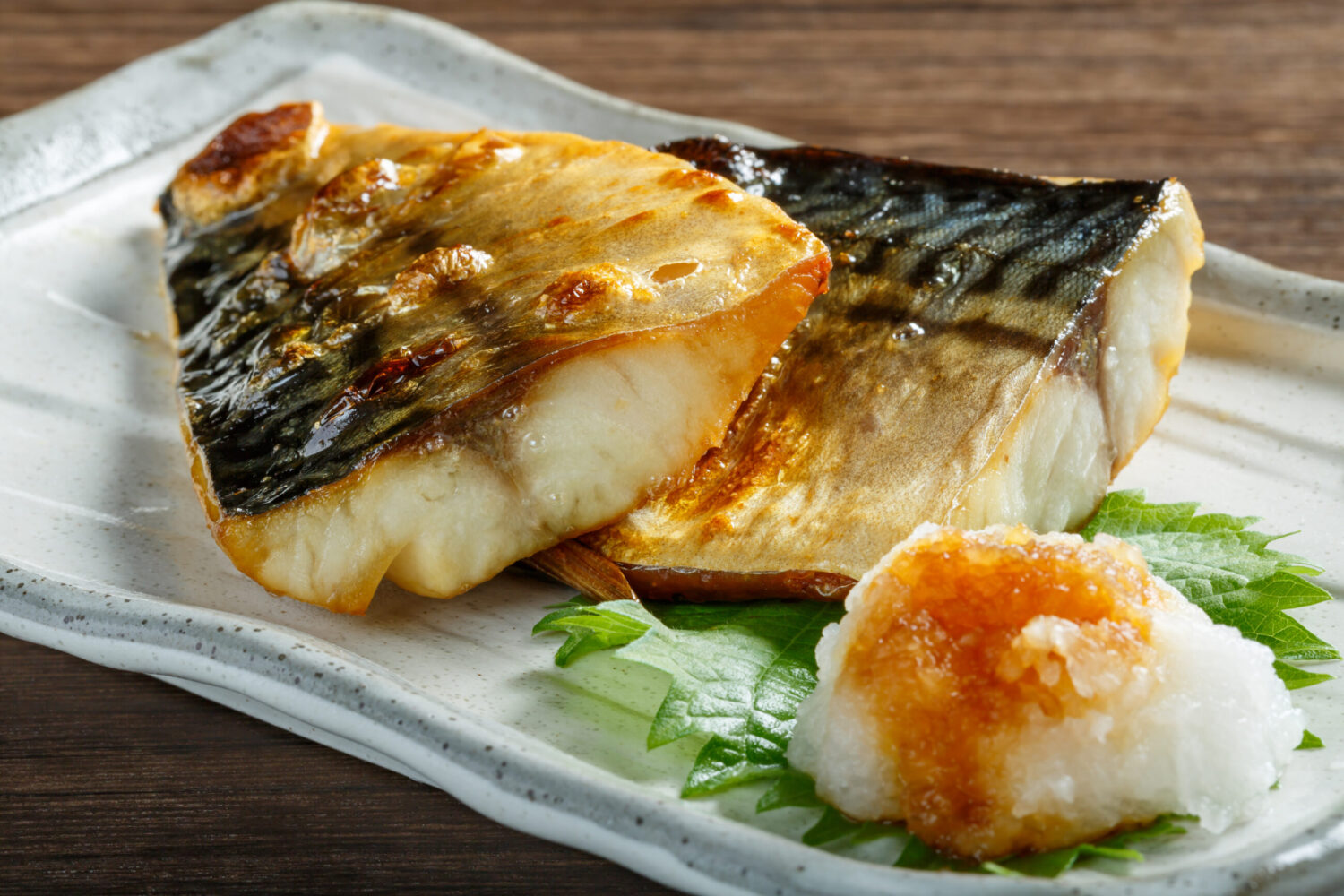
Experience the simple elegance of Japanese cuisine with Grilled Fish, a staple dish that showcases the natural flavors of the sea. In Japan, fish is often grilled whole or in fillets, seasoned lightly with salt or brushed with a glaze of soy sauce to enhance its delicate taste. This method of cooking preserves the fish’s moist texture and brings out its inherent sweetness. Grilled fish is commonly served with rice and pickled vegetables, making for a balanced, nutritious meal. Whether it’s mackerel, salmon, or sea bream, each variety offers a unique taste, reflecting the Japanese art of minimalistic, health-conscious cooking.
Fugu – Pufferfish
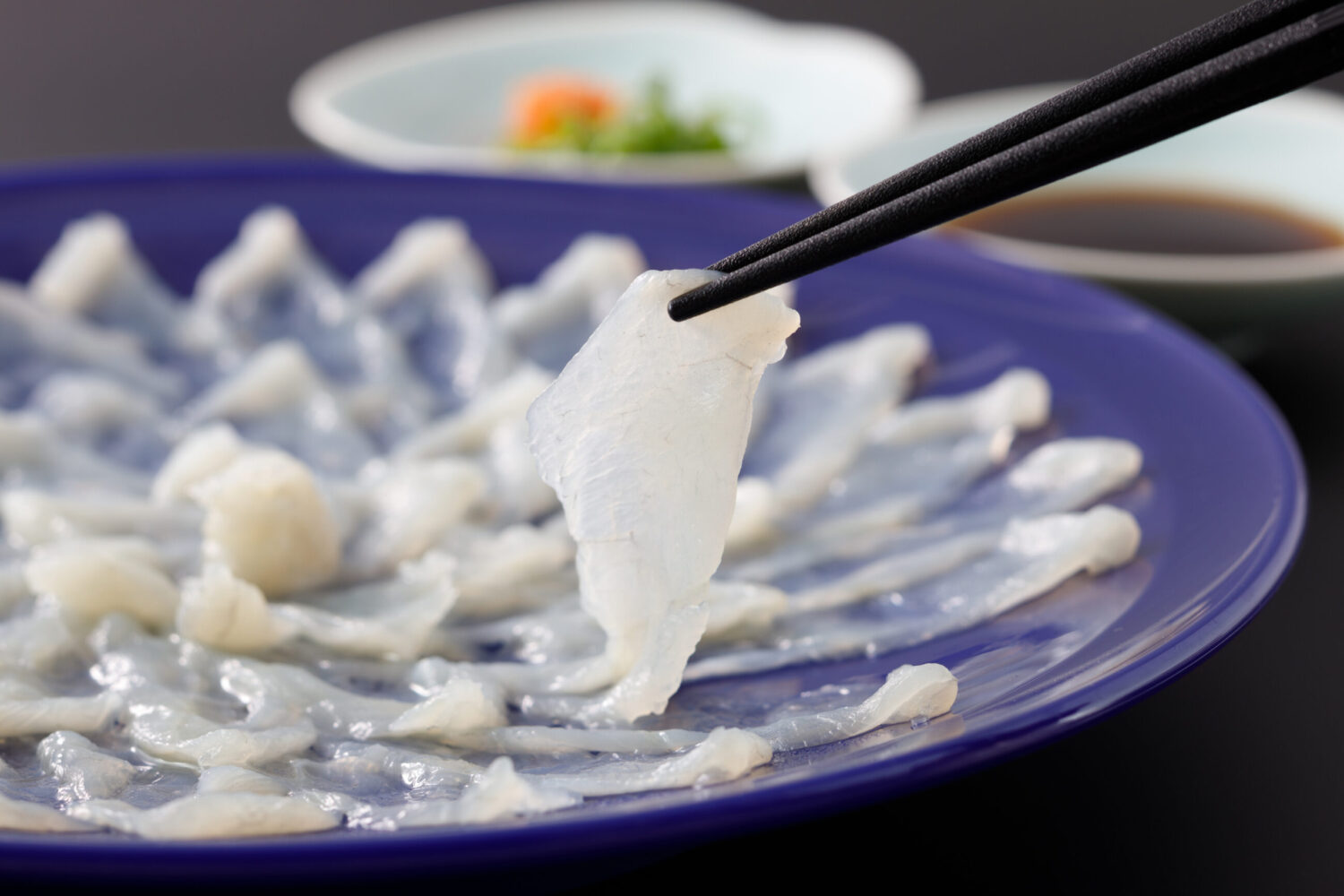
Dare to try Fugu, the infamous Japanese pufferfish, known for its potential lethality if not prepared correctly. This delicacy is meticulously prepared by licensed chefs who train for years to master the art of safely serving Fugu. The fish is often served as sashimi, thinly sliced so its almost transparent, or in a hotpot where its delicate flavor can be savored. Eating Fugu is a culinary adventure, heightened by the thrill of its rarity and risk. It’s a unique dining experience that combines exquisite taste with an element of excitement, reserved for the most adventurous of food enthusiasts.
Kushikatsu
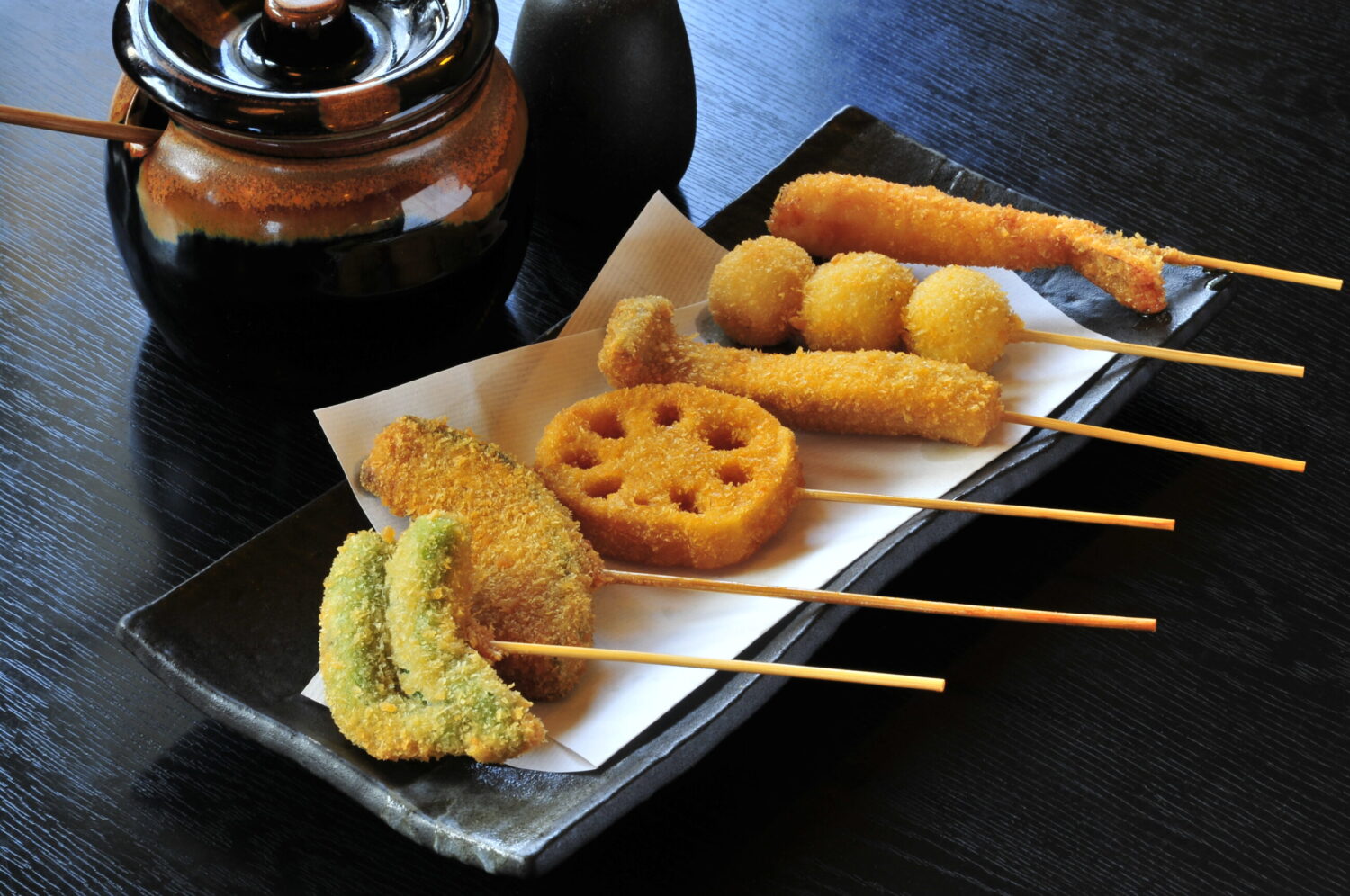
Explore the delights of Kushikatsu, a popular Japanese street food from Osaka that consists of skewered and breaded deep-fried meats, seafood, and vegetables. Each skewer is dipped into a light batter, coated in panko breadcrumbs, and fried until golden and crispy. Kushikatsu is traditionally served with a rich, savory dipping sauce, but remember the rule: no double dipping to keep the sauce clean for everyone. This dish offers a variety of textures and flavors, making it perfect for sharing and sampling different combinations. Enjoy Kushikatsu as a casual, tasty treat that perfectly embodies the spirit of Japanese comfort food.
Beef tongue
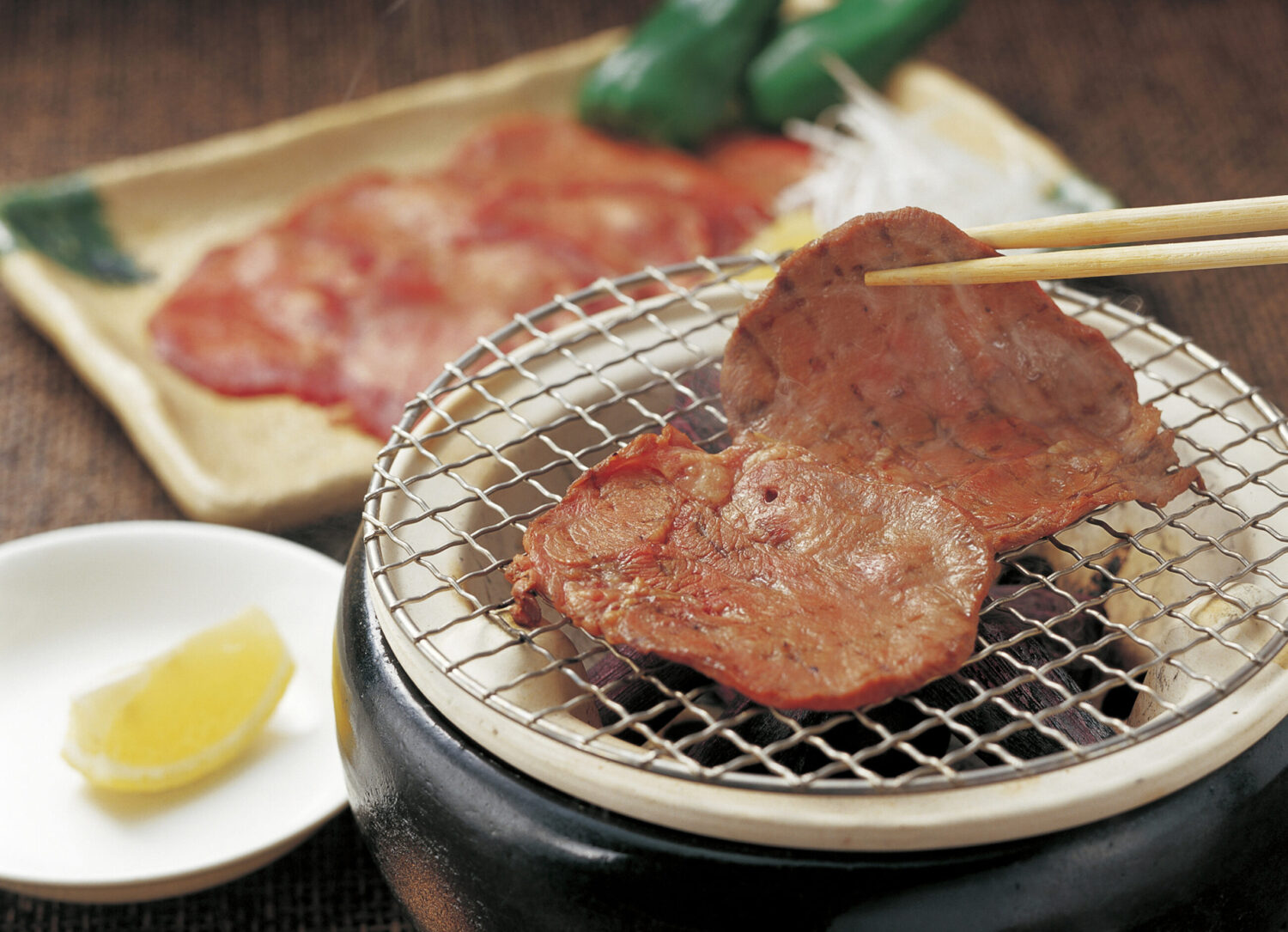
Discover the rich, tender delight of Beef Tongue, a delicacy in Japanese cuisine. Often served in yakiniku restaurants, this cut is prized for its soft, buttery texture and deep, meaty flavor. Thinly sliced and grilled to perfection, Beef Tongue is typically seasoned with a sprinkle of salt or a dab of savory miso paste to enhance its natural taste. It’s commonly accompanied by a refreshing side of lemon and a spicy dip to cut through the richness. For those eager to explore the depth of Japanese culinary traditions, Beef Tongue offers a unique and exquisite taste experience.
Tamagoyaki
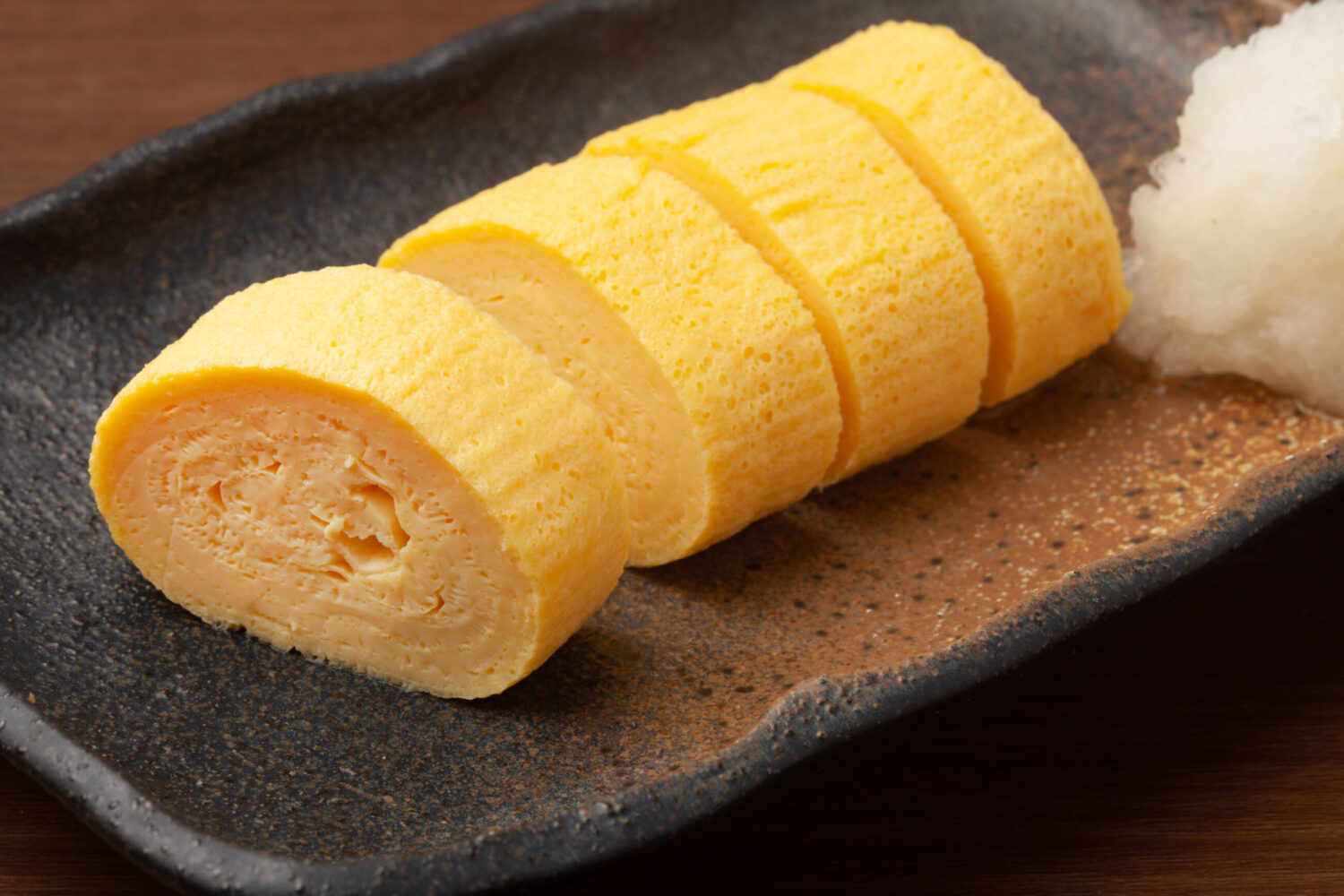
Experience Tamagoyaki, a beloved Japanese omelette that is as delicious as it is visually appealing. This rolled egg delicacy is made by layering thin sheets of seasoned egg, carefully cooked and rolled into a dense, layered block. Sweetened with sugar and flavored with soy sauce or mirin, Tamagoyaki boasts a unique blend of sweet and savory tastes, with a fluffy, light texture. It’s a common dish in bento boxes, at breakfast tables, and as a side dish in sushi bars. Tamagoyaki is not just food; it’s an art form, offering a glimpse into the precision of Japanese culinary techniques.
Edamame
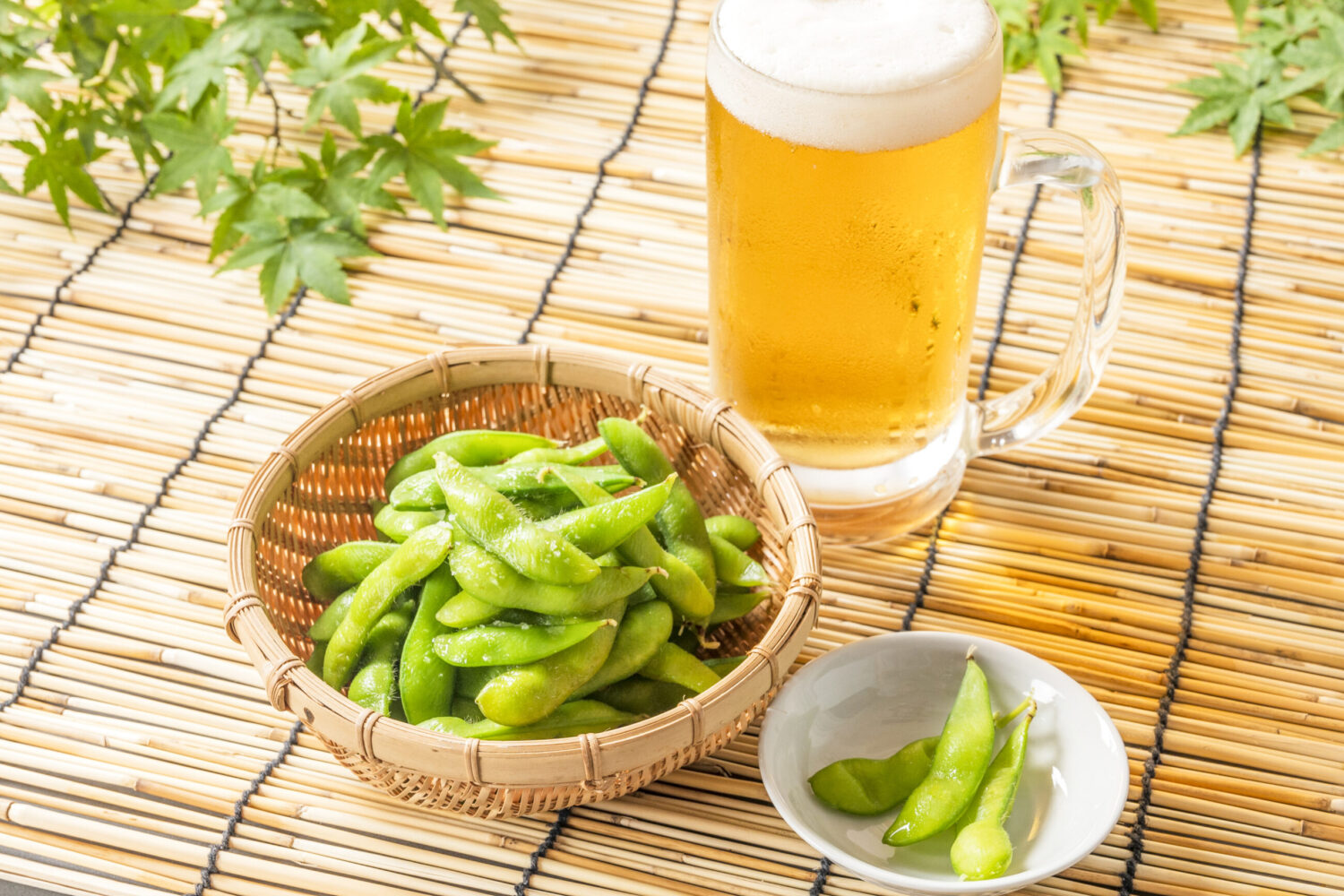
Enjoy Edamame, a simple yet irresistible Japanese snack. These young soybeans, picked before they fully ripen, are boiled or steamed and sprinkled with salt, offering a perfect balance of sweetness and saltiness. Edamame is commonly served as an appetizer in Japanese restaurants and is a favorite accompaniment to drinks at izakayas. This healthy snack is not only delicious but also packed with protein, making it a nutritious choice for any meal or gathering. Easy to eat by popping the beans out of their pods, Edamame provides a fun, interactive, and tasty introduction to Japanese culinary culture.
Yakiniku
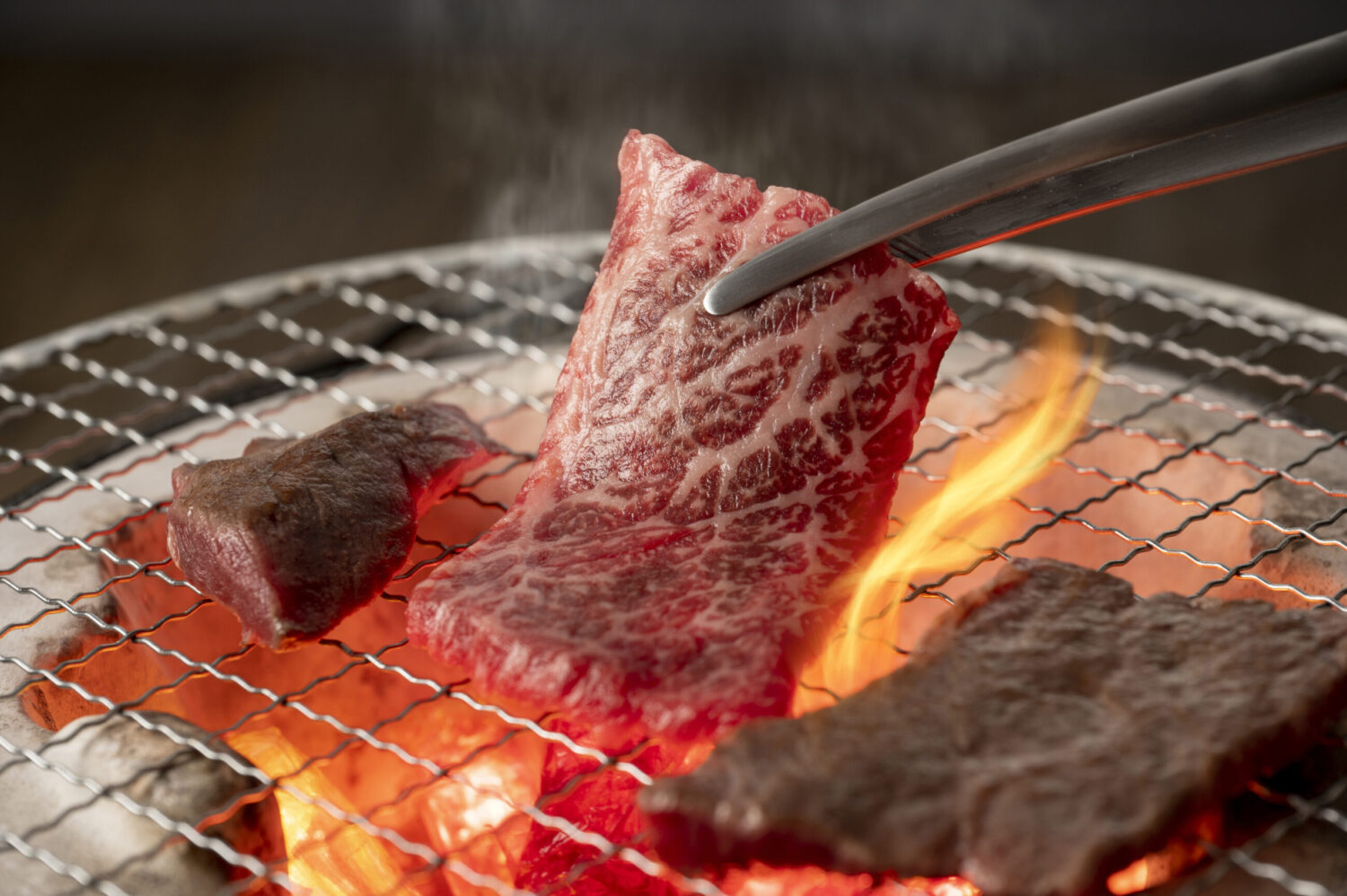
Indulge in Yakiniku, a popular Japanese barbecue where diners grill their own slices of marinated beef, pork, chicken, and various offal at the table. This interactive dining experience allows you to cook each piece to your liking, enhancing the flavors with dipping sauces like sweet soy or spicy miso. Yakiniku is not just about the food; it’s a social event, perfect for enjoying with friends or family. The sizzle of the grill and the aroma of cooking meats create an irresistible ambiance, making Yakiniku a must-try for those looking to dive deep into Japan’s rich culinary landscape.
Robatayaki

Experience Robatayaki, a traditional Japanese grilling method where seafood, vegetables, and meats are slow-cooked to perfection over hot charcoal. Originating from Japanese fishermen, this technique highlights the natural flavors of the ingredients through simple seasoning. Diners sit around a communal hearth, selecting skewers which chefs grill right before their eyes. Each morsel, served piping hot directly from the hearth, offers a smoky, tender taste. Robatayaki not only provides a delicious meal but also an immersive culinary experience, making it a captivating choice for anyone wanting to enjoy Japan’s rich, diverse food culture.
Chahan – Fried rice
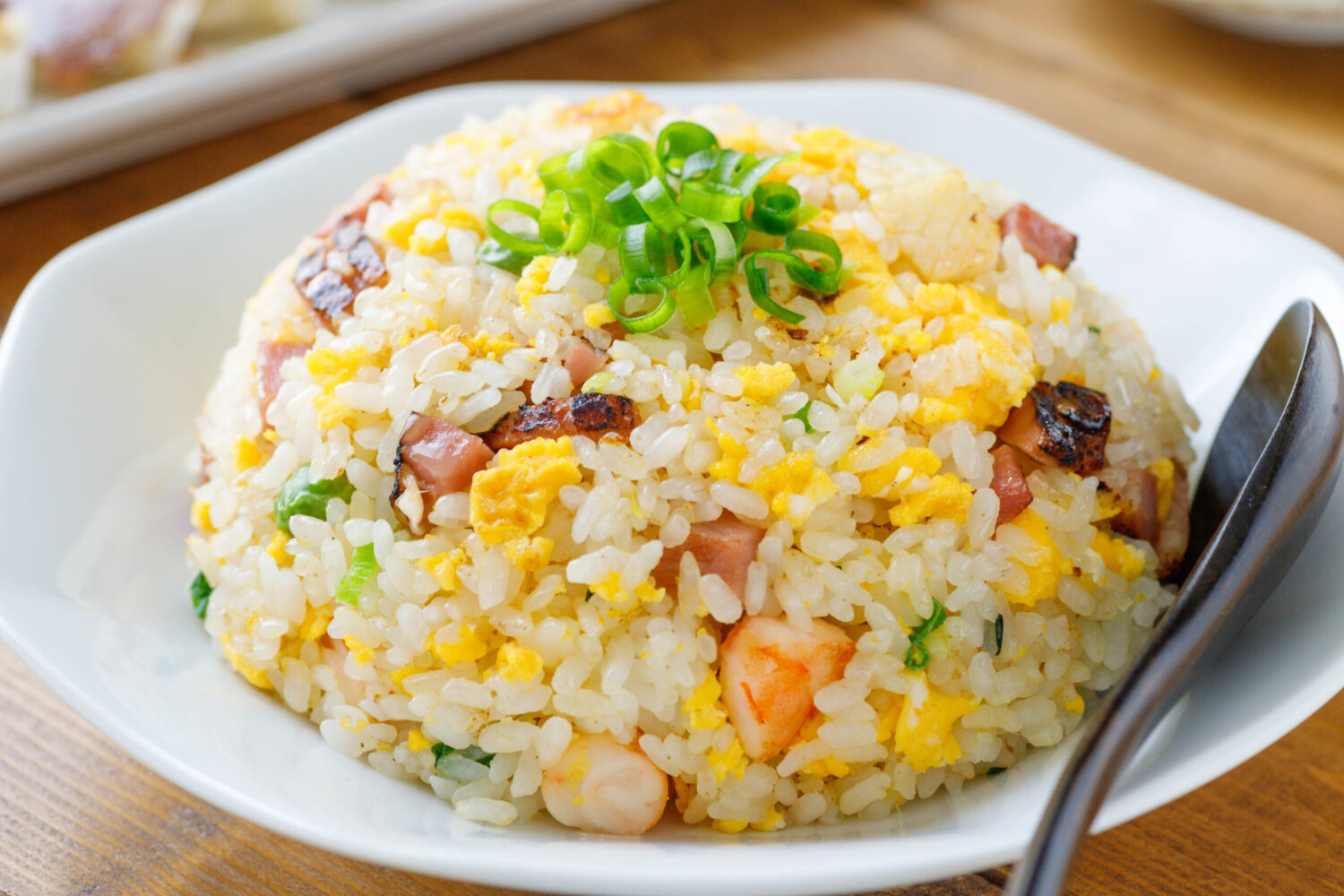
Savor Chahan, Japan’s delightful take on fried rice. This versatile dish is typically prepared by stir-frying cooked rice with a variety of ingredients such as eggs, vegetables, and bits of meat or seafood, often seasoned with soy sauce or oyster sauce for a rich umami flavor. Each region or household may have its own version, making Chahan a dish full of surprises and local flavors. Quick to prepare and universally loved, Chahan is a comforting meal that showcases the simplicity and elegance of Japanese cooking, making it a must-try for anyone exploring the breadth of Japan’s culinary offerings.
Tonjiru – Pork soup
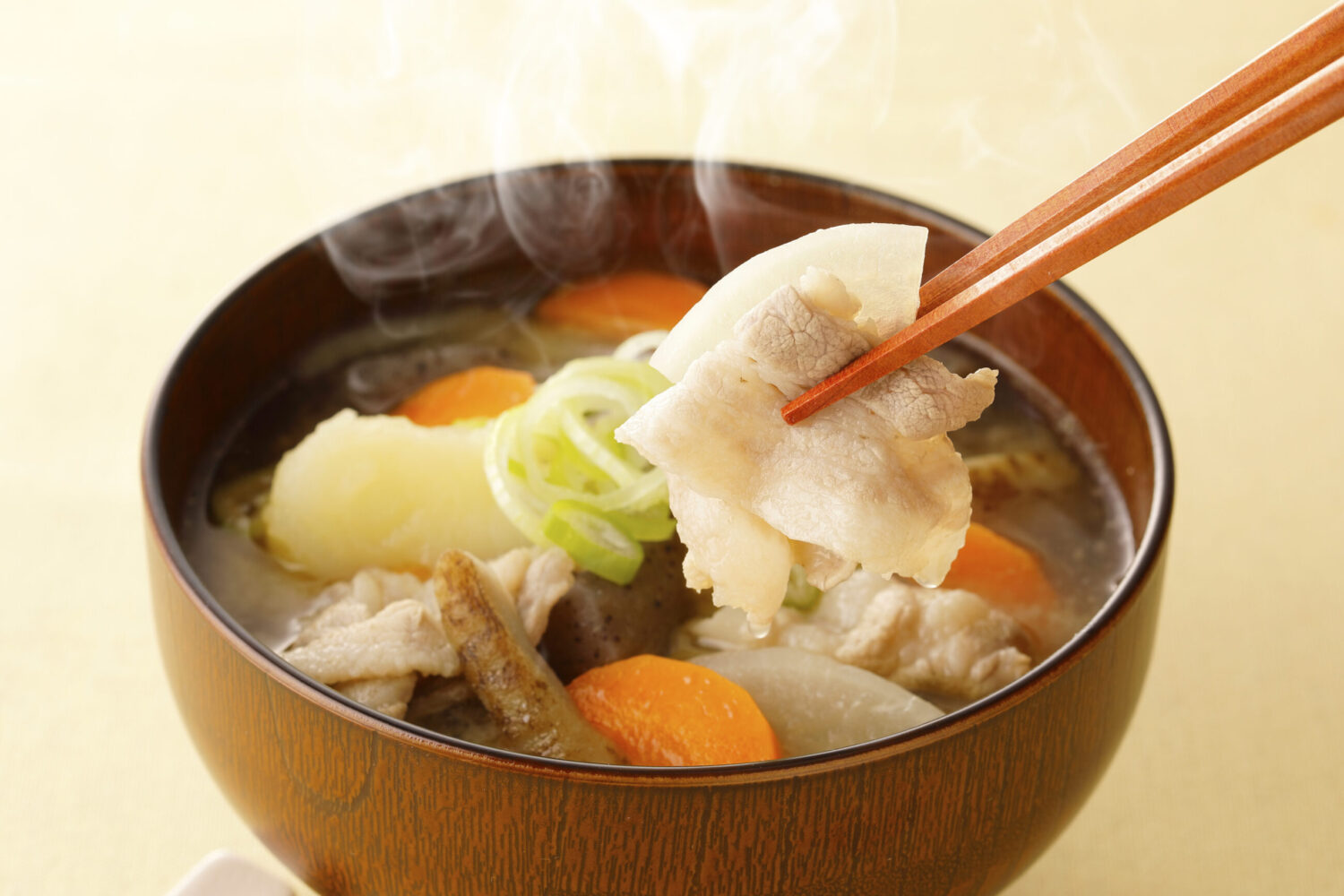
Warm up with Tonjiru, a hearty and flavorful Japanese pork soup that’s a more robust cousin of the classic miso soup. This comforting dish combines slices of pork belly with a variety of root vegetables and tofu, all simmered in a miso-based broth enriched with garlic and sesame oil. Tonjiru is often enjoyed during the colder months for its warming qualities and is commonly served alongside rice to make a filling meal. Its depth of flavor and nutritious ingredients make Tonjiru a beloved choice for those seeking a taste of traditional Japanese home cooking.
Kakuni
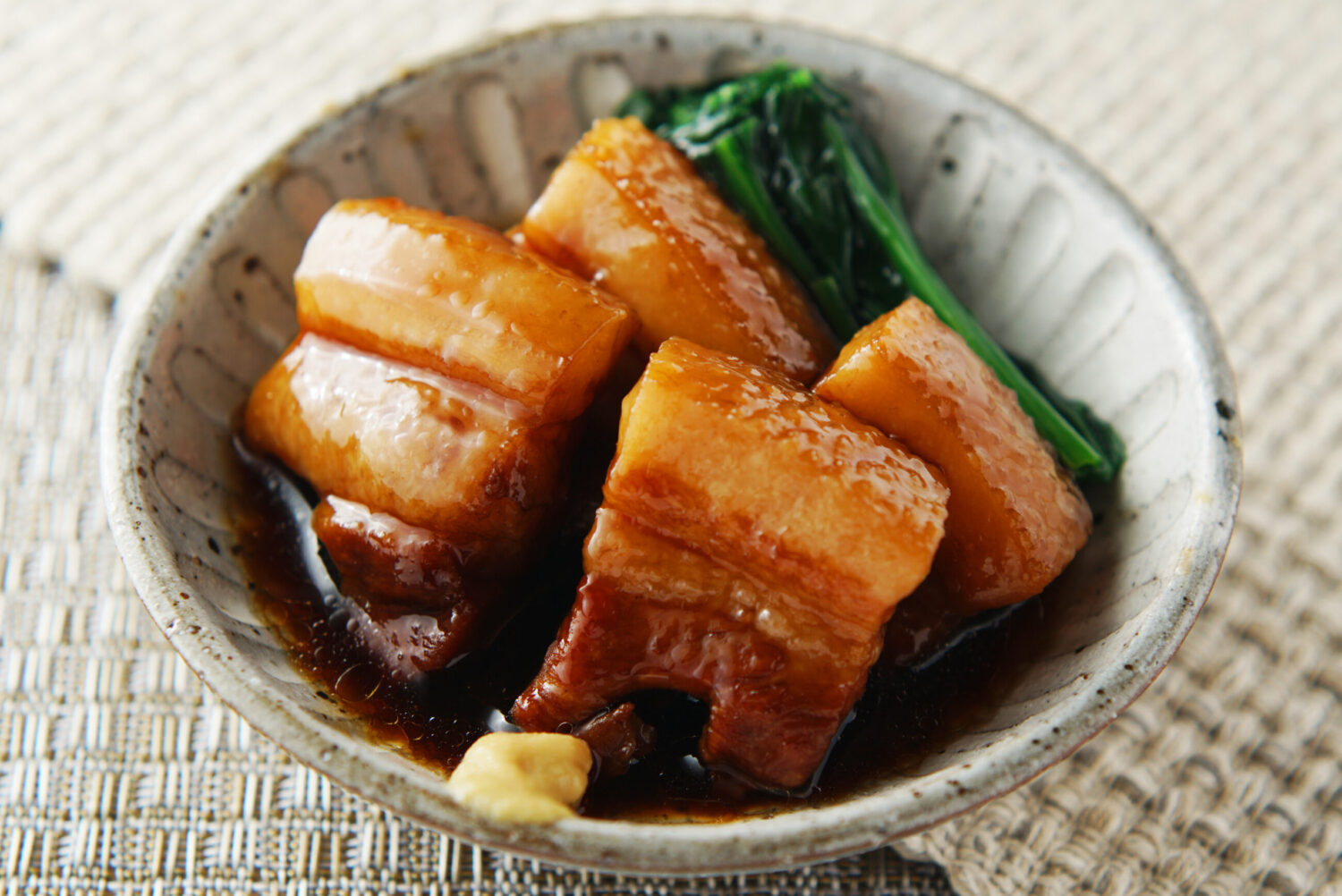
Indulge in Kakuni, a luxurious Japanese dish of braised pork belly that melts in your mouth. Originating from Chinese cuisine but perfected in Japan, Kakuni combines succulent cubes of pork simmered for hours in a sweet and savory sauce of soy sauce, sake, sugar, and mirin. The slow cooking process renders the fat and tenderizes the meat, resulting in a rich, flavorful dish that’s often garnished with mustard for an extra kick. Kakuni is a favorite in izakayas and a must-try for those who appreciate the art of Japanese slow-cooked meals.
Zoni
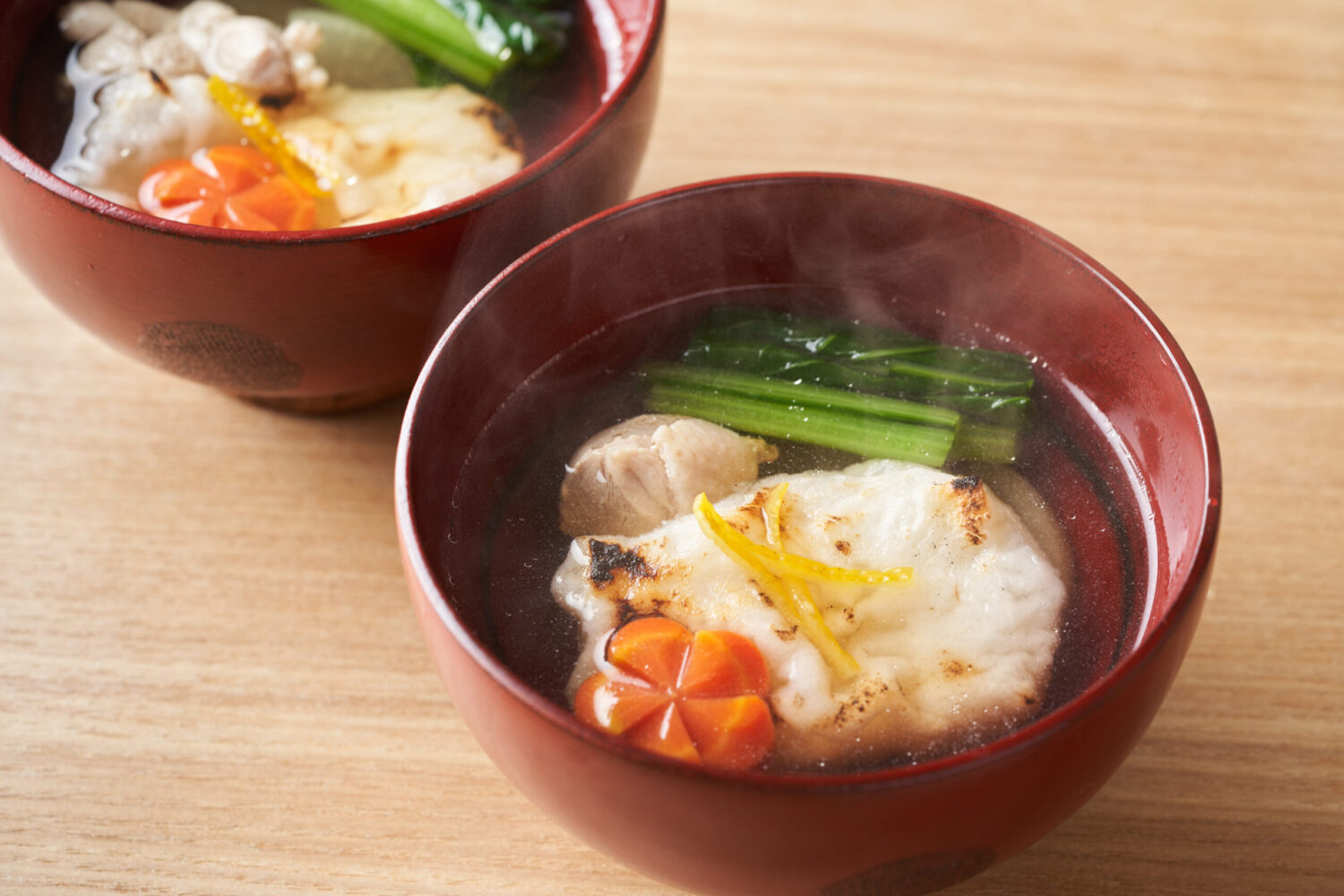
Experience Zoni, a traditional Japanese soup that holds a special place during New Year celebrations. This dish varies regionally but typically features mochi (rice cakes) simmered in a clear broth made from dashi, soy sauce, and mirin. Ingredients like chicken, leafy greens, and sometimes seafood are added depending on local traditions. Zoni is more than just a meal; it’s a cultural symbol of good fortune and longevity for the year ahead. Each spoonful offers a taste of Japanese heritage, combining simple ingredients into a flavorful, comforting soup that warms both body and soul.
Umeboshi – Pickled plum
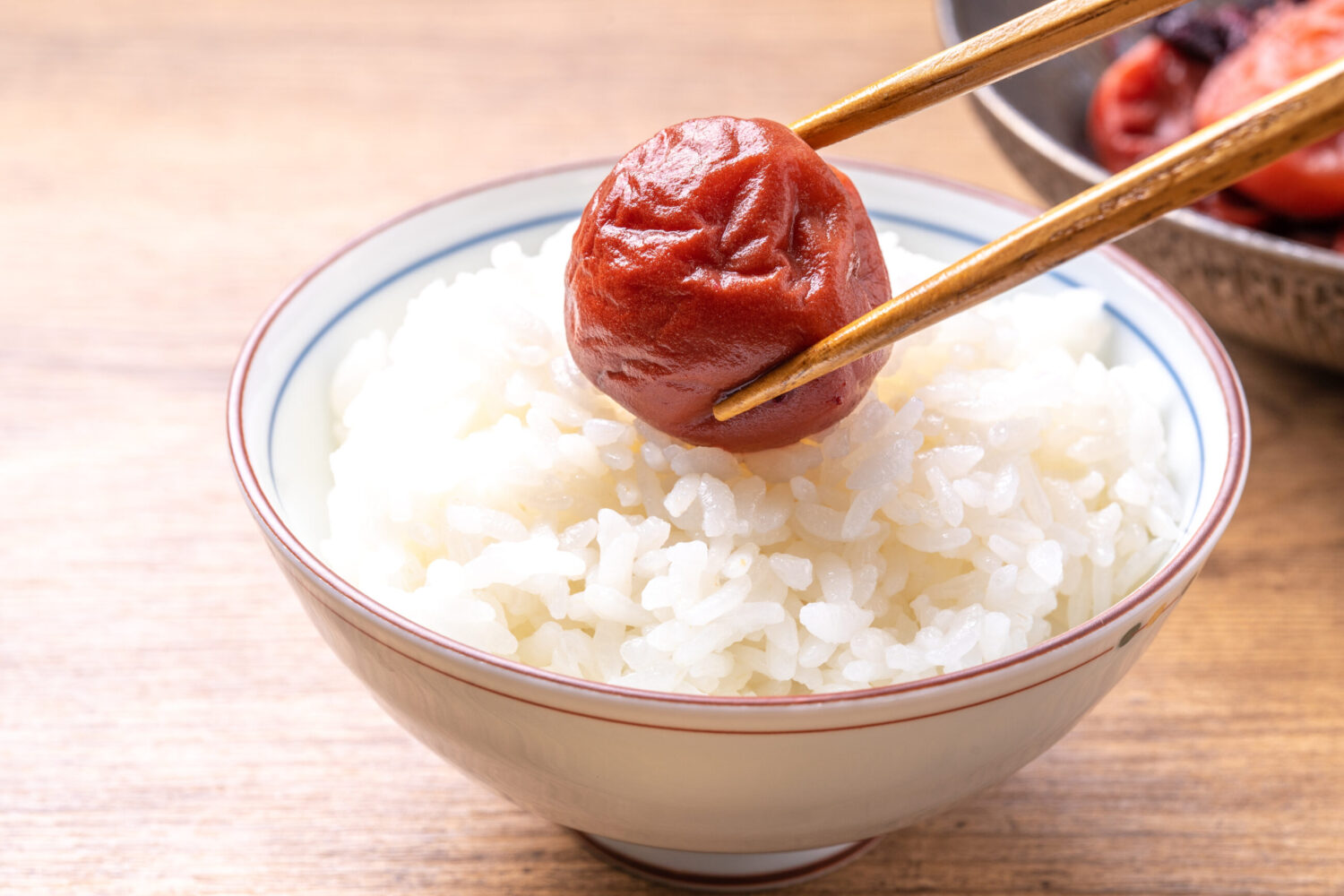
Explore the bold flavors of Umeboshi, traditional Japanese pickled plums known for their intense sourness and saltiness. Made from ume fruits, which are related to apricots and plums, these vibrant red pickles are a staple in Japanese pantries. Umeboshi are often eaten with rice or included in onigiri (rice balls) for a refreshing flavor contrast. Beyond their culinary use, these pickled plums are also valued for their purported health benefits, including aiding digestion and boosting vitality. Their unique taste and healthful properties make Umeboshi a must-try for anyone seeking to dive deep into the authentic flavors of Japan.


